
Traveling With Your Pets contains affiliate links and is a member of the Amazon Services LLC Associates Program. If you make a purchase using one of these Amazon links, I may receive compensation at no extra cost to you. See my Disclosure Policy for more information.

7 Best Travel Sickness Tablets For Dogs 2024
Table of Contents
Are you looking for the best travel sickness tablets for dogs?
You are in the right place!
Traveling with your pet is an amazing experience, but being prepared with travel sickness tablets can be the difference between a great holiday and your dog having constant travel anxiety or motion sickness!
My Golden Retriever joins me on flights and car rides whenever I travel, so I personally understand how important it is to have the right pet supplies with you . He doesn’t get carsick, but our dog growing up did and it was GROSS to be stuck in. a car with dog vomit on you.
This article will help you learn how to help dogs with car sickness. I’ll also share my secrets for the best anti-nausea solutions and travel sickness tablets for dogs to make sure your pup doesn’t get sick on your next adventure!
My Top 3 Picks: Best Dog Travel Mat
#1 TOP PICK

⭐️⭐️⭐️⭐️⭐️ Ark Naturals Happy Traveler Soft Chews ✔️ All-Natural ✔️Chewable Tablets

Ark Naturals Happy Traveler Capsules ✔️ Quality, Natural Ingredients ✔️ Work for cats & dogs

Johnsons Travel Ease Tablets ✔️Herbal Formula ✔️ Best for pups

What is motion sickness?
If you are wondering, “do dogs get car sick?” the answer is yes. Just like humans, pets can get motion sickness too!
So when planning to take your pup on a trip, it’s important to understand travel sickness in dogs.
Dog motion sickness can happen in cars, planes , trains, and boats. It occurs when the natural balance in the body is thrown off, which is common in a vehicle.
Puppy car sickness is more common than in adult dogs, as their inner ears have yet to develop fully. But older dogs can suffer, too.
Travel Anxiety can also trigger dog travel sickness.
Unfortunately, the only way to help this sometimes is by giving them travel sickness tablets, as well as giving them lots of positive affirmation and practicing spending time in the car or on a plane.
How do you spot motion sickness in dogs?
Before you can treat motion sickness in your dog, you have to be able to spot the symptoms.
And although every dog is different, the signs of motion sickness are all the same. Here are the most common signs that your dog is getting motion sickness:
- Yelping or whining
- Laziness or being reluctant
But if you see these symptoms – don’t panic. There are plenty of ways to prevent dog motion sickness during or before your trip.

How can I prevent travel sickness in my dog?
Car sickness in dogs is a common problem for dog owners.Cerenia Injectable Solutions is one of the most popular treatments (which prevents acute vomiting in dogs). But, it is only available from a veterinarian and has some negative side effects.
Instead, many people turn to natural remedies and over-the-counter solutions!
Natural Remedies to help prevent dog travel sickness
There are some natural ways to help your dog avoid getting sick in the car. These tips may not work on their own, but for some dogs, it is enough.
- Provide them with a comfortable space in the car.
- Distract your dog with a toy.
- Gradually introduce them to spending time in the car with short trips.
- Avoid feeding your pup too close to departure
- Drive slow and avoid sharp turns while traveling
- Open the windows to let in some fresh air.
Even though all these natural remedies can reduce nausea in pets and help your dog feel better while traveling, the best and most effective way is to use motion sickness pills for dogs.
The 7 Best Travel Sickness Tablets for Dogs
1. the best natural tablets: ark naturals happy traveler soft chews.
⭐️ RATING: 3.8/5 Stars
Ark Naturals Happy Traveler Soft Chews might be the best all-natural way to help your pup with car sickness or anxiety.
These soft chewable tablets are a great natural alternative to pet prescriptions and can quickly help reduce anxiety and sickness in your dog while you’re on the go.
Apart from stopping your dog’s motion sickness, they work wonders for anxious dogs that don’t like loud noises or sudden movements!
To get the most out of these chewable tablets, it’s best to give them to your dog about one hour before the trip and always follow the recommended dosage on the label.
The only downside is that these dog chews do not smell great. But I think it is a small price to pay if it fixes your dog’s travel sickness.
🤩 Check Prices!
2. Best over the counter tablets for pets: Ark Naturals Happy Traveler Capsules
Whether you are taking your dog on a long flight or a road trip, the Ark Naturals Happy Traveler Capsules will help your dog stay relaxed and happy dog for the journey.
These anti-sickness capsules are designed to reduce motion sickness, along with the anxiety and nervousness associated with traveling.
They are formulated with quality, natural ingredients, so you can rest assured that your pup is getting the best.
Plus, they’re great for both cats and dogs – so if you’re traveling with multiple pets, this could be the perfect solution!
The smell of these capsules might be off-putting, so you should give these to your dog with a tasty treat.
Remember that following the instructions will make them work effectively. And you’ll want to give these to your dog shortly before they get in the car.
3. Popular travel sickness tablets: Johnsons travel ease tablets
These are the most popular travel sickness tablets for pets on the market, especially for those concerned about having a sick puppy in their vehicle!
It’s an herbal formula that naturally reduces the effects of vehicle motion on your pup, and they are especially great for long road trips!
These tablets also work better than dog CBD since it’s easier to ensure you give them the correct amount.
However, they don’t taste great, so you’ll need to disguise them in something tasty before feeding them to your dog.
It’s worth noting that Johnson’s Travel Ease tablets might not work if your pup has a severe travel sickness problem, and avoid giving them to your dog with a full meal, as this may lose effectiveness.
With that in mind, these tablets are a fantastic way to help make your pet’s travel experiences more comfortable.

4. Easy to Administer Tablets for your dog: NOW Pet Health Supplement
⭐️ RATING: 4.1/5 Stars
“How do I stop my dog from vomiting while traveling?” The NOW Pet Health Supplement dog tablets may be your best solution!
You only need to give them to your pet once a day, and it is one of the better-tasting options on the market. This makes the whole process of giving your dog the medication a lot easier!
Dog ownders love the NOW supplement because they work quickly and effectively on dogs of all sizes.
Unlike other tablet options that take a few hours to take action, these can work within 10 minutes!
They are also handy to have for stressful situations like thunderstorms and separation.
So if you are looking for a veterinarian-recommended product to help your dog stop feeling unwell on the road, try these!

5. The Best Human Travel Sickness Tablets for Dogs: Dramamine Sickness Chewable Tablets
⭐️ RATING: 4.7/5 Stars
Travel sickness tablets are a great addition to any first aid kit, especially if your dog can use them too!
So if you and your dog suffer from travel sickness, Dramamine Sickness Chewable Tablets are a fantastic remedy.
They provide up to 24 hours of protection from nausea, dizziness, and vomiting, so you can enjoy your travels together without getting sick.
The main active ingredient is Dimenhydrinate, which is safe for both humans and dogs, so you can share the same product when needed.
It’s also an excellent option for those with difficulty swallowing pills, as the chewable tablet is easier to take.
Also, thanks to the great-tasting Raspberry Cream flavor, your pup will find these easy to take without having to mask the scent!

6. The best calming travel sickness pills for dogs: ProSense anti-stress calming tablets
With calming ingredients like chamomile, ginger, and valerian root, these tablets help reduce anxiety and stress in dogs on long trips.
The tablets also contain a blend of antioxidants to support your pup’s immune system , and they come with the NASC Quality Seal – so you know you can trust their quality.
The tablets work great for loud noises and stress, too.
To get the best results from this dog car sickness remedy, use them on an empty stomach.
I love that, unlike other calming pills, ProSense Anti-Stress Calming Tablets do not leave your dog feeling sluggish after taking them.
And while the flavor may need some improvement, these tablets are still an excellent choice for puppies and very anxious dogs who tend to get car sick!

7. The best anti-sickness chews: Nutri-vet Soft Chews
If your dog is prone to car sickness and you want to help them cope with their discomfort, Nutri-vet Soft Chews are another great solution.
These chewy treats and made by vets and contain a blend of chamomile and tryptophan to keep your pet calm and relaxed while on the road.
They also include ginger which is beneficial in settling your dog’s upset stomach .
And because these treats are so effective, you can give them to your pup before long journeys and trust that the effects will last the entire trip.
FAQs About Travel Sickness Tablets for Dogs
How do i stop my dog from vomiting while traveling.
The best ways to stop your dog from vomiting while traveling is to avoid feeding them right before your trip, create a safe space in the car, and give them a travel sickness tablet to prevent anxiety and stomach sickness.
How long does dog car sickness last?
The length of time travel sickness in dogs depends on the severity of the sickness. Sometimes, it can take up to 4 hours after you arrive at your destination for your pet to feel themselves.
Is Benadryl or Dramamine better for dogs?
There are debates about which active ingredient is better for dogs to take. But many believe Dramamine is the overall best as it has fewer side effects, and pets with digestive problems cannot take Benadryl.
Can I give my dog human motion sickness pills?
There are some human motion sickness pills that you can give to your dog too! Active ingredients such as Dimenhydrinate and Meclizine are okay for most dogs but double-check with your veterinarian first.
How do I prepare my dog for a long road trip?
Make sure your dog is comfortable by creating a safe environment. Also, some anti-nausea for dogs medicine can help and ensure your dog is well hydrated and relaxed before a long road trip.
How long of a car ride is too long for a dog?
Driving for no more than 7-8 hours at a time with your dog is the best practice. And your dog will handle long drives better if you stop for a 15-minute break every 2-3 hours to let them walk and use the toilet.
Wrap up: Travel sickness tablets for Dogs
Traveling with your dog can be challenging if they are prone to motion sickness, and even though you can help your pup overcome it in many ways, the quickest way is to use travel sickness tablets.
So, try one of these travel sickness tablets to see if it can curb some of the symptoms in your dog and make traveling more comfortable for them!
There are plenty of pet supplies out there for every budget.
So make sure you pack some tablets in your dog’s travel bag for you both to have nausea-free adventures.
There is no better way to explore and enjoy your vacation than with your dog at your side!
Read More Travel with Dogs Tips!
- 7 Best Travel Sickness Tablets For Dogs
- How to get a Dog Passport (Expert Guide)
- Dog Travel Guide
Dog Travel Checklist: What to Bring When Traveling with a Dog
- Flying With a Large Dog in Cabin: How to Guide
- West Paw Toppl Review: How to Use It for Tough Chewers
- Muttluks Review: Fleece-Lined Dog Boots That Stay On!
- Moving Abroad with Pets: 15 Expat Tips
- Pet Travel Quiz: Find Out Where to Go With your Pet
- Can I Buy a Plane Ticket For My Dog? (17 Dog-Flying Tips)
- Ultimate Guide To Flying With A Puppy
- 17 Best Hiking Boots for Dogs: Ultimate Guide
Dog Travel Planning Guide
🐶 How do you travel with a dog?
You can road trip, go camping, fly (depending on your dog’s size), go for day trips, and even live in an RV or motorhome with your dog! I’ve done all of the above with my dog, Theo.
✈️ How to travel with a dog by plane?
Check the airline requirements, if you’re flying with a large dog you’ll need to book far ahead, get a travel crate or carrier, and make sure your pet is up to date on their vaccinations. And don’t forget to bring along a leash, collapsible dish, and plenty of treats! ( Read more )
🚗 How to travel with a dog in a car?
Get a seatbelt or car-friendly crate, a seat protector, and a few toys to keep your pet safe and comfortable. Bring along items like a leash, pee pads, treats, collapsible bowl, and some calming treats for anxious dogs. Take frequent potty breaks (I recommend every 2 hours minimum).
🧳 What should I pack in my dog travel bag?
I always pack a collapsible bowl, back up leash, 50ft long leash, Toppl food toy, plenty of dog food, and a few toys for my pup when we go on our travels. It’s important to have all the essentials packed before you leave home since it can be difficult to find pet-friendly stores in some locations. ( Read more )
📝 What paperwork do I need to travel with a dog?
The paperwork you need will depend on where you’re going. You will always need your dog’s veterinary records and their vaccine status. You may also need an international health certificate, titre test, and even a spay/neuter certificate.
🐾 What is the best travel dog crate?
This collapsible crate is great for local travel and road trips. For plane travel, I recommend this hard crate for large breeds and this carrier for small breeds.
📍 What is the best way to travel with a dog?
It depends! The best way to travel will depend on you and your dog. Small dogs will have an easier time with plane travel. Large breeds are better for long term trips to minimize plane time, or road trips.
🛌 Best dog travel mat?
This non-slip, water-proof, easy to wash travel mat is my go to!
✈️ What’s the best site to buy cheap flights?
To find cheap flights, I recommend Skyscanner .
🏨 What’s the best site to find cheap hotels?
To find cheap hotels, I recommend Booking.com .
Or stay for free with Trusted Housesitters!
🚗 What’s the best site to rent cars abroad?
To find cheap rental cars, I recommend Discover Cars .
🚗 What’s the best site to find tours?
To find epic tours, I recommend Viator .
Nina Clapperton is the founder of Traveling With Your Pets. She and her golden retriever, Theo, have been to 3 countries, on dozens of road trips, and explored many cities across North America. Nina has been a full time traveler since 2017 before getting Theo, but hasn't let having a dog chain her to one spot. Now she helps thousands of people plan their pet-friendly holidays around the world.
Similar Posts

Looking for a dog travel checklist so you can have a smooth vacay? Look no further! I travel with…

Is Home Depot Dog Friendly? (2024 Guide)
Home Depot is a popular home improvement store in North America, known for its wide selection of tools and…
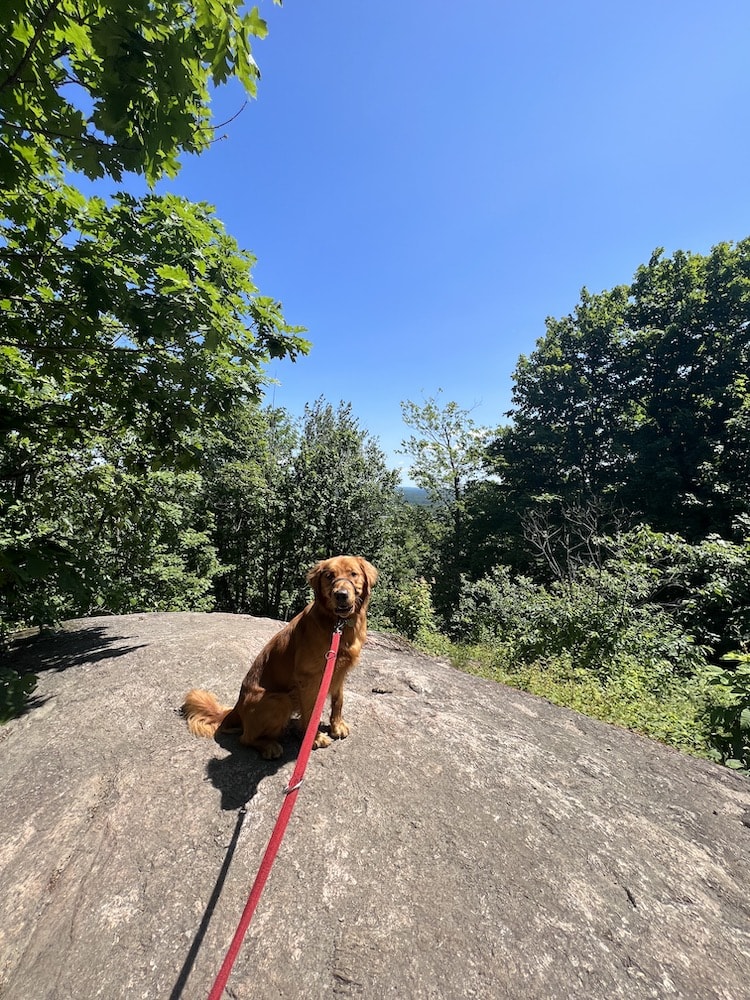
Are Golden Retrievers Good Hiking Dogs?
If you’ve got a golden retriever or are thinking of getting one, you’re probably wondering “are golden retrievers good…

How Stressful is Flying for Dogs? (And How To Help)
If you’re thinking about traveling with a dog by plane, you’re probably wondering, how stressful is flying for dogs?…

How Long Do Golden Retrievers Live?
As the owner of an English, Canadian or American golden retriever, you might wonder, “How long do golden retrievers…
How Many Stomachs Does a Dog Have?
Want to learn how many stomachs does a dog have? Is it 1, 2, 3 ,4?? Let’s dive right…
- Search Please fill out this field.
- Manage Your Subscription
- Give a Gift Subscription
- Sweepstakes
- Travel Products
- Family Travel
The 10 Best Calming Products to Travel With Dogs of 2024, According to Veterinarians
Our best overall pick went to the Thundershirt compression vest.
Katherine Alex Beaven is a Los Angeles-based travel, food and drink, and culture writer.
:max_bytes(150000):strip_icc():format(webp)/Katherine-Alex-Beaven-25bffd3fbeda41bc92974af662c60f0c.png)
In This Article
Jump to a Section
- Our top picks
- Tips for Buying
- Why Trust T+L
We independently evaluate all recommended products and services. If you click on links we provide, we may receive compensation. Learn more .
Travel + Leisure / Reese Herrington
Traveling with a dog that gets anxious can not only be stressful, but it can also be a struggle. A dog’s travel anxiety can manifest as destructive behavior, fear, or aggression. If you’re looking for an over-the-counter answer to your dog’s travel anxiety , you’ve come to the right place.
We’ve spoken to two licensed veterinarians, Dr. Steph Sheen at Fuzzy.com, and Dr. Gina Rendon, medical director at New York City’s Williamsburg Veterinary Clinic, to suss out the best calming products to call on when traveling with an anxiety-prone pup. Not only did they recommend the best products, but they also explained how they work (and don’t work) and shared tips on how to travel with your nervous, four-legged BFF . Keep in mind that many of these non-prescription products work best when used in combination with each other.
We based our recommendations on the overall effectiveness, price, accessibility, and drawbacks of a product. The wearable Thundershirt vest came in as our top pick for its effectiveness, value, ability to be reused multiple times, and quick impact. If that’s not your (or your dog’s) style, we’ve also got top picks for natural supplements, toys, carriers, CBD chews, high-tech brainwave technology, and more to keep your dog calm so the trip can carry on.
Best Overall
Thundershirt dog anxiety treatment.
It’s like a comforting hug for your dog.
Dogs can’t wear Thundershirts if they are traveling as cargo on a plane.
Looking for something to soothe your dog in those specific travel situations that spark anxiety? Thundershirts have an excellent track record and work in many cases. In times of distress, dogs are like humans and benefit from feeling safe and comforted. Thundershirts are compression vests that provide a constant, slight pressure around your dog, similar to a hug. Dr. Steph Sheen says strapping on a Thundershirt is best when used for immediate, situational anxiety, such as car rides or short flights since they work quickly and should only be worn a few hours at a time.
Thundershirts come in seven sizes, from XXS to XXL, and are made to fit dogs with chest sizes falling between nine to 50 inches. We’re also fans of packing a Thundershirt to have on your trip in case there is a storm, fireworks, or other temporary anxiety-inducing situation. However, note that if your dog is traveling as cargo on a plane, it likely won’t be allowed to wear a Thundershirt for safety reasons.
Best Calming Cap
Zoni pets happy hoodie calming cap for dogs.
It’s a great value when you want something to block loud sounds.
It may need to be used along with another calming product for maximum effectiveness.
Sensory reduction can play a big part in quelling your dog’s travel anxiety. The Happy Hoodie works by hugging your dog’s head and providing a sound barrier to reduce the loudness of the noise. Originally designed as a grooming tool to help calm dogs and lower the noise impact of hair dryers, this calming cap is also clutch in travel situations like blocking engine noise on a plane or environments with unexpected loud sounds. We like this cap because it’s well-priced, can be washed for repeated use, is easy to slip onto your dog’s head, and is compact for packing purposes. Dr. Sheen notes that some dogs may be a bit “head shy” when it comes to wearing the cap and suggests positive reinforcement training to get them used to the feeling and experience. Still, this may not be a catch-all solution for some dogs.
Best Calming Chews
Nutramax laboratories nutramax solliquin calming behavioral health supplement.
These chews use natural herbs and extracts to calm your pet.
They are designed to be taken as a daily supplement, not just before a stressful event.
Nutramax’s Solliquin is an all-natural supplement chew that helps relieve anxiety in dogs without relying on sedation. Instead, Solliquin uses a combination of calming amino acids and plant extracts for a natural approach to calming, explains Dr. Sheen. Ingredients like L-Theanine, dried whey protein, magnolia, and Phellodendron extracts work to help your pup’s brain create de-stressing alpha waves. Dosage is based on weight up to 30 pounds. These chicken-flavored chews are meant to be taken as a daily, ongoing supplement and will not give you fast-acting results. It may take a few weeks for your dog’s overall anxiety to lower.
Best Natural Calming Pills
Vetoquinol zylkene behavior.
It calms naturally, without sedation.
It may not be strong enough to work alone for some dogs.
Both Dr. Rendon and Dr. Sheen recommend Zylkene Behavioral Support Capsules as an over-the-counter calming pill. Instead of herbs or drugs, these pills use a natural extract from cow’s milk called alpha-casozepine for their calming effect. Is your dog allergic to milk? Good news! Zylkene is lactose-free. It’s suggested to start giving your dog the pills at least two days before you travel, and you should dose the capsules according to your pup’s weight. While these natural pills are lauded by many dog owners, every dog is different, and they may not work on your dog. Pills are sold in various strengths, so be sure to check the package before you purchase.
Best with CBD
Ellevet calm comfort chews.
This CBD product is backed by vet-led clinical trials.
It takes up to two hours to kick in.
Just as CBD can be used to help reduce anxiety in humans, these ElleVet Calm and Comfort Chews have been developed to take the edge off your dog’s situational anxiety. These chews use hemp-derived CBD to dial down the anxiety of car rides, flights, road trips, or busy transportation hubs. We love that ElleVet employs vets as advisors and has conducted research proving the safety efficacy of this product in different stressful situations. These chews can be cut and are suitable for dogs that weigh at least 5 pounds and should be given roughly 90 minutes to two hours before the anticipated stressful event. We wish they were a bit more fast-acting, but that’s always the catch with edibles, isn’t it?
Best Calming Carrier
Sleepypod mobile pet bed.
It also works as a certified-safe car seat.
It complies with some, but not all, airline requirements for carry-on pet carriers.
The Sleepypod Mobile Pet Bed is a three-in-one product that functions as a soft bed, mobile dog carrier, and a certified-safe car seat . According to Dr. Sheen, the benefit of using this carrier is that since it doubles as a cozy, safe bed, it’s already a designated comfort zone for your dog. The plush inner lining works like a scent soaker, keeping the bed carrier smelling familiar and the transport experience less scary. All you have to do to transform it into a carrier is a zip on the mesh topper and attach the strap. There’s also a D-ring to clip your dog in while in transit. It is Rover verified and certified by the Center for Pet Safety for dogs under 15 pounds. The size is compliant with many airline under-seat pet carrier requirements — but not all.
Best Calming Tech
Assisi animal health calmer canine anxiety treatment device.
It helps with several dog anxiety issues and promises long-term results.
It’s pricey and feels a bit experimental.
If you’re looking toward tech for an anxiety solution, the Calmer Canine is a wearable device with a vest and “halo” component that uses a targeted electromagnetic pulse to restore balance in the area of the brain that produces anxiety. It’s FDA-approved for human use, and the electromagnetic frequencies are not felt or heard by your dog. However, it takes roughly four to six weeks of two 15-minute sessions per day to achieve results. Dr. Sheen says research has shown “good success” in reducing stress levels over time. This device was originally developed to treat canine separation anxiety but is also helpful for travel anxiety.
Best Calming Distraction Toy
West paw treat dispensing dog toy puzzle.
It’s mentally stimulating and easy to clean.
It’s not designed for small dogs.
Never underestimate the power of distraction. Dr. Sheen recommends the West Paws Toppl treat puzzle chew toy, noting that food-dispensing toys are great for giving anxious pets an outlet for nervous energy. This Toppl is a soft plastic chew toy made from a dog-friendly Zogoflex material that can withstand light to moderate chomps from your nervous Nelly. The treat puzzle aspect keeps your dog interested — and distracted — by dispensing a reward for his attention. During travel, we recommend putting this toy with your dog in its carrier where it can’t roll out of reach. Need to clean it? Just pop it in the dishwasher. This product is designed for medium to large breeds, not small breeds or puppies.
Best Calming Collar
Adaptil calming pheromone collar for dog.
It provides 24/7 calming pheromones and lasts for 30 days.
It may not work on its own for all dogs.
Pheromone sprays and collars mimic the pheromones dog mothers release during breastfeeding, creating a calming effect. Dr. Rendon recommends pheromone products and considers them a must-have for travel. Slipping one of these bad boys on your goodest boy before you hit the road can help to provide continuous relaxation for your pup and take the edge off. Adaptil collars come in three sizes, making it easier to get the right fit for your lil’ puppy or adult dog. Just note that pheromone collars are a roll of the dice, and this solution may not work for your dog (or may work better when used along with another calming product).
Best Calming Spray
Thunderease dog calming pheromone spray.
It can turn any object or area into a more relaxing experience.
It needs to be resprayed every four to five hours.
Pheromone sprays are a convenient way to create multiple areas and items that relax your dog, such as a carrier or hotel room. We like that it works nearly instantly, so you don’t need to plan too far in advance — just spray where and when you need it. The Thunderease for Dogs Calming spray is made by Adaptil, leaders in the pheromone calming space. Just keep in mind that the scent fades every four to five hours and will need to be reapplied.
Tips for Buying Calming Products for Your Dog
Speak with a vet about your dog’s needs.
Although these are all over-the-counter calming options, it may be wise to speak with your vet about possible factors that would rule out the use of any products. Some facts to consider may be breed, size, health history, or existing medications.
Do a test run before leaving home
Mid-trip is not the time to find out if an anti-anxiety product doesn’t work for your dog or if your dog has an adverse reaction to a product. Always do a trial of any supplements, introduce a new carrier, or get your dog used to any wearables in advance of travel day so you can work out any kinks or come up with an alternate plan if need be.
Yawning, panting, widening of the eyes, tucked tails or ears, shaking, whining or whimpering, drooling, compulsive behaviors, and destruction of nearby items are all signs your dog is experiencing stress and/or anxiety.
There’s no one catch-all solution for curbing a dog’s anxiety, but providing mental stimulation and distraction, herbal supplements, essential oils, pheromones, and tiring a dog out with exercise are some options.
Rules will vary by airline and country. Check all requirements on your airline’s website and know the rules for entering your destination with a dog (and for returning afterward). There are usually rules for the size of the carrier, the age of your pet, and sometimes additional paperwork to be considered.
There are certain breed and carrier restrictions depending on the airline. You may also have to provide food and water and show verification of vaccination status along with a health certificate. Check with your airline for specifics.
Why Trust Travel + Leisure
Katherine Alex Beaven is a writer covering travel, food and drink, and culture. For these recommendations, she relied on expert advice from two licensed veterinarians, research, and personal experience traveling with a pet. While researching calming travel products for dogs, we spoke to Dr. Steph Sheen at Fuzzy.com and Dr. Gina Rendon, medical director at New York City’s Williamsburg Veterinary Clinic,
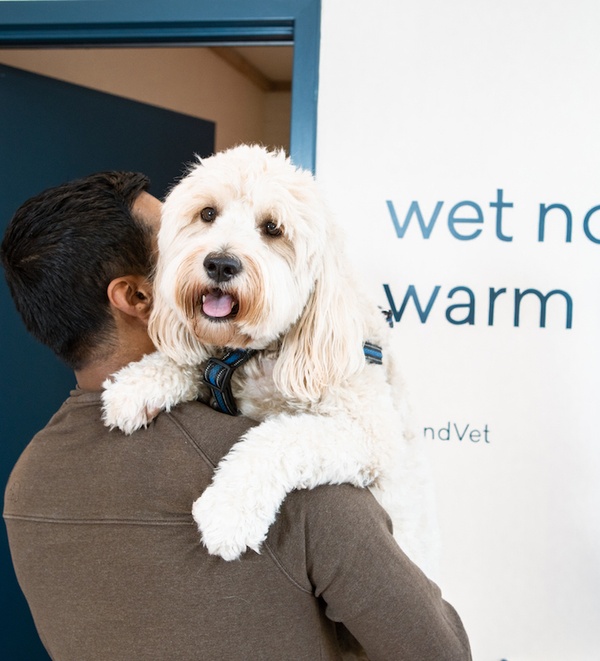
Dog Sedatives: When and How to Use Them
One of the things we love about dogs is their natural joy and playfulness. However, sometimes dogs experience fear, anxiety, and apprehension, just like humans.
Sedatives, training/behavior modification, and natural remedies are some of the tools available to help dogs with fear or stress.
Below, we’ll discuss ways to use sedatives safely and effectively in dogs…
When Do Dogs Need Sedatives?
Some pups go their whole lives without needing a sedative. Other pets suffer from long-term anxiety issues, such as separation anxiety, to the point where their safety and quality of life are greatly impacted. Many pups fall somewhere between these two extremes.
There are certain situations in which a reasonable amount of anxiety is expected, such as during a vet visit or when a new pet is adopted into the home. And some dogs experience short-term but intense anxiety during travel , grooming, toenail trims, or storms.
If a dog’s anxiety is frequent/long-term, severe, or elevated to the point where safety becomes a concern, they’d likely benefit from sedation.
How Do I Know If My Dog Is Anxious?
Some symptoms of fear, nervousness, or anxiety in dogs are obvious, while others are subtle. Some signs to watch for include:
Attempts to escape. This could mean anything from turning away at the door of the vet hospital to full-blown panic and destructive behaviors.
Ears pulled back.
Crouching or making themselves as small as possible.
Tail tucked between the legs.
“Whale eyes,” which means eyes that are open very wide. The whites of the eyes may be more prominent than usual. They also may be avoiding eye contact.
Tense muscles.
Bathroom accidents or anal gland release.
Barking excessively.
Sometimes, growling, showing teeth, or other signs of aggression, as aggressive behaviors are often rooted in fear or anxiety in an otherwise friendly dog.
Affected dogs may show just 1-2 symptoms or several. A pup’s symptoms can help guide diagnosis and treatment. So try to observe as much as possible.
S ince some of the above symptoms can also indicate a medical condition, your dog’s veterinarian may recommend diagnostic testing such as blood work prior to using a sedative. It is also recommended to ensure that vital organ function is adequate before starting long-term behavioral modification medications.
Need a vet? Book a visit.
How Is Anxiety In Dogs Treated?
Behavior modification (training a dog to be less fearful and respond to stressful stimuli in healthier ways) is always indicated for dogs with anxiety.
Behavioral modification and medications often work well together. Medications allow a dog to be calm enough so that training is effective. Meanwhile, training addresses the root cause, which may allow a dog to eventually discontinue their anxiety medications (or at least use them less often or at a lower dose).
Behavior modification is crucial for separation anxiety and other long-term issues. But it can also help in short-term situations.
For example, if a pup is nervous about grooming visits, it may help to briefly stop by the groomer’s office and give the dog a treat. When this is repeated over time, a dog may grow to think of the groomer’s office as a fun place rather than a scary place. This is actually why we install treat bars at the front of each of our clinics and encourage our clinics to stop by for a treat — we want the pups to associate us with something enjoyable.
Behavior modification done properly can change a dog and pet parent’s life for the better. But, done improperly, it can reinforce anxious behaviors.
Therefore, behavior modification should always be done under the guidance of a professional — your veterinarian, a veterinary behaviorist, or a dog trainer with a lot of knowledge in experience in anxiety issues.
What Are Some Natural Remedies for Dog Anxiety?
For dogs with mild anxiety, a vet may recommend starting with these therapies prior to prescribing a sedative or anxiety medication:
Training and behavior modification, as described above.
Supplements, such as L-theanine, melatonin, Zylkene (hydrolyzed milk protein), or other calming supplements formulated for dogs.
Pheromone products (DAP or dog appeasing pheromone), which emit calming dog scent signals.
A Thundershirt or other body wrap, which can provide comfort by mimicking swaddling.
Certain probiotics, such as Purina Calming Care, have been shown to reduce certain anxieties
Always check with your vet before giving any new medication or supplement to make sure it’s safe for your pup and won’t interact with any medications they are already taking.
Which Sedatives Are Used for Dogs?
Each pup has unique needs. If a dog tranquilizer or sedative is needed, a vet will consider factors such as how severe a dog’s symptoms are, how long the anxiety has been present, a dog’s medical history, and whether a dog is taking any medications or supplements that could interact with a sedative.
Additionally, a vet will consider all the effects a medication may have on a dog:
- Some medications make a dog feel sleepy rather than relieving anxiety. These medications may help with short-term situations (such as during a yearly vet visit or for promoting rest in a dog who’s recovering from knee surgery), but might not be a good choice for a dog with severe anxiety.
- Tranquilizers are medications that have a calming or anti-anxiety effect, but don’t necessarily cause sedation or drowsiness (although some drugs may cause both).
- Some medications deliver pain relief, while others do not. Pain relief may be beneficial for older, arthritic dogs who tense their muscles when they’re nervous and therefore get sore after a car ride or grooming visit, for example.
With all this in mind, below are some of the most commonly used dog sedatives.
Benadryl (Diphenhydramine) is not technically a sedative. It’s an antihistamine that’s commonly used for relieving allergy symptoms. However, sedation is a very common side effect.
Benadryl is an over-the-counter medication with a good safety margin. However, it’s still important to check with your vet for the right dose and formulation (note: diphenhydramine should be the only active ingredient; don’t use Benadryl with decongestants or other combination products).
Benadryl may be a good dog sedative for car travel, as it also helps with mild car sickness.
Dry mouth or an increased heart rate are fairly common side effects. Rarely, some dogs will have an atypical response and be excitable rather than sedate.
Gabapentin is a medication that can be used for several purposes, including seizure control, anxiety relief, sedation, and pain management. It’s a common dog sedative for grooming, travel, vet visits, and other short-term events.
Gabapentin is generally considered safe in healthy pets, with minimal side effects.
Trazodone can both sedate a dog and relieve anxiety. This is a good dog sedative for grooming, veterinary visits, thunderstorms/fireworks, and other short-term stressful events. Trazodone can take 1-2 hours to take effect and can last for about 8 hours- so it can be given multiple times during an anxiety inducing event.
Side effects include low blood pressure, so trazodone may be used cautiously or avoided in patients with certain health conditions.
Benzodiazepines (Valium, Xanax, Etc.)
These drugs help with dogs with anxiety during stressful times (thunderstorms, vet visits, grooming, travel, or fireworks), but they usually don’t have strong sedative effects.
Benzodiazepines are generally considered safe, but may be avoided in dogs with certain underlying health conditions. Additionally, in some dogs, they may cause excitement rather than calmness.
Drugs for Long-term Anxiety Issues
Some dogs, such as those with separation anxiety or severe fear of thunderstorms, may need to take daily medications for a longer period of time. Common medication categories include selective serotonin reuptake inhibitors (SSRIs) and tricyclic antidepressants. Popular options include fluoxetine, clomipramine, and amitriptyline. We generally do not recommend using SSRIs without a behavior modification training plan in place, as they are not as effective on their own.
Side effects vary, but common ones include stomach upset, heart rate changes, sedation, or excitability. These drugs must be avoided or used cautiously in dogs with certain underlying health conditions.
Injectable Sedation
For some pups, oral medication doesn’t provide enough sedation or anxiety relief. These pets may need injectable sedation administered by a veterinarian during a veterinary checkup, toenail trim, x-rays, or other procedures.
Injectable drugs at a veterinarian’s office are typically stronger than oral medications that are sent home, and thus only administered by veterinary professionals who are trained and prepared to monitor a pet to ensure their heart rate, breathing, and temperature all remain normal during sedation.
What Else Should I Know About Sedatives and Dogs?
It’s important to understand that sedating a dog often requires trial and error to find the best medication and dose, since each dog may respond to sedation differently.
Also, many sedatives can be “overridden” by stress and excitement. So even if a pup had a great response to sedation on one occasion, they may have a different response if they’re more worked up the next time.
To combat this issue, keep a sedated dog as calm as possible. Talk in a quiet and soothing voice, avoid loud noises, and provide a dark, quiet place to rest.
Below are some additional important tips for sedating a dog.
- Many vets recommend a “trial run” for short-term sedatives. For example, if using a dog sedative for car travel, give your pup a dose at home before the big travel day to make sure the medication works the way you want it to.
- Certain sedatives affect a dog’s ability to regulate their body temperature and may make accidents more likely (i.e. dogs should avoid stairs while sedated). Be sure to monitor your pup until they’re more awake, or as advised by your vet.
- Veterinarians may use a combination of two sedatives together. Often, this achieves great sedation or tranquilization while reducing the risk of side effects.
- However, some drugs are not safe to combine (in particular, more than one SSRI should not be used together), so don’t try to do combinations without your vet’s recommendation.
- Many airlines don’t allow sedatives during travel, due to safety risks. This is especially true for pets flying in cargo who can’t be monitored, and for short-nosed breeds who are more prone to respiratory distress and may have more difficulty regulating their body temperature.
As you can see, dog sedatives are not one-size-fits-all. But after consulting with a veterinarian, most pet parents can find an option that works well for keeping their pup relaxed, happy, and safe.
Could your dog benefit from sedation? Schedule a consultation with one of our caring veterinarians to learn more.
About the Author

Better care, Right when you need it

- Message Boards
- Search Main Page
- Search Feeback
- Search Help
- Search Preferences
- Library Main Page
- VINcyclopedia of Diseases (Formerly Associate)
- Calculators
- Drug Resources
- Drug Resources (mobile)
- Proceedings
- Specialty Centers
- Student Center
- Learn Anatomy in 3D
- Library quick links
- Specialty Center
- VIN Veterinary Drug Handbook
Library main page
- Library Home
- Books & VINcyclopedia of Diseases (Formerly Associate)
- Calculators & Conversion Tables
- Clinical Research & Surveys
- Dictionaries
- Forms & Handouts
- Guidelines, Notes, Case Studies, FAQs
- Practice Management Aids
- Procedures & Techniques
- Public Health & Disaster Management
- Rounds & Discussions
- The Student Center
- Vet-to-Vets About pages
- Website of the Week (WOW)
- Miscellaneous
- VIN Mobile Help
- CattleDog Publishing
- Veterinary Partner
- VetQuest Classifieds
- VetzInsight
- VIN Foundation
- VIN News Service
- VIN Practice Communications

- MyActivities
- Launch VIN Chat
- Change Your Password
- Renew Membership
- Update Signature
- Update Credit Card
Email Document
email sent.

Search this Resource
Table of contents.
- Anesthesia & Analgesia
- Canine Rehabiltation and Biological Therapy
- Case Rounds
- CVMA - Accessible Veterinary Care
- CVMA - Interventional Medicine / Radiology
- CVMA - Social Media
- CVMA - Welfare and Forensics
- CVMA Behavior
- CVMA Business Management
- CVMA Cytology
- CVMA Dentistry
- CVMA Dermatology
- CVMA Equine Welfare
- CVMA Exotics
- CVMA Global Summit: The Gold Standard of Animal Welfare
- CVMA Integrative Medicine
- CVMA Ophthalmology
- Diagnostic Imaging
- Emergency Ultrasound
- Endocrinology
- Equine Diagnostic Imaging
- Feline Medicine
- Feline Medicine: Rehabilitation
- Food for Thought
- Hematology, Transfusions, Liver
- Infectious Diseases
- IVAPM - Management of Acute Pain
- Medical Oncology
- Approach Mast Cell Tumors
- Diagnose Causes of Pulmonary Patterns
- Manage Pets of Immunocompromised Owners
- Medicate Fear of Travel & Veterinary Visit
- Ventral Femoral Head & Neck Ostectomy
- Primary Glucocorticoid Deficiency
- Treat Canine Parvovirus Infection
- Treat Cats That Chew Home & Hair
- Treat Feline Hypertrophic Cardiomyopathy
- Treat Feline Lower Urinary Tract Disease
- Treat Gastroesophageal Reflux & Hiatal Hernia
- Treat GI Dysmotility in the ICU
- Treat Perioperative Nausea & Vomiting
- Treat Postoperative Abdominal Pain
- Ophthalmology
- Orthopedic Surgery
- Practice & Team Development
- Professional Wellness
- Respiratory
- Soft Tissue Surgery
- Soft Tissue Surgery & Gastroenterology
- Soft Tissue Surgery & Miscellanous
- Surgical Oncology
- Theriogenology
- Veterinary Technicians
- WAVMA for Vet Techs
- WSAVA Global Nutrition Council
- WSAVA GPC - Management of Chronic Pain
- WSAVA Hereditary Diseases
- WSAVA One Health
- WSAVA Welfare
- WSAVA Welfare Low Stress Handling
Medicating Fear of Travel and Veterinary Visits
While proactive measures are essential to prevent and alleviate fear, anxiety and stress (FAS) and make for a fear free veterinary experience, many pets arrive from travel fearful or anxious, or become fearful, anxious, or painful during the visit. In fact, 77.8% of both dogs and cats are reported to be fearful even before entering the clinic, and over half of the cats are stressed before leaving home. 1,2 In dogs, 74% were fearful when the veterinarian approached and 11% were aggressive. In cats, 85% were fearful on the exam table and 9% were aggressive.
Using an FAS scale, pets should be continually monitored and assessed from travel to hospital to home, and if signs of FAS arise or begin to escalate, recognize , stop and revise to a) be able to proceed calmly and positively b) avoid some or all of the procedures that are not immediately necessary or can wait for a future visit with a modified approach or c) use medication immediately, prior to a future visit or both. Medication addresses the pet’s emotional and physical welfare, helps to ensure safety and successful completion of the procedures, prevents further conditioning of fear of handling and veterinary visits, and can provide for more accurate screening and diagnostic findings.
Pre-Visit Medication
For medications to be effective, they must be administered before the fearful event and at a dose and frequency to achieve optimal effect. As there is extensive individual variability, drugs should be assessed in advance of the fear-evoking situation, to determine effect, side effects, dose, onset to peak effect, duration, frequency and combination use. Depending on the duration of effect, it might be advisable to combine drugs, give an additional dose 8–12 hours in advance or to begin one or more of the medications two to three days in advance.
Natural products might be used alone or combined with drugs. Dog-appeasing pheromone and feline F3 cheek gland pheromone can help to reduce FAS during travel, veterinary exams and hospitalization. A reduction in anxiety might also be achieved with alpha-casozepine, L-theanine, an L-theanine supplement containing Magnolia officinalis , Phellodendron amurense and whey protein, therapeutic diets supplemented with alpha-casozepine and tryptophan, aromatherapy, melatonin and a Souroubea spp. (betulinic acid) and Platanus spp. supplement.
For mild to moderate fear and anxiety in dogs, trazodone, clonidine, benzodiazepines (e.g. alprazolam, diazepam, lorazepam), gabapentin, imepitoin or dexmedetomidine oromucosal gel might be effective for car ride anxiety, veterinary visits and procedures. 3 In cats, gabapentin, trazodone and benzodiazepines (e.g. lorazepam, alprazolam) can be effective. 4,5 Buspirone might also be considered in dogs and cats although best started a week or more in advance.
If single products are not sufficiently effective, combinations should be considered. For additional sedation, phenobarbital or acepromazine might be added. Where indicated, also prescribe medications for pain, nausea and as gastrointestinal protectants.
For increased sedation in healthy, fractious pets, transmucosal acepromazine, dexmedetomidine, detomidine gel in dogs, or buprenorphine in cats might be effective given 30–60 minutes in advance. 6 For more intense fear, a transmucosal combination of dexmedetomidine plus narcotic might be considered (e.g. buprenorphine in cats or butorphanol in dogs), mixed with honey, molasses or maple syrup to increase viscosity, enhance contact with mucosa and slow absorption.
Before the pet leaves the hospital, also consider medication to address the pet’s mental (FAS) and physical state (pain, discomfort, gastrointestinal upset, nausea) for travel home and reintroduction to the household.
Pain and Anxiety
Pain management is essential for addressing welfare. Pain increases stress which further exacerbates pain and can condition fear of handling, stimuli and environments such as the veterinary hospital. In fact, pre-operative fear and anxiety may contribute to increased post-operative pain and slower recovery. Therefore, to prevent or alleviate FAS, pain management must be addressed, while to effectively manage pain, FAS must be addressed.
Injectable Sedation
Medicating before the pet is stressed is safest, most effective and requires the lowest dose. Sedation before stress addresses the physical and emotional health and welfare of the pet, helps to ensure safety and allows for the procedure to be successfully completed. An alpha 2 agonist such as dexmedetomidine can sedate, reduce anxiety and provide pain management. Dexmedetomidine should be avoided in pets with cardiovascular compromise due to the potential for vasoconstriction and hypertension. As levels of sedation with dexmedetomidine alone are variable, optimal sedation can best be achieved with low dose intramuscular dexmedetomidine combined with a narcotic such as butorphanol. 7 Midazolam might be added as an anxiolytic, muscle relaxant, and potential amnesic (but might lead to paradoxical excitation). In place of butorphanol, buprenorphine might provide more analgesia but less sedation, while mu agonists such as hydromorphone and morphine offer greater pain control and sedation and are reversible. Dexmedetomidine can be reversed with atipamezole for faster recovery. However, if the patient is not reversed, recovery may be smoother and less stressful. As an alternative to dexmedetomidine, acepromazine might be substituted; however, acepromazine has a shorter duration of action, less profound sedation, no analgesic or anxiolytic effect and is not reversable. In more fractious patients or for greater chemical restraint, ketamine or alfaxalone for cats and small dogs might be added. 7
In a recent study when manual restraint was compared to dexmedetomidine and butorphanol or to dexmedetomidine alone, manual restraint required more personnel and longer contact time, while the combination of dexmedetomidine and butorphanol required less (or no) restraint, less time and had the best behavioral and cooperative scores. Response to dexmedetomidine alone was intermediate. 9 This is consistent with human studies in which patient tractability, costs, and hospital stays are shortened in patients sedated with dexmedetomidine.
Doses for oral pre-medication
Doses for transmucosal administration
Doses for intramuscular sedation
a. For moderate pain can substitute buprenorphine at 0.01–0.03 mg/kg. For moderate to severe pain can substitute morphine at 0.3–2 mg/kg (dog) or 0.05–0.3 mg/kg (cat), or hydromorphone at 0.05–0.2 mg/kg (dog) or 0.05–0.1 mg/kg (cat) or for greater pain management methadone 0.3–0.5 mg/kg (dog) or 0.3 mg/kg (cat). b. Increase to 0.04 mg/kg in dogs and cats if greater sedation required. c. Can substitute acepromazine at 0.01–0.03 mg/kg dogs and 0.03–0.5 mg/kg cats (up to maximum 0.2 mg/kg dogs or cats) or alfaxalone at 2–5 mg/kg in cats. d. May provide anxiolytic, muscle relaxation and amnesic effect but may cause paradoxical excitation. For geriatric or ill dogs and cats: Butorphanol 0.2–0.4 mg/kg+midazolam 0.2 mg/kg.
1. Mariti C, Bowen J, Campa S, Grebe G, Sighieri C, Gazzano A. Guardians’ perceptions of cats’ welfare and behavior regarding veterinary visits. J Appl Anim Welf Sci. 2016;19(4):375–384.
2. Mariti C, Pierantoni L, Sighieri C, Gazzano A. Guardians’ perceptions of dogs’ welfare and behaviors related to visiting the veterinary clinic. J Appl Welf Sci . 2017;20(1):24–33.
3. Korpivaara M, Huhtinen M, Aspergren J, et al . Dexemedetomidine oromucosal gel for alleviation of fear and anxiety in dogs during minor veterinary or husbandry procedures. In: Proceedings from The 11th International Veterinary Behaviour Meeting, September 14–16, 2017; Samorin, Slovakia.
4. Stevens BJ, Frantz EM, Orlando JM, et al. Efficacy of a single dose of trazodone hydrochloride given to cats prior to veterinary visits to reduce signs of transport- and examination-related anxiety. J Am Vet Med Assoc. 2016;249(2):202–207.
5. van Haaften KA, Forsythe LRE, Stelow EA, Bain MJ. Effects of a single pre-appointment dose of gabapentin on signs of stress in cats during transportation and veterinary examination. J Am Vet Med Assoc. 2017;251(10):1175–1181.
6. Santos LC, Ludders JW, Erb HN, Basher KL, Kirch P, Gleed RD. Sedative and cardiorespiratory effects of dexmedetomidine and buprenorphine administered to cats via transmucosal and intramuscular routes. Vet Anaesth Analg . 2010;37(5):417–424.
7. Ko JC, Barletta M, Sen I, et al . Influence of ketamine on the cardiopulmonary effects of intramuscular administration of dexmedetomidine-buprenorphine with subsequent reversal with atipamezole in dogs. J Am Vet Med Assoc . 2013;242(3):339–345.
(VIN editor: References 8 and 9 not available at time of publication.)
G. Landsberg Vice President Veterinary Affairs CanCog Technologies Fergus, ON, Canada
A Complete Guide to Travel Sickness Tablets For Dogs

- Introduction
Similar to us humans, dogs can also experience motion sickness, causing symptoms such as vomiting, excessive drooling, and restlessness.
We think it’s super important for pet owners to understand the usefulness of travel sickness tablets for dogs, as they can make the entire travel experience less stressful for both you and your pet. Travel sickness tablets can alleviate the symptoms of travel sickness, making the journey more comfortable and enjoyable for everyone involved, especially if your pet suffers from travel anxiety.
In this article, we will explore the causes and symptoms of travel sickness in dogs, the benefits of using travel sickness tablets, and some of the best options available on the market.
- Understanding travel sickness in dogs

Travel sickness, also known as motion sickness, is a common condition that can affect dogs during long car rides or trips. This condition is caused by somewhat of a mismatch between the visual and vestibular systems - ultimately leading to confusion in the brain and resulting in symptoms such as nausea, vomiting, and restlessness.
Dogs are particularly susceptible to motion sickness because their vestibular system, which is responsible for balance and orientation, is more sensitive than ours. Understanding the causes and symptoms of travel sickness in dogs is crucial for pet owners and can help you to take appropriate measures to alleviate any discomfort and ensure a pleasant travel experience for your pet.
There are several causes of travel sickness in dogs including:
A history of motion sickness
Existent ill health
Bumpy terrain
Puppies and young dogs are more prone to motion sickness due to their underdeveloped vestibular systems, which can make them more sensitive to motion. Anxiety and stress can also exacerbate travel sickness, as they can increase a dog's heart rate and make them more prone to nausea and vomiting. Additionally, factors such as winding roads, bumpy terrain, and the sight and smell of unfamiliar surroundings can also contribute to motion sickness in dogs.
Symptoms of travel sickness in dogs can vary from mild to severe and can include:
Restlessness
Reluctance to get into a car
These symptoms can occur within a few minutes of starting the car ride and can last for several hours, depending on the severity of the motion sickness. It's important you pay close attention to your dog's behaviour during car rides, particularly if they are prone to travel sickness. Identifying the symptoms early on and taking appropriate measures, such as administering anti-nausea medication such as travel sickness tablets, which can help alleviate your pet's discomfort and prevent further distress.
Not to go all serious but having a poorly pup in the back of your car can also cause a distraction to your driving and result in a road accident. Getting your dog’s travel sickness under control before any holidays or trips away will result in a smooth journey for all.
- How travel sickness tablets work

Travel sickness tablets for dogs work by reducing the sensitivity of the dog's vestibular system, which in turn, helps to alleviate the symptoms of motion sickness.
There are two main types of travel sickness tablets for dogs: antihistamines and phenothiazines. Antihistamines work by blocking histamine receptors in the brain, which can help reduce your dog's sensitivity to motion. Phenothiazines, such as acepromazine and chlorpromazine, work by blocking dopamine receptors in the brain, which can help reduce nausea and vomiting.
While travel sickness tablets can be effective in alleviating the symptoms of travel sickness, they can also have potential side effects. Antihistamines can cause drowsiness, dry mouth, and urinary retention in some dogs, while phenothiazines can cause sedation, low blood pressure, and an increased risk of seizures in some dogs.
If you think travel sickness tablets could help your pet, it’s important to speak with your veterinarian before administering any form of medication to your dog to ensure that they are safe and appropriate for your pet's individual needs. Additionally, it's important to follow the recommended dosage and monitor your dog closely for any signs of adverse reactions. With proper use, travel sickness tablets can be a safe and effective solution to alleviate motion sickness in dogs and make travel more enjoyable for both you and your pet.
If you’re interested in finding out more about the benefits of travel sickness tablets and are a Waggel member , why not speak to a vet with Joii? Joii is a 24/7 online vet care provider that can connect you with a professional in just minutes. Consultations with Joii are free for all existing Waggel members or £28 per session for non-Waggel members.
- Choosing the right travel sickness tablets for your dog

When choosing travel sickness tablets for your dog, there are several factors to consider. Firstly, it's important to choose a tablet that is appropriate for your dog's weight and size, as the dosage will vary depending on these factors. Additionally, it's important to consider any underlying health conditions that your dog may have, as some medications may not be suitable for dogs with certain medical conditions. It's also important to read the label carefully and check the ingredients to ensure that the tablet is safe and effective for your dog.
Selecting the right dosage for your dog is crucial to ensure that the travel sickness tablet is effective and safe. It's equally important to follow the recommended dosage on the label or as prescribed by your veterinarian as overdosing can have serious adverse effects on your dog's health. If you are unsure about the correct dosage for your dog, consult with your veterinarian before administering any medication.
Your vet can advise you on the appropriate medication, dosage, and any potential side effects or risks associated with the medication. Additionally, they can provide you with tips on how to administer the medication to your dog, as some dogs are a little resistant to taking tablets. To make the process easier, it's recommended to hide the tablet in a treat, their favourite food , or to use a pill pocket designed specifically for dogs.
- Alternative remedies for travel sickness
In addition to travel sickness tablets, there are several alternative remedies that can help alleviate motion sickness in dogs. Natural remedies such as ginger, peppermint, and chamomile have been known to have anti-nausea properties and can be administered to dogs in the form of teas, tinctures, or supplements.
Acupuncture and acupressure can help reduce the symptoms of motion sickness by stimulating specific pressure points in the dog's body. However, it's important to note that the effectiveness of natural remedies can vary from dog to dog, and as always, it's important to consult with your vet before administering any natural remedies to ensure that they are safe and appropriate for your dog.
Behavioural modification techniques can also be used to help alleviate motion sickness in dogs. One such technique is to gradually expose your dog to car rides and travel, starting with short trips and gradually increasing the duration of your road trips. This can help desensitise your dog to the motion of the car and reduce the risk of travel sickness.
Providing your dog with a comfortable and secure space in the car, such as a crate or car seat, can help reduce their anxiety and stress during travel. It's also important to avoid feeding your dog before a car ride and to provide them with plenty of water to help prevent dehydration and reduce the risk of nausea and vomiting.
- Preparing your dog for travel

Preparing your dog for travel can help reduce their stress and anxiety, which can in turn help to prevent travel sickness. To prepare your dog for travel, start by introducing them to a travel crate, carrier, or their designated seat in your car several weeks before the trip. Making their space as comfortable and familiar as possible by placing their favourite toys and blankets inside will also help to prepare them for travel.
Additionally, taking your dog on short car rides will help them get used to the motion of the car and associate it with positive experiences, such as going to the park or getting a treat. It's also important to make sure that your dog is up-to-date with all of their vaccinations and has all the necessary paperwork for travel, such as a health certificate or relevant documentation if you are travelling abroad. To prevent travel sickness in dogs, avoid feeding your dog before a car ride and provide them with plenty of water to help prevent dehydration. If your dog is prone to motion sickness, consider using travel sickness tablets or natural remedies to alleviate their symptoms. It's also important to avoid sudden stops or sharp turns, and to take frequent breaks to allow your dog to stretch their legs and go to the bathroom.
Before travelling with your dog, it's important to research and plan ahead to avoid common travel mistakes. This includes finding pet-friendly accommodation and checking the weather forecast for your destination to ensure that your dog is comfortable during the trip and not likely to overheat.
Make sure to pack all the necessary supplies for your dog, such as food, water, toys, and medication. It may also be helpful to have a first-aid kit on hand in case of emergencies. Lastly, make sure your dog’s microchip details are up to date and don’t forget to have them wear a collar with identification tags. By taking these precautions and planning ahead, you can ensure a safe and enjoyable travel experience for both you and your furry friend.
If you’re a Waggel member, you’ll also get free access to Pet Database where you can safely and securely store your pet’s microchip details totally free of charge.
- Tips for travelling with a dog

Travelling with a dog can be a very enjoyable experience, but it requires some extra preparation and care. To keep your dog calm when travelling, consider providing them with familiar items such as their favourite toys and blankets and taking them on a walk beforehand. You could also try playing calming music or using a pheromone diffuser, which releases natural scents that can help reduce your dog's anxiety. Additionally, make sure to provide your dog with frequent bathroom breaks and opportunities to get out of the car once in a while. For longer trips, consider packing a comfortable bed or blanket for your dog to rest on.
Managing your dog's anxiety during travel can also involve crate training. If your dog is not already accustomed to a crate or carrier, start by slowly introducing it to them and gradually increasing the amount of time they spend inside. This can help your dog feel more secure and comfortable when travelling.
It's also important to avoid leaving your dog alone in the car at any time, especially in hot weather, as this can be dangerous and can cause your dog to become anxious and severely overheated.
When packing for your dog, make sure to bring all the necessary supplies, such as food, water, treats, and medication. Don’t forget to bring a lead too! Bringing a travel crate or carrier, as well as any bedding or toys that your dog is familiar with can also help your dog to feel safe and secure.
If you plan to hike or spend time outdoors, consider packing a doggy backpack to carry your dog's supplies. By packing the right supplies and taking steps to manage your dog's anxiety, you can ensure a smooth trip every time you’re together.
- Travelling with a dog on aeroplanes
Aeroplane travel with dogs requires careful planning and preparation. Regulations for travelling with dogs on aeroplanes can vary depending on the airline and the destination. Most airlines require that dogs travel in a crate or carrier that meets specific size and safety requirements, and may mean you are required to present a health certificate from a vet before you can travel.
It's important to research the airline's policies and procedures for travelling with dogs and to make sure you have all the necessary paperwork before beginning your trip. Some airlines may have restrictions on the size and breed of dogs allowed on board, so it's important to check these guidelines as well.
Some airlines may offer specific amenities for travelling with pets, such as pet relief areas and in-flight pet care services. It's important to research your chosen airline's policies and procedures for travelling with dogs, as well as their safety record and customer reviews. Where possible, consider booking a direct flight to reduce the amount of time your dog spends in transit and to minimise their stress and anxiety.
Tips for travelling with a dog on aeroplanes include:
Acclimating your dog to a travel crate or carrier several weeks before your trip
Providing them with familiar items such as their favourite toys and blankets
Avoiding feeding your dog before the flight and providing them with plenty of water to prevent dehydration
Considering using natural remedies or medication to help alleviate your dog's anxiety or travel sickness
- Travelling with a dog in cars
Travelling with dogs in cars in the UK requires compliance with certain regulations to ensure safety for both the dog and passengers. The Highway Code outlines that dogs must be suitably restrained while in a vehicle, either with a seatbelt harness, a dog crate, or a dog guard. Failure to comply with these regulations can result in fines and points on your driving licence.
It’s also important to never leave your dog alone in a car, especially on warm or hot days, as this can lead to heatstroke and even death.
Top tips for travelling with dogs in cars in the UK include:
Acclimate your dog to the car gradually, starting with short trips and gradually building up to longer journeys to reduce anxiety and travel sickness
Provide your dog with familiar items such as their favourite toy to help them feel more comfortable during the journey
Plan your route ahead of time - taking into account rest stops and pet-friendly locations along the way
Make sure your dog is properly restrained during the journey to prevent injury in the event of an accident or sudden stop
- Travelling with a dog on trains
For those who don’t drive, travelling by train with dogs may be the next best option. However, travelling with dogs on trains in the UK requires compliance with specific regulations set by individual train companies so it’s best to do additional research. Generally, dogs are allowed on trains but they must be kept on a lead at all times. Researching your chosen train company's specific guidelines ahead of time is important as although most trains let dogs travel for free, some may require advance booking or charge an additional fee for dogs. During the journey, you must make sure your dog is well-behaved and not disruptive to other passengers. Lots of owners who regularly use trains with their dogs prefer to be seated in the quiet carriage as this helps to lessen anxiety for their dog.
Getting your dog used to the train environment before the journey can really help to reduce stress. This means taking them to a train station to get used to the sights and sounds of the platform.
Before you set off on your train journey, pack some toys for your dog to help them feel as comfortable as possible. Providing your dog with plenty of water and opportunities to go to the bathroom is also important if you are changing trains along the way.
- Travelling with a dog on boats
For those who prefer the water to the roads, boating may be an option for travelling. However, this carries certain dangers so it’s best to be clued up about travelling with your dog on a boat.
Before setting off, let your dog get used to the boat. Some dogs may have a little difficulty getting their sea legs but after a while, they should get used to the feeling of being afloat! As always, ensure your dog has access to fresh drinking water and shade to help them avoid heatstroke.
Investing in dog boots can help if your boat is exposed to the sun. Dogs absorb heat through their pads meaning the boat they’re standing on can quickly get hot to the touch. When taking your dog out on a boat for the first time, keep the trip short so your dog isn’t too overwhelmed.
A buoyancy aid can also help to protect your dog whilst on the water and in the event of an emergency. Allow them to get used to wearing a buoyancy aid before taking them out on a boat so they know what to expect.
If you’re thinking a little bit bigger and want to take your dog on a ferry , it’s best to know exactly what ferry travel requires. Most crossings require your dog to remain either in your vehicle or in one of the ferry’s specialist kennels. Travelling in the evenings or overnight can help to avoid overheating if your dog has to remain in your car.
It’s also worth noting that unless your ferry has pet-friendly cabins whereby your dog can stay with you during the journey, they’re likely to spend a lot of time alone which can be stressful and anxiety-inducing. Once the ship has sailed it is unlikely you will be able to access the car deck to see your dog (if they have remained in your car).
- Travelling with a dog on buses
Another option for those who don’t drive but want to travel with their dog is to take the bus. Most buses in the UK allow dogs to travel for free, apart from the National Express which doesn’t allow dogs at all (except for trained assistance dogs).
Unfortunately, some buses limit the number of dogs onboard to 1 or 2 which could hinder a trip that has been planned ahead of time. Dogs can also be turned away at the driver’s discretion meaning that they don’t really need to explain why. Dogs are also not permitted to travel without leads.
If you are travelling on a bus with your dog, we recommend keeping the trip as short as possible as buses can cause a lot of motion sickness for dogs (and humans). They also get hot, stuffy, and loud which can be very uncomfortable for a dog sitting on the floor.
- Common travel sickness mistakes to avoid
When travelling with a dog, it's important to know which things to avoid - this means anything likely to cause stress and discomfort for both you and your pet.
One of the most common mistakes is not giving your dog enough time to acclimate to the travel environment, whether it's a car, bus, aeroplane or train. Rushing the process can lead to increased anxiety and a nasty bout of travel sickness.
It’s also important to avoid overfeeding your dog before travel as a full stomach can increase the likelihood of travel sickness. Giving your dog a light meal several hours before travel is often recommended.
To avoid travel sickness in dogs, it's important to take precautions such as choosing the right medication, as discussed earlier, and avoiding feeding them right before travel. Patience is also key, as it may take some time for your dog to adjust to travelling. If your dog does experience travel sickness, remain calm and take steps to alleviate their symptoms such as providing fresh air and water and taking frequent breaks. In some cases, a veterinarian may need to be consulted for further treatment.
Having a dog doesn’t mean you can’t go on holiday anymore, in fact, it can make travelling even more enjoyable. However, our four-legged friends are often susceptible to travel sickness which can make any journey a little stressful.
With the right steps in place, you can avoid travel sickness or, in the worst-case scenario that your pet does become sick, know exactly what to do. If your pet is a serial travel sickness expert, we recommend speaking to your vet before any future trip and procuring suitable travel sickness tablets so they aren’t in any discomfort.
Your vet will weigh your dog and provide the most appropriate form of medication, this includes walking you through any possible side effects.
We’re sure you’ve already noticed by now but travel sickness doesn’t just come from cars - it can also arise from any form of motion such as trains, buses, and aeroplanes. Therefore, it’s best to know how to prevent it and how to treat it. This will make your future holidays and trips as enjoyable as possible for both yourself and your pet.
Travelling with your dog is a super fun experience and we hope that by reading our guide you feel confident and assured in your future trips - happy travels!
If you’re interested in reading more about pet ownership on the Waggel blog, why not check out our other articles on what to do if your puppy is breathing fast and how to get rid of pesky mites ?
Are travel sickness tablets safe for dogs?
Yes, travel sickness tablets are safe for dogs. However, before administering any form of medication to your dog, it’s best to speak to your veterinarian who can prescribe specific tablets best suited to your dog and their health requirements.
How can I tell if my dog is experiencing travel sickness?
Dogs show travel sickness symptoms in a pretty similar way to us humans. If you’re driving with your dog, for example, you may notice gagging or vomiting whenever the car is in motion. Dogs suffering from travel sickness can also drool and become lethargic.
How can I help my dog overcome travel sickness?
You can help your dog overcome travel sickness by helping them get used to their travel environment before a long journey. In addition to this, we recommend using travel sickness tablets and keeping your dog hydrated at all times. Keeping one of their favourite toys in the car, for example, can help to reduce stress levels and ultimately reduce the chances of travel sickness taking place.
Can I give my dog over-the-counter travel sickness tablets?
It's not recommended to give your dog over-the-counter travel sickness tablets without consulting with your veterinarian first. While some over-the-counter medications may be safe for dogs in certain situations, it's important to consider your dog's individual health and medical history before administering any medication. Additionally, some human medications can be harmful or even toxic to dogs.
How long does it take for travel sickness tablets to work?
The length of time it takes for travel sickness tablets to work in dogs can vary depending on the specific medication and dosage used. In general, some medications can take effect within 30 minutes to an hour after administration, while others may take longer to reach their full effectiveness. It's important to follow the instructions provided by your vet and allow enough time for the medication to take effect before beginning travel.
Throughout your journey, it’s important to monitor your dog's behaviour and symptoms to ensure the medication is working effectively and safely.
How often can you give travel sickness tablets to your dog?
The frequency with which you can give travel sickness tablets to your dog depends on the medication itself and the dosage prescribed by your vet. Some medications are prescribed for use on an as-needed basis meaning you can give them to your dog whenever they’re showing signs of travel sickness.
Others are for more frequent use and require following specific instructions to give once or twice daily. If you are unsure how often you should give travel sickness tablets to your dog, always consult your vet.
How long do travel sickness tablets last for dogs?
Each type of travel sickness tablet for dogs varies in duration and depends on other factors such as the dosage. Some medications provide relief for several hours whilst others last longer. Following the instructions of your given medication is imperative. It’s also important to monitor your dog’s behaviour and symptoms at all times to ensure the medication is working as it should. Speak to your vet if you have any concerns about the medication you have been given.
Waggel Pet Insurance
Need more help? You're in luck if you're a Waggel Pet Insurance member. Along with our excellent coverage, we offer access to a 24/7 online vet to answer all your sticky questions, especially if you need grooming assistance.
Not a member? Why not get a quote now and cover your furry friend for a range of illnesses, all while enjoying our amazing perks and rewards.
Want more like this?
Get updates from us with helpful info, advice, answers to frequently asked questions and much more.
Share this post
Related posts:.

Kennel Cough Vaccine 101: Everything You Need to Know for Your Dog's Health

Everything You Need to Know about Ticks
Get your quote.
Along with our excellent coverage, we offer access to a 24/7 online vet to answer all your sticky questions.

5 Natural Dog Sedatives for Travel Anxiety In 2024
Most of the time, a dog’s behavior is inscrutable and unpredictable. Especially when the concern is about taking them for travel along, things go a little unmanageable and tricky.
Dogs and other pets are better off on the ground than in any kind of travel. Because dogs naturally don’t have that enthusiasm to take long journeys well (both physically and mentally), they can have a hard time traveling.
However, there are certain times when taking a dog on travel becomes necessary. For circumstances like relocation, vet visits, or grooming days, pet owners can do nothing but take the stress of traveling with their dogs.
Though no matter how hard travel can prove, you always have options to help your dog with them. Wondering how? The answer is ‘SEDATIVES.’
What can I give my dog to keep him calm while flying?
Be it flying or road travel; you can always use pet sedatives to calm down your dog.
Dog sedatives are medicines or vaccines that send the pet into a partial alert and partial sleep condition. They are lighter than local anesthesia and are commonly used under high-stress conditions.
For example, your dog might barely need any sedative during road travel, but for air travels/ during flying, the use of sedation becomes necessary.
5 natural dog sedatives for travel (The Best of 2022)
Sedatives play a key role in relaxing and calming a dog during travel. Though a huge section of individuals often misuses these medications, knowingly and unknowingly. However, to lessen the misuse and side-effects of sedatives, we suggest using natural medication/ ways. Here are some top and best options amongst them which are also best under various circumstances.
NOTE: The products below though are commercial, but their formulation is based on natural sedatives. However, before using them for your dog, do an ingredient check to ensure your pet isn’t allergic to any of them.
Bach RESCUE REMEDY PET
PRICE: $18.56
Bach RESCUE is a natural product prepared with a combination of 5 natural flowers. It is a product by Dr. Bach, best known for developing the Bach flower remedies. This sedative-free calming drop formula helps dogs and other pets with anxiety issues that generally arise during traveling. The product is homeopathic, vegan, vegetarian, and entirely plant-driven.
Besides that, it is free from gluten, major allergens, sugar, and any artificial flavor. So even in the long run, using it won’t lead to any alcoholism or habit-forming issue.

- BACH RESCUE REMEDY PET DROPPER: A pet-safe RESCUE REMEDY formula to help relieve pet stress. For dogs, cats,...
- SEDATIVE-FREE CALMING DROPS: Use leading up to and during stressful pet situations like visiting the...
- TRUSTED BY PET LOVERS WORLDWIDE: Made with the original RESCUE REMEDY tincture - Dr. Bach's blend of 5 natural...
- DOCTOR DEVELOPED FORMULA: Plant-based active ingredients, homeopathic, vegan, vegetarian. FREE OF: Artificial...
- FOR PETS OF ALL BREEDS, AGES & WEIGHTS: Give 4 drops orally or with food/water as needed. Can be used with...
How to use : Give your dog about 4 drops of the formula with food/water or orally. The dose may depend upon the amount of stress and the animal’s size.
Hempseed, Chamomile & Valerian Oil for Cats & Dogs
PRICE: $25.97
This Homescape world store product is a formulation of Hempseed, Chamomile, and Valerian Oil. The oil helps in calming over-energetic, hyperactive, and anxious dogs. It also aids in relieving tension and the nervous stomach, thus promoting better sleep during travels and at home.
The oil has no additives, artificial flavors, and preservations. The hemp seed oil also aids in a healthy inflammatory response calming overall mental and physical discomfort.
Hemp Seed Oil : It is known for calming overall discomfort.
Organic Chamomile Flower & Valerian Root: This combination helps in reducing nervous tummies and calming stress.
How to use: Feed your dog about 4 to 5 drops of oil. You can give it directly to your pet’s mouth or mix it with food/ water. The formulation is safer to use 1 or 2 times a day as per requirement.

- ✅ WANT TO KEEP YOUR DOG OR CAT CALM, HAPPY & HEALTHY? Homescape Pet’s organic hempseed oil supplement for...
- ✅ OUR EASY TO ADMINISTER DROPS contain only Organic Whole Herb Chamomile, Organic Whole Herb Valerian Root,...
- ✅ SOOTHE YOUR PET NATURALLY and make life easier for both you and your dog or cat. The Homescape Pets...
- ✅ RELAX & CALM YOUR ANXIOUS OR HYPERACTIVE PET WITH OUR NATURAL SUPPLEMENT DROPS, which contain all-natural...
- ✅ HELPS IMPROVE COMPOSURE AND EASE THE STRESS of vet visits, grooming, new environments, car rides, and...
Richard’s Organics Pet Calm
PRICE: $9.02
The Richard’s Organics Pet Calm is a calming formula that aids in relieving pets’ anxiety and stress. It has proven effects on reducing hyperactivity and calming your dog’s nerves before any anxiety-causing events like air travel.
The formula is a rich blend of Valerian Extract, Chamomile Extract, Passion Flower Extract, Skull Cap Extract, and base ingredients. With 100% natural active ingredients, the oil doesn’t lead to any side effects or allergic reactions. Also, since it is drug-free, your pet won’t become habitual to its usage.

- RELIEVE PET ANXIETY AND STRESS – Richard’s Organics Pet Calm effectively treats cat and dog anxiety and...
- 100% NATURAL – Pet Calm has 100% natural active ingredients, is drug-free and safe for dogs/cats. Medicinal...
- WORKS TO CALM DOGS AND CATS – With Pet Calm, you can provide anxiety relief for dogs and cats without making...
- EASY TO USE – These pet anxiety drops are easy to use, and pets love the taste. Administer straight from the...
- EFFECTIVE AND AFFORDABLE – SynergyLab’s Richard’s Organics pet wellness and healing products are created...
How to use: Either feed 4 to 6 drops straight from the dropper into the dog’s mouth or mix it with food/ water.
LEGITPET Calming Spray for Cats and Dogs
PRICE: $8.99
The LEGITPET is a calming spray and a formula derived from mixing lavender oil, hemp seed oil, and pheromones. All of these are unique natural ingredients that deliver instant actions taking no more than 15 minutes. The formula aids in easing stress and providing relief from anxiety. And since its effects last for 6 hours, it is most ideal for use during flights.

- ✅ PET CALMING SPRAY HELPS REDUCE CAT'S & DOG'S STRESS, promotes anxiety relief and eases the tension. Bring...
- ✅ FAST WORKING – LEGITPET pheromone cat and dog calming spray eliminates stress within 15 minutes. The...
- ✅ SAFE & NATURAL – our calming spray for cats is made of 100% natural sedative essential: oils hemp.
- ✅ PERFECT FOR CATS & DOGS IN DIFFERENT CASES: vet visit, travel in a car, fireworks, sexual hunting,...
- ✅ TESTED BY VETERINARIANS - An absolutely safe and effective replacement for calming chews, treats, and...
How to use: Hold the spray bottle approximately 4 inches away and spray it on your dog’s paws. Allow 10 to 15 minutes to let the formula show signs of effectiveness.
Since it is a spray-based method, you can even repeat its usage during a flight from outside your dog’s cage (if needed).
Top 3 over the counter dog sedative for car travel
Traveling with dogs is an absolutely fun idea for humans. But when it is about dogs, experiences like travel anxiety and motion sickness can lead to uncomfortable times. Though luckily, several over-the-counter dog sedatives help in relaxing and fun car travel. Have a look at some of the best options.
- Ark Naturals Happy Traveler are natural calming treats you can find at pet stores or chemists. It comprises natural ingredients like Valerian and German Chamomile. Some of its other supporting ingredients include flaxseed oil, gelatin, whey, salt, and more. It also provides a source of beneficial intestinal bacteria and thus supports intestinal balance and a healthy immune system.

- ANXIETY RELIEF FOR DOGS & CATS: Our natural calming treats are formulated for cats and dogs to reduce anxiety...
- REDUCES SITUATIONAL & TRAVEL ANXIETY: Calm Traveler is designed to reduce anxiety and nervousness associated...
- NATURAL CALMING SUPPLEMENT: Our natural herbal calming treat is formulated with L-tryptophan, which effects...
- OCCASIONAL ANXIETY SUPPORT: Use Happy Traveler Soft Chews only when necessary with change in your pet's daily...
- CAREFULLY CRAFTED IN THE USA: Our recipe is formulated with high quality and natural ingredients that are corn...
This over-the-counter dog sedative is meant for long-distance travel, motion sickness, nervous and anxious behavior, and aggressive attitude.
NOTE: Though the calming treats are easy to digest, we still suggest you check your dog’s allergies before feeding them.
- Vetoquinol Zylkene Calming Supple ments are ideal for large dogs weighing between 32 to 132 lbs. This over-the-counter sedative is a supplement that promotes a sense of calmness in animals. The tables are clinically proven to reduce anxiety and stress without initiating any drowsy side effects. And since it is made of natural ingredients like dried hydrolyzed casein, maltodextrin, magnesium stearate, it is safe to use.

- Zylkene's formula is clinically proven to help relieve stress without the drowsy side effects
- Vet recommended to help relieve anxiety during thunderstorms, car rides, separation and more
- Zylkene's calming supplements are made with natural ingedients that are easy on sensitive stomachs
- Zylkene's dog calming & cat calming formula is taste tested and proven effective
- For best results, start giving Zylkene 1-2 days before a stress event. For short and long term use
This over-the-counter sedative supplement comes in three different counts and strength facilitating for dogs of various sizes.
NOTE : Start feeding it to your dog at least 1 to 2 days before the travel for better results.
- NaturVet Quiet Moments Calming Aid Dog Supplement is high quality and healthy supplement for dogs. It is a wholesome supplement for nervous and anxious dogs. The product contains time-release chewable tablets made up of 6 key ingredients, including Melatonin, Chamomile, Ginger, Thiamine, Passionflower, and L-Tryptophan. Melatonin is a natural neurohormone that aids in relaxing dogs but directly hits the nervous system. And with the effect, your dog might experience some drowsiness, though it will remain completely safe.

- HIGH-QUALITY HEALTH SUPPLEMENT FOR DOGS: Bring your friendly pup the calm he needs during separation, storms,...
- PET SUPPLEMENTS FOR ANXIETY: Ensure that your canine companion receives the support needed to reduce stress...
- WHOLESOME DOG SUPPLEMENTS FOR NERVOUSNESS: Each dog soft chew in this NaturVet Calming Aid dog supplement is...
- TASTY, DOG SOFT CHEW SUPPLEMENT: Help your pet stay calm and relaxed with Quiet Moments tasty soft chews....
- PET PRODUCTS YOU CAN TRUST: Since 1994, NaturVet has been serving the four-legged community with wholesome,...
NOTE : It is only meant for 12 weeks or older dogs.
Should dogs Be Sedated During Air Travel?
As long as your dog covers air travel without any issues, avoid using sedation on the innocent pet. Let’s understand it in detail,
Sedation sends an individual (human or animal) into a partial sleep and partial awake state. It makes one feel spaced out and dreamy and reduce all kind of anxiety and stress. However, as per American Veterinary Medical Association (AVMA), sedating dogs , cats, and other pets during air travel isn’t safe at all. In the state of sedation, the pet might develop the risk of heart and respiratory problems.
Dogs during air travel are enclosed in a kennel for long hours. Traveling in a cabin is still a relaxing affair since they have their owner along. Though traveling in cargo at 8,000 feet or higher with a pressurized environment, dogs under sedation might react abnormally without an owner.
This at times also leads to a situation when bringing dogs out of sedation becomes a medical challenge. Also, some dogs and mainly cats behave hyperactively after taking sedatives.
Thus, unless your dog is highly anxious and taking him on a flight is the last resort, you can rely on sedatives. And for that task, do consult your VET beforehand. However, avoid sedatives if your dog does fine without a little stress here and there.
What can I use to sedate my dog for travel?
Sedating dogs before travel is a long-used practice. However, individuals have conflicting beliefs and claim for the same. With that, the market is full of commercial dog sedatives that helps pet before air travel.
For instance, some veterinarian prescribed medications include alprazolam (brand names: Xanax® and Niravam®), gabapentin (brand name Neurontin®), trazodone (brand name Desyrel®), and more.
(NOTE: DO NOT USE SEDATIVES WITHOUT CONSULTING ANY VETERINARIAN FIRST).
Natural remedies and over-the-counter remedies include chamomile, hemp oil, catnip, lavender oil, valerian, and anti-anxiety wraps.
How long can you sedate a dog for travel?
Sedating a dog for 24 hours is normal and harmless. However, while you are sedating a dog for travel, avoid repeating the process during the flight hour.
Should we Tranquilize Your Pet During Air Travel?
Until and unless it is very necessary, avoid tranquilizing your pet during air travel. To Tranquilize is as close as to Sedate, and both can prove harmful for the pet.
In rare cases, tranquilizing the pet can also lead to severe dehydration and breathing issues. Also, a lot of airlines do not take a pet in tranquilized condition for flights.
Sedation vs. Sleep meds vs. tranquilizing dogs
The key difference between Sedation vs. Sleep meds vs. tranquilizing is their analgesic properties. While sleeping medicines and sedatives offer increased analgesia, tranquilizers offer comparatively less analgesia.
Sleeping pills/ medicine send dogs into a deep sleeping state. However, you should never give sleeping pills to your pets without consulting with a veterinarian.
Sedatives send dogs into a partial sleeping and alert state. It relaxes the pet’s nerves and keeps them from moving. But unfortunately, sedation doesn’t keep pets aware of their surroundings.
Tranquilizer sends the dog in a partial rest state, but they still can move. Again, unlike sedatives, it keeps the dog aware of its surroundings.
How do you calm a dog down on a long car ride?
Although many dogs love going on long drives, some of them might behave anxious or aggressive. But, be their behaviors is on any side of the coin, it is completed normally.
If your dog enjoys car rides, you are lucky enough. And if they don’t, then follow these tips below.
- Begin with a few short test drives, and this will help your dog normalize with it slowly.
- While your car is parked, make your dog sit inside it. First, let the windows roll down so that the pet doesn’t panic. Then, sit along to make him realize it’s safe and all normal.
- Consider keeping your car window open. Air regulation helps with motion sickness. However, if the temperature doesn’t allow roll up the window.
- Limit your dog’s food intake for a few hours before the trip.
- Exercise your dog well before the car ride. This will help the dog sleep thus stay calm during the travel.
- Give the dog plenty of opportunity for breaks. For example, consider stopping after every hour and allow your dog to take a walk/ poop+pee break.
- Take someone with you who can pat and comfort the dog during the ride.
- Let your dog drink as much water as he wants.
- Visit the vet before your trip and consult on some motion sickness medication for staying on the safer side.
- Plan the ride when the weather isn’t too hot or too cold.
How can I get my dog to sleep naturally?
Here are a couple of tips for sound sleep for your dog (Naturally):
- Set up a routine and keep things consistent. Wake up, feed, exercise, and allow your dog to sleep simultaneously for each day. Slowly, your pet will blend into the routine.
- Exercise your dog throughout the day so that he is tired and can sleep well during the night.
- Develop a comfortable sleeping space for the dog.
- Use white noise machines or sleeping machines for better sleep.
- Lastly, consider your sleeping habits, and they will aid in your dog’s sleeping habits.
- Will Benadryl sedate a dog? Giving dog Benadryl before flight for sedation
- Benadryl helps in mild car sickness, and this makes up for a good dog sedative. The usual Benadryl dosage suggested for dogs is 1 mg per pound, two to three times daily.
NOTE: Start with half a dose and observe how much does it Sedate. If that’s enough, do not go with another half. However, if it isn’t you can go for half more.
- 5 Natural Cat Sedatives for Travel Anxiety [2022]
Wrapping up…
This was all for dog sedatives. However, since sedating a dog, a child play does consult your dog’s veterinarian first. A professional will guide you well with which sedative will suit your pet best.
Related Posts
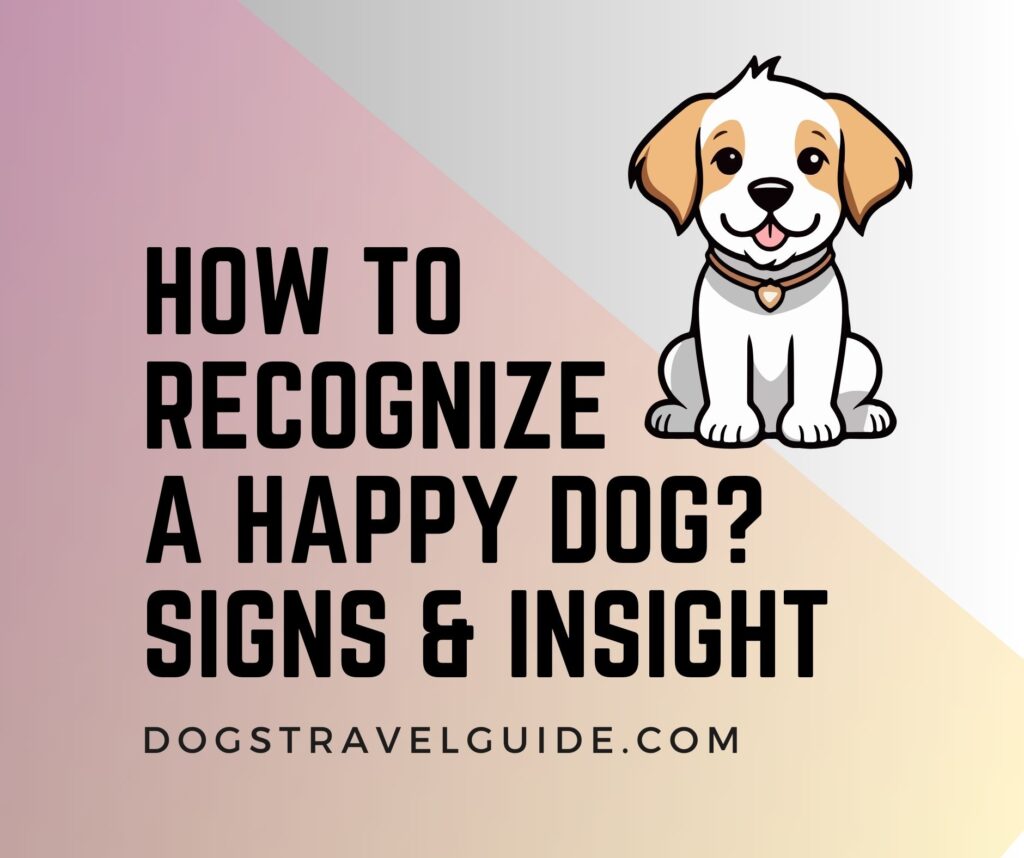
How to Recognize a Happy Dog? 15 Signs and Insights

Modern Dog Crates: How to Choose Them?

How Do You Transport A Large Dog To A Boat? 10 Tips

- SIGN UP & PRICING
- WHY IT WORKS
- FOR FACULTY
Log In to VetTechPrep
The savvy vettech.

Top 6 Travel Meds for Dogs: A Summary for Vet Techs
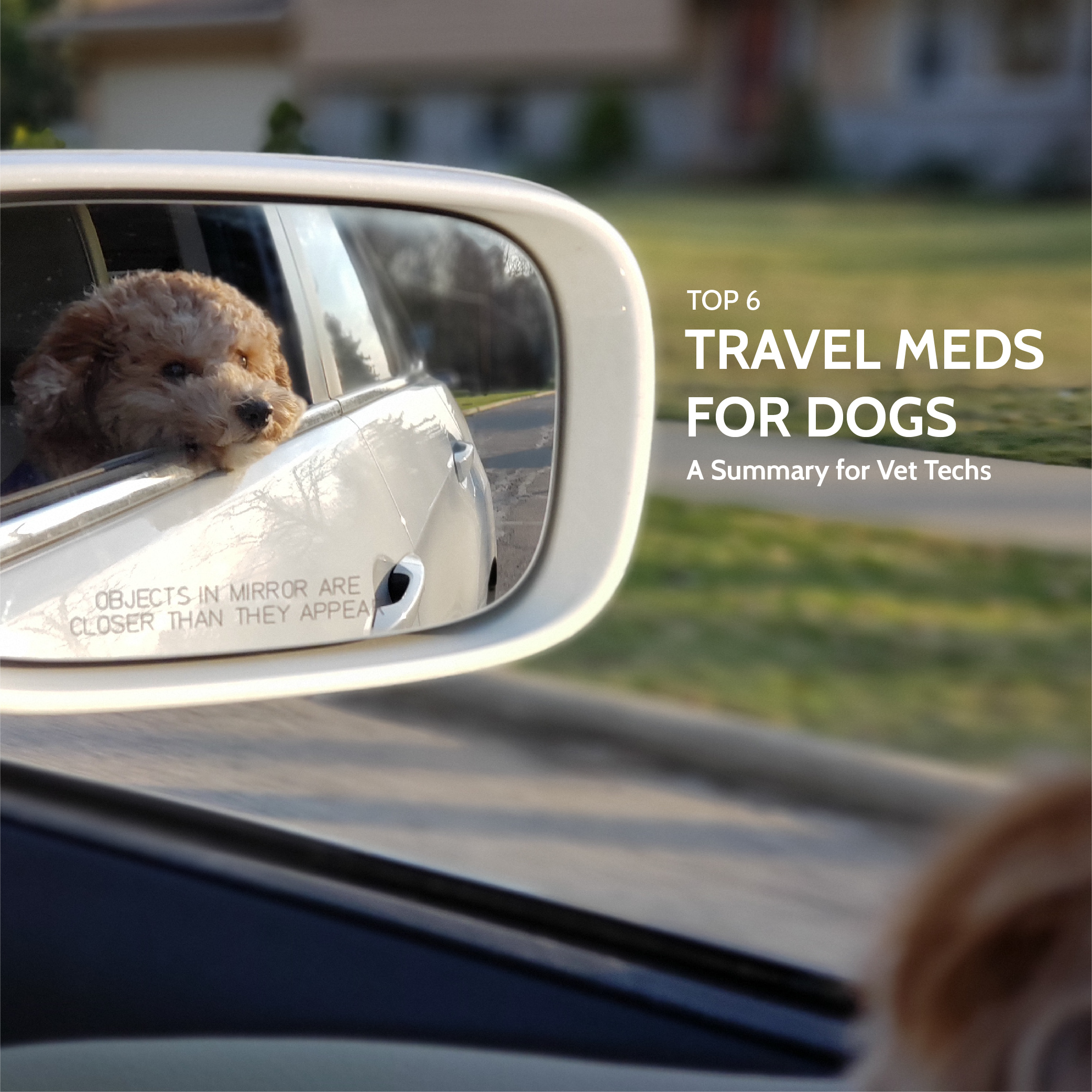
It’s officially summer, which means that many pet owners are traveling with their pets. Unfortunately, pets don’t always share the same enthusiasm for travel as their human companions! Therefore, summer is often associated with an increase in phone calls and veterinary visits for medications to help make travel easier on pets and their owners.
NOTE: In general, these medications are only recommended for pets traveling by car. Air travel poses unique risks that may be worsened by medication, so meds are not typically recommended for pets traveling by air. Ultimately, however, these decisions are the discretion of the veterinarian.
Trazodone is a newer drug; it has been studied since 2008 for use as an anti-anxiety medication in a variety of contexts.(1) Many studies have focused on the use of trazodone to keep pets calm during hospitalization or confinement. As you can probably imagine, any drug that helps pets remain calm during confinement can also offer benefits to dogs that will be taken on road trips!
Trazodone is a serotonin receptor antagonist and reuptake inhibitor (SARI) and it is regarded as a relatively safe medication. Side effects may include excessive sedation, other behavioral changes, and (rarely) gastrointestinal upset. (1) Additionally, trazodone (and other drugs used to treat anxiety) can be associated with a phenomenon known as paradoxical excitation. This means that a dog receiving this medication may become more excitable, instead of less excitable. For this reason, it is always best for owners to perform a “trial run” with any new anxiolytic (anxiety-reducing) medication before the day of travel, so that medications can be adjusted if needed.
Gabapentin has traditionally been used to manage seizures and neuropathic pain, but it has also been found to reduce anxiety in pets. (2) Although it is associated with sedation, it also appears to result in a marked reduction in anxiety for many dogs (especially during the early days of treatment). Its mechanism of action is complex and not fully understood.
In many cases, gabapentin is combined with trazodone when trazodone alone is insufficient to alleviate anxiety. Gabapentin may also be used as a sole agent for anxiety, although this is relatively uncommon (in my experience).
Alprazolam is an anxiolytic medication that is used for a variety of indications in dogs, including travel-related anxiety. Alprazolam acts by enhancing the effects of GABA, a neurotransmitter that alleviates feelings of stress and anxiety. (3)
Side effects of alprazolam include sedation, muscle relaxation, paradoxical excitation, and other behavioral effects. (3) The effective dose of alprazolam varies significantly between patients, so some degree of trial-and-error may be required. Veterinarians typically begin treatment at the low end of the dosing range, then gradually increase dosing as needed to achieve a beneficial effect.

Acepromazine
Acepromazine is a phenothiazine tranquilizer that is used to provide temporary sedation in animals. (4) It is an older drug that has long been used to sedate pets for travel and other purposes.
In recent years, however, acepromazine has been understood to be a less-than-ideal option for travel sedation. Acepromazine has a dissociative effect; animals might still sense fear but be incapable of physically demonstrating or responding to that fear. (5) In fact, studies suggest that while acepromazine may make pets appear calm during transport, it does little to reduce the pet’s actual stress level. (5) So, while acepromazine may help calm an active, excited pet, it is not the best option for a dog that is truly stressed and anxious about travel.
Cerenia ® (maropitant citrate)
While anxiety is an important concern in traveling with pets, motion sickness can be just as problematic. Cerenia ® is a medication that is FDA approved for the prevention of motion sickness in pets. This motion sickness can not only lead to nausea and vomiting, but may also play a role in travel-related anxiety for some dogs. (6)
Cerenia® works by blocking the action of substance P, a chemical found within the emetic center that plays a role in vomiting. (6) This medication should be given 2 hours before travel, on an empty stomach with a very small treat (such as peanut butter). Unlike many other drugs used to treat motion sickness, maropitant is non-sedating.
Dramamine ®
Dramamine ® is an over-the-counter medication that may prevent motion sickness in some dogs. This medication works by blocking the H1-histaminergic center of the vomiting center. Dramamine® is typically administered approximately 30 minutes before travel. Side effects include sedation, dry mouth, and possible gastrointestinal signs. (6) In my experience, Dramamine ® is less effective than Cerenia ® , but can be worthwhile for clients to try if they are heading out on a trip and do not have time to stop by the veterinary clinic for prescription meds. Keep in mind, however, that even over-the-counter medication cannot be recommended without a VCPR (veterinarian-client-patient-relationship). Speak with your supervising veterinarian before recommending any over-the-counter treatments for pets.
Having a general familiarity with these six medications will help you better serve your clients and patients during externships and as a practicing veterinary technician!
- Foss, T. 2017. Trazodone in Veterinary Medicine. Today’s Veterinary Nurse. 2(3).
- Cummings, K. Pre-Hospital Sedation Options for Aggressive and Anxious Dogs.
- Crowell-Davis, S. 2011. Benzodiazepines: pros and cons. Presented at Central Veterinary Conference, San Diego.
- Hart, B. 2009. Psychotropic drugs: why, where, when and how. Presented at Central Veterinary Conference, Washington DC.
- Lloyd, J. Minimising Stress for Patients in the Veterinary Hospital: Why It Is Important and What Can Be Done about It. Veterinary Science. 4 (2):22.
- Newfield, A. 2016. Prevention Motion Sickness in Dogs. Today’s Veterinary Nurse . 1(3).

About Cathy Barnette
Cathy Barnette is a practicing small animal veterinarian, freelance writer, and contributor to XPrep Learning Solutions. She is passionate about both veterinary medicine and education, working to provide helpful information to veterinary teams and the general public. In her free time, she enjoys spending time in nature with her family and leading a Girl Scout troop.
Popular Posts
Posts by topic.
- Fact of the Day (51)
- Mini Topics (27)
- client communication (14)
- vet tech career (13)
- Case Studies (10)
- Vet Tech Story (10)
- Client Education (9)
- Career Information (8)
- My Vet Tech Story (8)
- Twitter Chat (8)
- TwitterChat (7)
- dentistry (7)
- Calculations (6)
- Dental Care for Pets (6)
- Social Media (6)
- VTNE study (6)
- heart anatomy (6)
- workplace (6)
- Dental Treatment Plans (5)
- VTNE Testing (5)
- heartworm disease (5)
- Heartworm Tests (4)
- Vet Tech Schools (4)
- vet tech (4)
- Ferrets (3)
- Injection (3)
- VTNE Information (3)
- VTNE crossword (3)
- Veterinary Nurse (3)
- calculation questions (3)
- compassion fatigue (3)
- emergencies (3)
- exotic animals (3)
- heat stroke (3)
- hypertension (3)
- pet food (3)
- petcare (3)
- veterinary technician (3)
- Anxiety (2)
- Blood Draws (2)
- Bullying (2)
- Conferences (2)
- Diabetes (2)
- Dress Code (2)
- Funnies (2)
- Gestation Periods (2)
- Grape Toxicity (2)
- Holidays (2)
- Life Work Balance (2)
- Mental Health (2)
- New Job (2)
- Outbreak (2)
- Radiographs (2)
- Spay / Neuter (2)
- Surgery (2)
- Tattoos & Piercings (2)
- Time Management (2)
- Toxic Doses (2)
- VTNE study guide (2)
- Vet Tech Careers (2)
- Vet Tech Challenge (2)
- Vet Tech Student (2)
- Work Place Injuries (2)
- anesthesia monitoring (2)
- continuing education (2)
- dermatology (2)
- eye tests in dogs (2)
- insulin (2)
- job hazards (2)
- neurologic (2)
- nystagmus (2)
- pancreatitis (2)
- puppy care (2)
- senior pets (2)
- vaccines (2)
- vestibular (2)
- vestibular syndrome (2)
- 3-D printing (1)
- Acute Canine Pancreatitis (1)
- Allergies (1)
- Animal Welfare (1)
- Anipryl (1)
- Antibiotic Resistance (1)
- Attitude (1)
- Behavior (1)
- Budgeting (1)
- Canine Portosystemic Shunts (1)
- Chemotherapy (1)
- Christmas (1)
- Critically Ill Patients (1)
- Decontamination (1)
- EKG Leads (1)
- Emergency (1)
- End of Life Care (1)
- Eosinophilic Granuloma Complex (1)
- Exam Room (1)
- FearFree (1)
- Feline Retroviral Infection (1)
- Golden Retriever Study (1)
- Hearing (1)
- Hospital Life (1)
- Improvement (1)
- InstagramPosts (1)
- Intubation (1)
- Linear Foreign Body (1)
- Lyme Disease (1)
- MRSA in pets (1)
- Medical History (1)
- Medication (1)
- Mistakes (1)
- Monitoring (1)
- Morris Animal Foundation (1)
- National Dog Day (1)
- National Preparedness (1)
- Natural Disasters (1)
- Natural Health (1)
- Negativity (1)
- Neuro Exam (1)
- Nutrition (1)
- OFA Radiographs (1)
- Ophtho Cases (1)
- Organisims (1)
- Pet Insurance (1)
- Practice Management (1)
- Pre-Transfusion (1)
- Preventive Care (1)
- Prometric (1)
- Puppies (1)
- Puppy Socialization (1)
- Respiratory (1)
- Retired Racing Pets (1)
- Self-Care (1)
- Study Strategies (1)
- Suicide Prevention (1)
- Terms & Definitions (1)
- Travel Tips (1)
- TwitterFun (1)
- VTNE Registration (1)
- VTNE Study Tips and Information (1)
- VTNE free questions (1)
- VTNE® Exam and Licensing (1)
- Vaccine Reaction (1)
- Ventricular Premature Complexes (1)
- Vet Care Costs (1)
- Vet Tech Jobs (1)
- Vet Tech Resume (1)
- Vet Tech Salary (1)
- Vet Tech Week (1)
- VetTechPrep.com (1)
- Veterinary Hospital (1)
- Water Intoxication (1)
- World Veterinary Day (1)
- Wound Care (1)
- Zoo Animals (1)
- acromegaly (1)
- adoption (1)
- anesthesia in pets (1)
- anesthetic risks in pets (1)
- antibody titer (1)
- birthing (1)
- blocked cat (1)
- calici virus (1)
- canine influenza (1)
- cardiac (1)
- cardiac arrest (1)
- coconut oil (1)
- cognitive dysfunction (1)
- compounding pharmacy (1)
- dog bite prevention (1)
- dog dementia (1)
- dog flu (1)
- dog labor (1)
- dog vaccines (1)
- dog viruses (1)
- ebola in dogs (1)
- ethylene glycol (1)
- fat inflammation (1)
- feline lower urinary tract disease (1)
- fluorescein stain (1)
- food fraud (1)
- gingivitis (1)
- glaucoma in dogs (1)
- guest post (1)
- heartworm (1)
- hospital safety (1)
- hyperthermia (1)
- hyperthyroidism (1)
- hypoglycemia (1)
- insulin resistance (1)
- job outlook (1)
- leptospirosis in dogs (1)
- liver failure (1)
- neurology (1)
- panniculitis (1)
- pharyngitis (1)
- physical exam (1)
- pituitary adenoma (1)
- rabies virus (1)
- rat poison (1)
- registered vet tech (1)
- renal failure (1)
- resolutions (1)
- ringworm (1)
- rodenticide (1)
- sarcoma in cats (1)
- schirmer tear test (1)
- selegiline (1)
- stomatitis (1)
- tail vaccine (1)
- teeth cleaning (1)
- tonometry (1)
- urethral obstruction (1)
- vet tech exam (1)
- vet tech specialty (1)
- whelping (1)
- wildlife jobs (1)
- xylitol (1)
VTNE ® is a registered trademark owned by the American Association of Veterinary State Boards. This web site is not licensed by, endorsed by, or affiliated with the American Association of Veterinary State Boards.
© 2000-2024 VetTechPrep.com, Inc. · All rights reserved.
10 Medications for Dog Anxiety

In This Article
Dogs can experience different types of anxiety or behavioral disorders, some of which can be truly debilitating. As pet parents, we want to help, but we’re faced with many confusing treatment and medication options.
Your veterinarian is the first stop for the best resources for treating dog anxiety . Once your vet has given your dog a clean bill of health, they can start to make recommendations for your dog’s treatment. Treatment plans for anxiety often require the help of a veterinary behaviorist or a licensed dog trainer . As part of a behavior modification plan, your veterinarian may also recommend a medication for your dog's anxiety.
How Dog Anxiety Medications Work
No matter which medication your veterinarian chooses, you will also need to put behavior-modification protocols in place to help your dog work through their anxiety.
Because anxiety in dogs can present in such a wide variety of ways (such as fear , stress, impulsivity, obsessive behaviors, aggression , panic disorders , and noise phobias or aversions) there are medications available for both short-term and long-term use. Regardless of the type of medication your dog is prescribed, there are no quick fixes and working with a certified behaviorist or trainer is the best way to help resolve your pet’s abnormal behavior.
For conditions that require long-term medical treatment, dogs may need to be treated for four to six weeks before the effectiveness of the medication becomes fully evident, and treatment needs to continue for at least two months after a response is observed.
Long-Term vs. Short-Term Treatment
Some dogs can eventually be weaned off anti-anxiety medications, while others require long-term treatment. Dogs that are on medications for six months or longer should have yearly checkups and blood work done, as well as and periodic behavior reevaluations to ensure their current treatment plan is still the best option for their needs.
Some anxiety or stress triggers (such as car rides , trips to the veterinarian, or thunderstorms ) may benefit from the use of short-term medications that take effect quickly and only last for a short period of time. These medications are often not designed to be used consistently.
Common Anxiety Medications for Dogs
A quick note: Fluoxetine and Sileo are FDA-approved for use in dogs. The other medications are all human medications, used off-label in dogs. The term off-label or extra-label use means that a medication can be used in a way or in a particular species that are not specified on the medication label. Off- or extra-label use of a medication can only be done by a veterinarian who has direct and personal knowledge of your dog and when there are no other appropriate medications for a particular dog's circumstances.
These medications are often given in tablets that are too large for dogs, so they may need to be compounded by a specialty pharmacy into a flavored chewable tablet, capsule, liquid, or transdermal medication.
Here are the most commonly prescribed dog anxiety medications.
1. Alprazolam (Xanax®)
Indications: phobias, fear, panic disorders
Alprazolam is often prescribed to help dogs who become anxious during thunderstorms, but it may also be used for other types of situational anxiety.
It’s a member of the benzodiazepine class of sedatives, which work by depressing activity in certain parts of the central nervous system (the exact mechanism of action hasn’t been identified). This is a short-acting medication that takes effect quickly and can be used up to four times a day. Alprazolam is most effective when given at the earliest sign of anxiety, ideally 30–60 minutes before your pup is exposed to the trigger. If this medication is ever used long-term, it should not be stopped suddenly.
Potential side effects include:
Incoordination
Increased appetite
2. Amitriptyline
Indications: separation anxiety , reactivity, anxious aggression, or more generalized anxious tendencies
Amitriptyline is a tricyclic antidepressant medication that works, in part, by increasing the levels of the nervous system chemical messengers serotonin and norepinephrine, which affect mood. It should not be used with pets that have diabetes or epilepsy .
This medication takes one to four weeks to take effect and must be given twice daily. Amitriptyline is dispensed in the form of tablets that are given with or without food. Dogs should be gradually tapered off of amitriptyline if they have been on the medication for more than a week or two.
Constipation
Holding of urine
Dilated pupils
3. Buspirone
Indications: phobias, social anxiety, mild generalized anxiety
Buspirone is a member of the azaperone class of anxiolytics. This medication requires continued use to be effective, so it’s not helpful for dogs that suffer from situational anxieties like thunderstorm phobias.
It appears to work as a mild anti-anxiety medication because it, in part, activates serotonin and dopamine receptors within the brain.
This medication takes up to six weeks to take effect and may need to be given two to three times a day. Buspirone is generally dispensed as tablets and given with or without food.
Loss of appetite
4. Clomipramine (Clomicalm®)
Indications: separation anxiety, situational anxiety, compulsive disorders, irritability
Clomipramine is the first FDA-approved treatment for separation anxiety in dogs . It can also be prescribed for other types of anxiety.
It’s a tricyclic antidepressant medication that works, in part, by increasing the levels of the nervous system chemical messengers serotonin and norepinephrine, which affect mood.
This medication can take four to six weeks for a therapeutic effect to be seen, and up to two months is needed to determine whether it’s beneficial for a dog. Clomipramine should be given twice daily and should not be stopped abruptly.
Clomipramine is dispensed as tablets that are given with or without food.
Increased heart rate
Decreased appetite
5. Dexmedetomidine (Sileo®)
Indications: situational anxiety, noise phobias, aversions
Sileo ® has been approved by the FDA to help dogs with noise aversion. It’s an alpha-2 adrenoceptor agonist that works, in part, by depressing activity in certain parts of the brain, which results in reduced anxiety levels, among other effects.
The drug works best when given 30–60 minutes before a triggering noise event or at the earliest sign that a dog is becoming anxious.
Sileo® is dispensed in a multidose tube as a transmucosal gel. The medication shouldn’t be swallowed—instead, it’s absorbed through the mucus membranes when applied between the cheek and gums. You will need to wear waterproof disposable gloves when handling the syringe and administering the medication.
Facial swelling
Decreased heart rate
6. Diazepam (Valium®)
Indications: situational anxiety, panic disorders, noise aversion, phobia
Whenever possible, diazepam should be given to dogs 30–60 minutes in advance of an event that’s known to cause anxiety. The drug can also be given at the earliest sign that a dog is becoming anxious, but it works best when given beforehand.
It’s a member of the benzodiazepine class of sedatives, which work by depressing activity in certain parts of the central nervous system. Diazepam is a short-acting medication that takes effect quickly and can be used up to four times a day. If this medication is ever used long-term, it should not be stopped suddenly.
7. Fluoxetine (Reconcile® or Prozac®)
Indications: separation anxiety, aggression, compulsive behaviors, impulsivity
Fluoxetine is FDA-approved for the treatment of separation anxiety in dogs. It can also be prescribed for other types of anxiety and behavior issues, such as compulsive chewing, circling, self-mutilation (pulling fur out or licking skin compulsively), and even aggression.
Fluoxetine is a member of the selective serotonin-reuptake inhibitor (SSRI) class of medications. SSRIs prevent receptors in the brain from removing the nervous system chemical messenger serotonin, which allows for higher serotonin levels in the brain. Serotonin helps with mood regulation. Higher serotonin levels can help to reduce anxiety, impulsivity, and aggression.
Fluoxetine can take four to six weeks to take effect and should be given daily.
Urine holding
8. Lorazepam (Ativan®)
Indications: situational anxiety, phobias, fear anxiety, panic disorders
Lorazepam is a short-acting medication that takes effect in about 30 minutes. Whenever possible, lorazepam should be given to dogs in advance of an event that is known to cause anxiety. The drug can also be given at the earliest sign that a dog is becoming anxious. This medication should not be stopped abruptly if you have been giving it long-term.
This medication is classified as a benzodiazepine and works by promoting gamma-aminobutyric acid (GABA) activity in the brain. GABA inhibits the effects of excitatory nerve signals in the brain, resulting in a calming effect on your pet.
Aggressive behavior
9. Paroxetine (Paxil®)
Indications: generalized anxiety, anxious aggression and anxiety-related behaviors, fear of noises, self-mutilation
Paroxetine is a member of the selective serotonin-reuptake inhibitor (SSRI) class of medications, which prevents receptors in the brain from removing the nervous system chemical messenger serotonin. This allows for higher serotonin levels in the brain.
Paroxetine can take four to six weeks to take effect and should be given once daily. Do not stop giving this medication abruptly if your dog has been on it long-term.
10. Sertraline (Zoloft®)
Indications: separation anxiety, anxiety disorders, impulsivity disorders, thunderstorm phobia, compulsive behaviors, fear-based aggression
Sertraline is a member of the selective serotonin-reuptake inhibitor (SSRI) class of medications. SSRIs prevent receptors in the brain from removing the nervous system chemical messenger serotonin, which allows for higher serotonin levels in the brain.
Serotonin helps with mood regulation. Higher serotonin levels can help to reduce anxiety, impulsivity, and aggression.
Sertraline, like other SSRIs can take four to six weeks to take full effect and should be given daily. It may be beneficial to taper dogs off of sertraline if they have been on the medication for two months or longer.
Dog Anxiety Medications FAQs
What is the best drug for anxiety in dogs.
Treating anxiety in dogs usually starts with a vet visit to discuss the concerns and rule out medical causes. Before starting medications, your vet may want you to work with a dog trainer or behaviorist. If medications are needed, your vet will help determine the right choice for your dog.
How can I calm my anxious dog down?
Helping a dog with anxiety often starts by determining the trigger, such as any medical conditions, pain, separation, thunderstorms, and more. Talk to your veterinarian about your pet’s anxiety to help determine the cause and how best to treat it. This may include working with a trainer or behaviorist, creating a safe space, increasing exercise, or medications.
Can you train anxiety out of a dog?
Your veterinarian may suggest working with a behaviorist or trainer to help your dog with their anxiety. Training to redirect their anxious behaviors and help them cope with their anxiety can dramatically reduce their stress.
Can I give my dog Benadryl® for anxiety?
Benadryl® is an antihistamine most commonly used to treat environmental allergies or allergic reactions. Benadryl® may have some mild sedative effects but they are not nearly as pronounced as in people and it is not typically very helpful for dogs with anxiety .
Can I give my dog melatonin for anxiety?
Melatonin can be useful in helping some dogs with anxiety to relax. To determine the best treatment plan for your dog’s anxiety, it is recommended to consult with their vet.
Featured Image: iStock.com/Photography by Adri

Veterinarian
Dr. Jennifer Coates is an accomplished veterinarian, writer, editor, and consultant with years of experience in the fields of veterinary...
Help us make PetMD better
Was this article helpful?
Related Articles

Subscribe to Our Newsletter
Sign up for weekly pet health tips and insights from our veterinarians.

Dog Anxiety Medication and Treatment
Author: Dr. Beth Turner
Published: December 16, 2022
Updated: March 13, 2024
Our mission is to help save dogs' and cats’ lives through our educational content. To support our efforts, this page may contain affiliate links . We earn a commission for qualifying purchases – at no cost to you.

Since 2020, there has been an increase in each type of anxiety in dogs. The Covid pandemic certainly affected not only our mental health but also the mental health of our pets. We have seen separation anxiety in dogs increase by 700%.
Social anxiety in dogs related to contact with other dogs or cats rose from 16.5% in 2020 to 43.5% in 2022, with the fear of and anxiety about interaction with strangers increasing by 295%. This surpassed the fear of loud noises in dogs, which is usually the leading cause of dog anxiety. 2,3
Anxiety disorders in dogs are considered medical conditions because they present with physical symptoms, such as weakened immune systems, urinary tract infections, high blood pressure, chronic diarrhea, and more. Because anxiety affects the physical health of your dog, not just their mental and behavioral health, it's imperative to address it to keep them healthy.
Table of Contents
- What is Dog Anxiety? Anxiety Types and Symptoms
- Anxiety Treatment: First Steps
Prescription Medication for Dog Anxiety
- Free Download: Dog Anxiety Medication Chart
- Supplements for Dog Anxiety
Alternative Treatments for Dog Anxiety
We know firsthand how difficult it can be to deal with it day to day. Living with a dog who suffers from fear, anxiety, and stress can be incredibly exhausting and frustrating. We want our dogs to feel happy, safe, and secure.
Preventing our dogs from suffering is the best gift we can give them.
You may be wondering what you can do to help your dog's anxiety. The good news is there are several options. But generally, for the best results, your dog’s treatment plan will need to be multi-faceted. Let's look at the different types of dog anxiety, and then we'll dive into how to treat dog anxiety and what anxiety medications or supplements may be right for your dog.
What is Dog Anxiety?
We have all heard the word 'anxiety' or 'anxious' for both humans and dogs, but what does it mean?
Per the Merriam-Webster dictionary, the word anxiety is defined as 4 :
- “apprehensive uneasiness or nervousness usually over an impending or anticipated ill;”
- “an abnormal and overwhelming sense of apprehension and fear often marked by physical signs (such as tension, sweating, and increased pulse rate), by doubt concerning the reality and nature of the threat, and by self-doubt about one's capacity to cope with it;”
- “mentally distressing concern or interest;”
After reading the definitions of anxiety, most would agree (especially if you suffer from it) that it sounds awful to experience. Imagine being a dog and feeling this way but being unable to verbalize that feeling.

Types of Dog Anxiety
- Noise anxiety*: Fear and stress reactions to sudden noises, such as fireworks or thunder, or ongoing sounds, such as construction or airplane noise. One study found that 32% of dogs in their group suffered from noise sensitivity. 5
- Separation anxiety*: Panic responses and distress when left alone , whether isolation distress (all alone) or separation from a particular person(s) even when others are present. Studies estimate that between 14–20% of dogs suffer from separation anxiety. 6 * There is a relationship between noise anxiety and separation anxiety, meaning we often see these two types of anxiety present in the same dog at a higher rate. 7
- Social anxiety: Fear and stress when in social situations, such as around other dogs, people, or a combination of these. This may present as leash reactivity , aggressive behavior (like resource guarding ), or trying to avoid or hide.
- Generalized anxiety: A condition where a dog is overall highly sensitive to their surroundings and fearful, stressed, and anxious about a variety of triggers or any change in the usual environment or routine.
- Specific phobias: Some dogs have context-specific anxiety, such as veterinary visits , during baths or grooming , car travel , confinement, handling, certain surfaces, etc.
- Obsessive compulsive disorder (Canine compulsive disorder): This disorder is when a dog exhibits normal dog behaviors but in a repetitive pattern and to the extreme, so much so that it interferes with their normal ability to function. This may include spinning, tail chasing, flank sucking, licking themselves (acral lick), fly biting, and more.
Symptoms of Anxiety in Dogs
Physical symptoms of anxiety.
- Drooling and/or panting
- Fast heart rate (tachycardia) or fast breathing rate
- Urination or defecation in an otherwise housetrained dog
- Excessive shedding
- Dilated pupils and/or fast blinking
- Weight loss
- Gastrointestinal issues (vomiting and/or diarrhea)
- Shaking or trembling
- Skin infections
Behavioral Symptoms of Anxiety
- Trouble concentrating or inattention
- Trouble controlling impulses
- "Over-the-top" energy
- Hyperfixation or constantly scanning the environment
- Shut-down behavior
- Trying to run or hide
- Excessive barking
- Excessive or "panicked" jumping and/or mouthing at people
- Yawning or lip licking
- Destructive chewing or scratching
- Aggressive behaviors towards perceived threat or redirected aggressive behaviors to another person or animal
- Repetitive behaviors, such as licking (an object or themselves), in an effort to self-soothe, or as a compulsive neurological response
Treatment for Dog Anxiety
The first step to treating your dog's anxiety is to consult with your veterinarian, a canine behavior consultant, or a veterinary behaviorist. They will identify what anxiety your dog is struggling with and what the best way is to manage it.
Treatment for your dog's anxiety typically includes some or all of the following:
- Creating and implementing a behavior modification plan
- Increased exercise and enrichment
- Prescription medication
- Anxiety supplements
- Alternative therapies
Let’s dive deeper into these different parts of treatment so that you can have a better understanding of how they may or may not help your dog.
Training and Behavior Modification for Anxious Dogs
Working through anxiety first requires identifying the cause (or causes) of anxiety for your dog and then managing the environment to reduce the frequency of anxiety occurring while working through behavior change. Environmental management may mean creating a safe space for your dog , suspending walks or outings, or noise masking with fans or white noise machines. It depends on your dog's anxiety triggers.
A certified canine behavior consultant or veterinary behaviorist can help you with these steps, as well as walk you through the behavior modification exercises. Not all dog "trainers" are the same.
It's crucial with dog anxiety that you connect with a qualified professional who has experience dealing with these types of cases — look for third-party certification for a canine behavior consultant (often designated with CDBC, CBCC-KA, CAAB) or connect directly with a board-certified veterinary behaviorist . If you are looking for help specifically for separation anxiety, consider a consultant with the CSAT certification, as they specialize in that type of treatment support.
Questions? To chat with a certified canine behavior consultant about your dog's anxiety, Click here
Behavior modification for dog anxiety will primarily rely on desensitization and counterconditioning methods. This means teaching your dog how to feel better around their anxiety triggers, either through systematic and controlled acclimation or by pairing their trigger with high-value reinforcement. Over time and with consistency, a dog becomes better able to cope with their anxiety triggers.
Every dog is different and requires a personalized behavior and training plan. Certain anxieties respond better to desensitization than counterconditioning, and vice versa. In moderate to severe anxiety cases, it's beneficial to bring prescription anxiety medication on board earlier rather than later. Your behavior consultant or veterinary behaviorist may recommend this before or concurrently with training.
Reduce Anxiety with More Exercise & Enrichment
Regular exercise profoundly impacts people by decreasing stress and anxiety and improving mental and physical health. Well, guess what? The same holds true for dogs. A recent behavioral study in Finland at the University of Helsinki revealed that dogs with active lifestyles had reduced fearfulness, which helped lessen or resolve many behavioral issues. 8
When dogs are physically active, the brain produces and releases endorphins. Endorphins help lower stress levels and boost mood. When you are physically active with your dog, it helps boost levels of both your oxytocin (a hormone that aids in bonding and a greater sense of well-being) and dopamine (a ‘feel-good’ hormone), which can help lower stress and anxiety for you both. Another hormone that is boosted by exercise is serotonin. Serotonin helps make your dog feel calm, relaxed, and sleepy.
- How Much Exercise Does Your Dog Actually Need?
Just as anxiety toys help distract and calm people, the same concept can be used for dogs. Giving your dog a puzzle feeder, edible chew, or other enrichment activity can be a natural way to soothe your dog and reduce overall anxiety. Increase your dog's enrichment every day, not just only when the cause of their anxiety is present. For tips and our top recommended enrichment toys, interactive puzzles, and dog chews, check out our following articles:
- Dog Enrichment: Toys, Games, and DIY Ideas
- 3 Ways to Calm Down a Hyper or Anxious Dog
- Choosing the Best Interactive Dog Puzzles
- How to Choose Safe Dog Chews
Enrichment toys, puzzle feeders, and dog chews can be used as a distraction for dogs who suffer from low levels of anxiety. But if you are hoping to use them as part of your behavior modification plan or for severe anxiety, the timing is critical! The anxiety-inducing event must happen before your dog gets the toy or feeder to truly be counterconditioning.
To get enrichment ideas tailored specifically to your dog's breed, take this quiz:
We want to create an emotional association that "anxiety-inducing thing" = good things happen. This is why working with a certified behavior professional is crucial for true progression in the behavior plan.
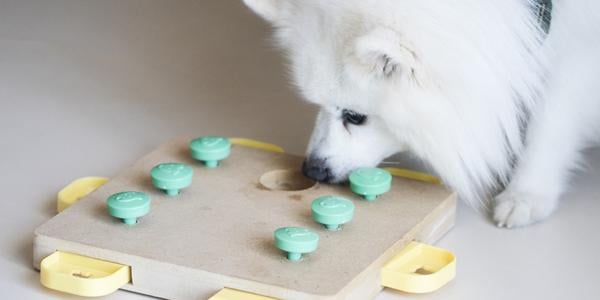
It is important to realize that anti-anxiety meds are not a quick fix and that they need to be combined with behavior modification. Though many pet owners are hesitant to use anti-anxiety medications for their dogs, their use is highly beneficial, especially in severe cases, and when combined with an appropriate behavior modification plan.
Prescription anti-anxiety medication can supercharge the behavior modification exercises you do with your dog. Medication helps the balance of chemicals in the brain, making your training more effective. The training repetitions "stick" better when your dog is in a state of mind more conducive to learning and slow thinking.
Medication can also help in your environmental management, increasing the threshold of your dog's anxiety (meaning more time before they react to their particular trigger, reducing the intensity of their reaction, or increasing the speed with which they recover after an anxiety-inducing event).
Since pain in dogs can increase overall stress in the body, cause anxiety, and inhibit training success, the incorporation of NSAIDs (non-steroidal anti-inflammatory drugs) may play an essential role in your dog's treatment plan.
Never give your dog any human medications (prescription or over-the-counter) without express instructions and dosage information from their veterinarian. Learn about the dangers of doing so here .
Short-Acting vs. Long-Acting Anxiety Medication for Dogs
There are short-acting and long-acting anti-anxiety medications. Many of the medications are FDA-approved for humans for the treatment of depression and symptoms of anxiety, but veterinarians have used them ‘off-label’ for years to treat dogs with different types of anxiety.
Short-acting anti-anxiety medications take effect quickly (generally within 30 to 60 minutes) and last about 4 to 6 hours. They are often used for situational anxieties (thunderstorms or car rides). They can be used to enhance the effectiveness of long-acting medications or during the initial phases of starting long-acting medications until full effect is reached.
Long-acting medications, such as tricyclic antidepressants (TCAs) or selective serotonin reuptake inhibitors (SSRIs), are given daily, require several weeks or more before they reach full effect, and should not be suddenly stopped. These medications require a wean-off period and a "washout" period (the time between stopping the old medication and starting a new one, generally 2 weeks).
Commonly Prescribed Anxiety Medications for Dogs
Want a quick reference chart for the following anxiety medication information? Our reference chart includes use cases, potential side effects, and other medication notes. Get a free instant PDF download of our Dog Anxiety Medication Chart — just fill out this short form:
Short-Acting Anxiety Medications
- Alprazolam (Xanax ® ): Prescribed for moderate to severe situational anxiety
- Clorazepate (Klonopin ®): Prescribed for anxiety disorders and phobias
- Dexmedetomidine (Sileo ® ): Prescribed for situational anxieties such as noise phobias and aversions
- Diazepam (Valium ® ): Prescribed as an anti-anxiety, especially for noise aversion or phobias
- Gabapentin: Prescribed as adjunctive therapy with SSRIs or TCAs for generalized anxiety, impulsivity, noise phobias, and compulsive disorders. May be prescribed to use as needed or in regular doses longer-term.
- Trazodone (Oleptro™ and Desyrel ® ): Prescribed for separation anxiety, noise phobia, veterinary visits, hospitalization, or travel
- Clonidine (Catapres ® , Kapvay™): Prescribed for separation anxiety or phobia-related disorders (e.g., noise phobias), as well as fear-based aggression with identifiable triggers. Is often prescribed in conjunction with a long-acting SSRI medication.
Long-Acting Anxiety Medications
- Amitriptyline (Elavil ® , Levate ® ): Prescribed for separation anxiety or generalized anxiety
- Buspirone (BuSpar ® , Bustab ®) : Prescribed for social situation anxiety (with other animals). Not suitable for situational anxieties such as thunderstorms or human visitors to the home.
- Clomipramine (Clomicalm ®, Anafranil® ): Prescribed for separation anxiety or situational anxiety
- Fluoxetine (Reconcile ®, Prozac ®, Sarafem® ): Prescribed for separation anxiety as well as other anxiety and behavioral issues
- Lorazepam (Ativan ® ): Prescribed for situational anxiety
- Paroxetine (Paxil ® ): Prescribed for generalized anxiety as well as anxiety-related behaviors (fear of noise or self-mutilation)
- Sertraline (Zoloft ® ): Prescribed for general and separation anxiety, fear-based aggression, and thunderstorm phobia
Questions? To chat with a veterinarian about whether medication may be right for your dog's anxiety, Click here
Potential Benefits of Anti-Anxiety Medications for Dogs:
- A temporary or long-term solution to help dogs while they are in training or behavior modification
- Enhances your dog’s quality of life
- Helps your dog relax
- Helps improve your dog’s family interactions
- Helps decrease and manage destructive or unwanted behaviors
Potential Risks of Anti-Anxiety Medications for Dogs:
- Potential side effects vary with the type of medication, dosage, length of treatment, and dog's overall sensitivity. Side effects can include sedation, lethargy, change in appetite, restlessness, stomach upset, increased thirst and urination, and increased respiratory and heart rate.
- Poor response to the medication can lead to delays in improvement since the medication selected may need to be weaned off and then allow a "washout" period.
- Development of dependency with prolonged use. 9 When long-acting (and some short-acting) medications are used, dogs can develop withdrawal symptoms when dosages are lowered or stopped.
- Potential interactions with other medications and supplements
- Long-acting medications cannot be abruptly stopped, or they may cause a rebound of anxiety or worsen behavioral problems. Fortunately, the same doesn't apply to short-acting medications.
A Note About Acepromazine ("Ace")
Acepromazine is a medication previously used for many phobias in pets. However, it is slowly going out of favor, and we felt we needed to mention why, as many people still want to use it.
Acepromazine is a phenothiazine-derived psychotropic drug. It is used for dogs as a sedative/tranquilizer, typically prior to anesthesia. Think of it as a "chemical straight jacket." It is a dissociative sedative that makes a dog easier to handle but does nothing to address the underlying fear. In fact, it can worsen their fears since it scrambles or alters their perception of what is happening and heightens their sensitivity to noise or other anxiety-inducing stimuli. This combination can make the entire situation worse.

How Do You Know if a Prescription Anxiety Medication is Working for Your Dog?
Before a long-acting medication's effectiveness is assessed, dogs typically require treatment for at least four weeks and continued for at least two months following a clear and obvious response. In some cases, dogs can be weaned off these medications, but some may require lifelong treatment.
Once you and your veterinarian have made the decision to start your dog on anti-anxiety medication, it will be important for you to diligently monitor your dog, especially in the early stages, and to communicate frequently with your veterinarian about what you observe.
Keep a daily journal. You will want to document how your dog appears to be feeling. Monitor closely for any of the side effects associated with the medication they are on. If noted, contact your veterinarian.
Establish a scale so you can gauge whether there are improvements in their level of anxiety or reactivity to a trigger. This will help you and your veterinarian determine over time if the medications are improving your dog’s anxiety or if their symptoms are worsening.
Routine lab work (such as complete blood work, chemistry panel, and urinalysis) is important while your dog is on anti-anxiety medications, especially if they have other medical issues of concern.
In cases where your dog needs to be transitioned from one medication to another (i.e., the first was ineffective or caused side effects), the original drug needs to be weaned off, and then a washout period (neither medication is given) between the medications is needed. Follow your veterinarian's instructions for the transition.
Beyond behavior modification and prescription medication, many anxiety treatment options are what we like to describe as " may help, can't hurt. " There are limited studies of variable quality for many of these products or treatment modalities, plus a lack of regulation. It's important to know this as it can help you manage your expectations for certain products or treatments, as well as keep you objective when evaluating whether it's working for your dog's anxiety.
Anxiety Supplements for Dogs

There are lots (and lots) of supplements that are available over the counter that are sold as calming aids. But before jumping and trying them, there are some things you should be aware of.
- Supplements are not well regulated. Since they are considered animal dietary supplements, the FDA classifies them under pet food. Therefore, there is no need for pre-market approval from the FDA. Only if the product is proven unsafe or ineffective will the FDA pull it.
- The purity, quality, efficacy, and amount of the active ingredient in the product can vary A LOT among manufacturers. That is why it is critical to only use reputable products that use high-quality ingredients. Product labels do not always contain the concentration of the ingredients, or what is stated may be inaccurate. We have a list of reputable products below .
- There is a lack of studies proving the effectiveness of supplements for anxiety. Due to the lack of studies, the dosages for effectiveness are not truly known. And finding the accurate dose for your dog may take time. Some types may take weeks of use before therapeutic results are noted.
- If your dog is on certain medications, anxiety supplements may interact with them and cause side effects.
- Not all dogs react the same way to every supplement, and they don’t work for all types of anxiety.
- They work best in the early stages of anxiety development, where the symptoms are mild to moderate.
After reading that list, you may be thinking you should skip supplements. In my opinion, not at all. I just want you to be aware of some important points so you can make an informed decision, ideally with your veterinarian, prior to starting them.
Potential Benefits of Anxiety Supplements:
- They come in chews or treats, which makes them easier to give to many dogs.
- They do not require a veterinary prescription. (You should, however, always check with your vet before starting any supplement to ensure they will not interact with any current medications or treatments.)
- Typically, they contain natural ingredients if you use a reputable product containing high-quality ingredients.
- They have minimal or no side effects.
- Most are safe for long-term use. (One noted as not safe for long-term use is Kava Kava — see list of ingredients below).
Top Veterinarian-Recommended Anti-Anxiety Supplements:
- Virbac Anxitane ®
- VetriScience Composure ™
- Nutramax Solliquin ®
- Vetoquinol Zylkene ®
Active Ingredients to Look For in Anti-Anxiety and Calming Supplements for Dogs
- Alpha-casozepine: Found to reduce anxiety and fear of strangers. 10
Chamomile: Found to have a gentle, relaxing effect that helps reduce anxiety, especially when combined with other herbs such as valerian. It has anti-inflammatory properties, which also help lower anxiety since anxiety and inflammation are closely linked within the body. When pets are anxious, they typically have gastrointestinal issues. Chamomile has antispasmodic qualities that help ease those issues, which in turn aids your dog during an anxiety episode.
- CBD: Has been found, when properly dosed, to reduce anxiety and ease pain. 11, 12, 13, 14 Regulation of CBD for dogs is minimal, so it's important you do your due diligence before trying this out with your dog. Check out our article, What to Know if You Want to Give Your Dog CBD for tips on where to start.
- GABA: Found to improve emotional state, slow down the brain, relax the nervous system and reduce anxiety. 15 GABA is a significant neurotransmitter in a dog's brain that decreases or inhibits the activity of nerve cells. This slows down the brain, allowing the nervous system to relax.
- Kava Kava: Has been found to ease or reduce noise and travel anxiety, fear response, insomnia, stress, pain, or inflammation. This should only be used short-term, as long-term use can lead to liver damage. 16, 17, 18, 19 As with all supplements, check with your veterinarian before giving this to your dog.
- L-arginine: Found to ease anxiety, especially that associated with cognitive dysfunction disorder. 20
- L-theanine: Found to reduce fear of strangers, noise, and storm phobia. 21, 22
- L-tryptophan: Found to help dogs cope with stress. 23
- Lemon balm: Found to help treat anxiety and excitability because of its sedative effects cause calming and relaxation. 24
- Magnolia Officinalis: Found to have anti-anxiety effects and may help with fear-related signs of thunderstorms. 25, 26, 27 It binds to selective targets in the central nervous system that are linked to stress.
- Melatonin: Found to help with situational fear (vet visits, storms, or fireworks) and anxiety. Aids in sleep for dogs that are restless overnight. 28 If you want to try melatonin for your dog, make sure it doesn't contain xylitol, an ingredient that is HIGHLY TOXIC to dogs. Learn more about the dangers of xylitol here .
- Passiflora incarnata (passion flower): Found to cause relaxation by strengthening the effectiveness of GABA brain receptors and decreasing tension. 29, 30
- Phellodendron Amurense: Found to protect the brain from the negative effects of stress and help mood disorders. Helps with fear-related signs of thunderstorms. 31
- Valerian root: Found to help pets sleep and may ease anxiety. 32
Additional Supplements and Products with Calming Effects:
- Probiotics: As more studies are conducted, there appears to be a link between gut flora and emotions. Research done at the Purina Institute showed that certain probiotics modify the gut microbiome, decrease anxiety, and impact behavior. 33 See our top recommendations for prebiotics and probiotics for dogs here .
- Pheromones: Pheromones are chemical messengers that, when released, have an impact on a pet’s behavior and emotional state. They can help dogs feel more secure and comfortable. Studies have found it to have a positive impact on dogs with separation anxiety and noise phobia. 34 A popular dog-appeasing pheromone brand is Adaptil, available as a diffuser , travel spray , or wearable collar .
- B Vitamins: This vitamin is critical to the nervous system for it to function properly. It helps decrease anxiety by promoting the production of serotonin, which creates a calming effect. Your veterinarian can test your dog to determine if they are deficient in B vitamins. If they are, a vitamin supplement or injection will be prescribed.
- tPEMF Treatment: A recent product on the market for dog anxiety, Calmer Canine® uses targeted pulsed electromagnetic field (tPEMF) signals to help an anxious brain return to a balanced emotional state. 35 Preventive Vet team members have used this for their own dogs, and it is often recommended by our team's canine behavior consultant as an alternative to prescription medications.
- Flower Essences: Rescue Remedy® Pet was developed to help ease the anxiety associated with separation, travel, noise, and stressful events. It contains a blend of five flower essences (Rock Rose, Impatiens, Clematis, Start of Bethlehem, and Cherry Plum). While there is limited scientific data on its effectiveness for dogs, it is very popular with many pet owners.

- Massage: Massage helps reduce heart rate and blood pressure, ease pain and tension, and calms the nervous system.
- Calming music: Musical therapy has been found to lessen stress and anxiety. Though each dog can exhibit distinct preferences, classical, reggae, and soft rock appear to be the most effective. Learn more about how to use music to calm your anxious dog here .
- Aromatherapy: Your dog has an acute sense of smell, with more than 40 times the scent receptors than humans. The olfactory bulb is linked to the limbic system, which is responsible for memory and emotions. A sense of well-being and calm is can be encouraged by essential oils used in aromatherapy. 36, 37 When the appropriate pure, medical-grade essential oils are used properly, they can be a natural calming and anti-anxiety effect on your dog. Check out our list of safe essential oil recipes to use around your dog .
- Reiki: Science-based energy medicine that can help ease a dog’s anxiety and stress by creating a profound state of relaxation. 38
- Calming wraps or wearables: Pressure clothing or wraps, such as the Thundershirt or Tellington TTouch® Wraps , are meant to make your dog feel like they are being hugged, and they apply pressure to trigger points meant to ease fear or phobias. While the studies evaluating these products are generally inconclusive, many pet parents felt that the vests did have a beneficial effect on their dogs. 39 Personally, I can say I had many clients that used them, and they helped. But I also had clients who felt they didn’t. Be sure that the pressure clothing fits properly. It should not be restrictive and do not leave your dog unsupervised while they are wearing it. It is important to keep in mind that some dogs may find pressure clothing to be uncomfortable or fear-provoking. Therefore, monitor your dog closely when first trying the clothing, and do not force them to continue wearing it if they seem uncomfortable.
- Other calming aids: Think of these as your dog's "security blanket." It may literally be a blanket or perhaps another toy or their calming bed. The Snuggle Puppy is a popular calming aid that many dogs find comforting as a puppy when they first leave their littermates, but it may help your dog feel better even as an adult. Other options include calming beds , designed to be extra cozy and nest-like for a calming effect.
As with any behavioral issue, there is never a one-size-fits-all solution for treating your dog's anxiety, and what once worked may eventually stop working. It is important to be patient, open-minded to different options, and diligent with continuous treatment. The payoff is well worth the work — a happier, healthier dog!
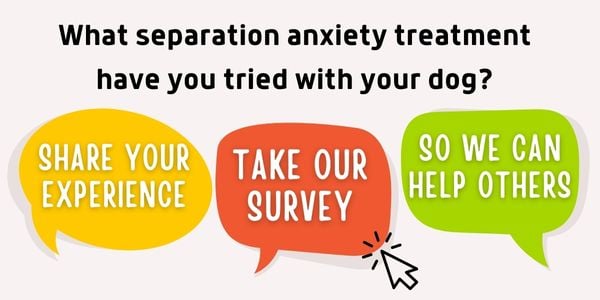
About the author

Dr. Beth Turner
Beth Turner is a veterinarian with over 20 years of experience. She graduated from North Carolina State College of Veterinary Medicine and following graduation, she began her career as an associate veterinarian and worked closely with the local shelter.
In 2007 she accomplished her dream of practice ownership, designing and building her own clinic. Another meaningful role, while running her clinic, was serving as her county's shelter veterinarian. This gave her the opportunity to help improve the lives of many animals in her community as well as work with the rescue she loved. She sold her practice in 2019 to move across the country.
More about Dr. Beth Turner
Related Articles


- Free Guides & eBooks
- Free Masterclasses
- Our Experts
- Pet Anxiety Articles
- Pet Nutrition Articles
- Dog Training Articles
- Holistic Pet Care Articles
- Senior Pet Care Articles
- Raw Feeding Articles
- Pet Gut Health Articles
- Pet Anxiety Courses
- Pet Nutrition Courses
- Dog Training Courses
- Holistic Pet Care Courses
- Senior Pet Care Courses
- Raw Feeding Courses
- Pet Gut Health Courses
- Pet Anxiety Summit
- Raw & Natural Feeding Summit
- Pet Pain Relief Summit
- Out Of Control Dog Summit
- Human-Animal Connection Summit
- Dog Nutrition Summit
- Dog Anxiety Summit
- Raw Dog Food Summit
- Dog Allergy Summit
- Dog Detox Summit
- Dog Training Secrets Summit
- Senior Dog Care Summit
- Holistic Dog Care Summit
- Dog Gut Health Summit
- Dog Health Solutions Summit
- Community Hub
- P.A.W. Method
- Education Board
- Upcoming Events
- Pet Anxiety
Anxiety Tablets For Dogs: When should I use them?
Navigating the complex landscape of veterinary prescription medication for your pet can be daunting, necessitating active participation, clear communication, and an open mind. This article aims to illuminate the nuanced interplay between traditional and alternative treatment approaches, exploring when and why prescription medications may be needed while delving into the potential of non-prescription or natural pet anxiety solutions .
We recently organized an interview with Dr. Christopher Pachel, along with other leading veterinary experts, to delve deeper into the subject of anxiety tablets for dogs. This piece aims to guide pet parents through making informed decisions, with a focus on the overall well-being of their cherished companions. Dr. Pachel's insights, combined with those of other experts, offer a comprehensive view on when and how to use anxiety tablets for dogs effectively and responsibly.
Understanding Dog Anxiety and the Need for Prescription Medication
The world of veterinary medicine is not limited to dealing with physical illnesses; it extends to tackling behavioral issues such as anxiety in pets. These animals can benefit immensely from medical treatment, including prescription drugs. The need for prescription medication arises when animals struggle with coping strategies, regulation, or learning due to anxiety or fear.
A holistic treatment plan for anxiety incorporates pharmaceuticals and a range of other interventions. These could be elements like nutrition, pheromones, or anything that can help the pet develop better coping strategies, facilitating healthier responses to their environment.
The Role of Pharmaceuticals in Dog Behavior Management
Despite the range of solutions available, the role of pharmaceuticals should not be understated. It can be a powerful tool in a veterinarian's arsenal when addressing pet behavioral issues. However, the decision to prescribe medication is not always clear-cut.
Animals, like humans, are unique individuals. Identifying whether they need medication is complex. The initial assessment of an animal can help in understanding how they respond to environmental modifications and behavior modification interventions. It gives a sense of the pet's adaptability to new learning experiences.
Assessing the Need for Anxiety Tablets For Dogs
One primary indicator of the potential need for medication is when animals struggle to learn or regulate their emotional arousal despite learning new coping strategies. Their intense emotional responses could easily override their cognitive ability to process and apply what they've learned. In these cases, the veterinarian may consider trialing medication to determine if it could benefit the pet.
Anxiety in animals can be perceived as an overstimulation of mental, emotional, and physiological systems, leaving them stuck in constant arousal. In this "red zone" of arousal, pets may be unable to think, respond to commands, or learn new behavior. They may engage in uncharacteristic, even potentially harmful actions.
Anxiety: An Imbalance Between Emotion and Cognition
Typically, animals maintain a balance between emotion and cognition, constantly alternating between feeling and acting upon their emotions. However, when animals slip into anxiety, this balance is disrupted. They might end up engaging in a rapid response mechanism which, while helpful in genuinely threatening situations, can be detrimental when activated chronically or unnecessarily.
Managing Anxiety in Pets: A Comprehensive Approach
Understanding anxiety in pets involves identifying the triggers and manifestations while providing effective interventions. When an animal cannot predict a frightening event or control its outcome, it enters a state of heightened vigilance. This heightened arousal often serves as a coping mechanism to ward off potential threats, notably different from anxiety. Although anxiety and arousal often overlap, distinguishing between them is crucial in formulating a suitable treatment plan.
When a pet experiences anxiety, the primary responses are physiological arousal, such as the fight-or-flight response, and mental distress caused by fear of danger or a traumatic event. The pet's reaction to this anxiety state, whether to fight, flee, or freeze, becomes noticeable in their behavior.
However, an effective and comprehensive treatment approach requires going beyond these visible symptoms. The key is to address the unmet emotional needs that underlie these problematic behaviors. Addressing these needs allows veterinary professionals to manage these behaviors more effectively, ideally leading to a situation where medication may no longer be necessary. Thus, a nuanced understanding of anxiety in pets is critical to ensuring their well-being.
The Role and Perception of Veterinary Prescription Medications
Many pets suffering from anxiety disorders could greatly benefit from medication, yet several factors often impede this course of treatment. These obstacles include availability or awareness, concurrent medical issues, and social stigma attached to mental healthcare. It's crucial to dispel the misguided notion that taking medication implies failure as a pet parent. Rather, it is about acknowledging and addressing the struggles your pet faces.
Viewing Medication as Support, Not Sole Treatment
Medication should be a form of support akin to a scaffolding built around the treatment plan to enhance effectiveness. The goal is to remove this support eventually once the pet has successfully coped with their anxiety. However, if medication is required long term, it is a perfectly acceptable part of a comprehensive treatment strategy.
Addressing Concerns Regarding Anxiety Tablets For Dogs
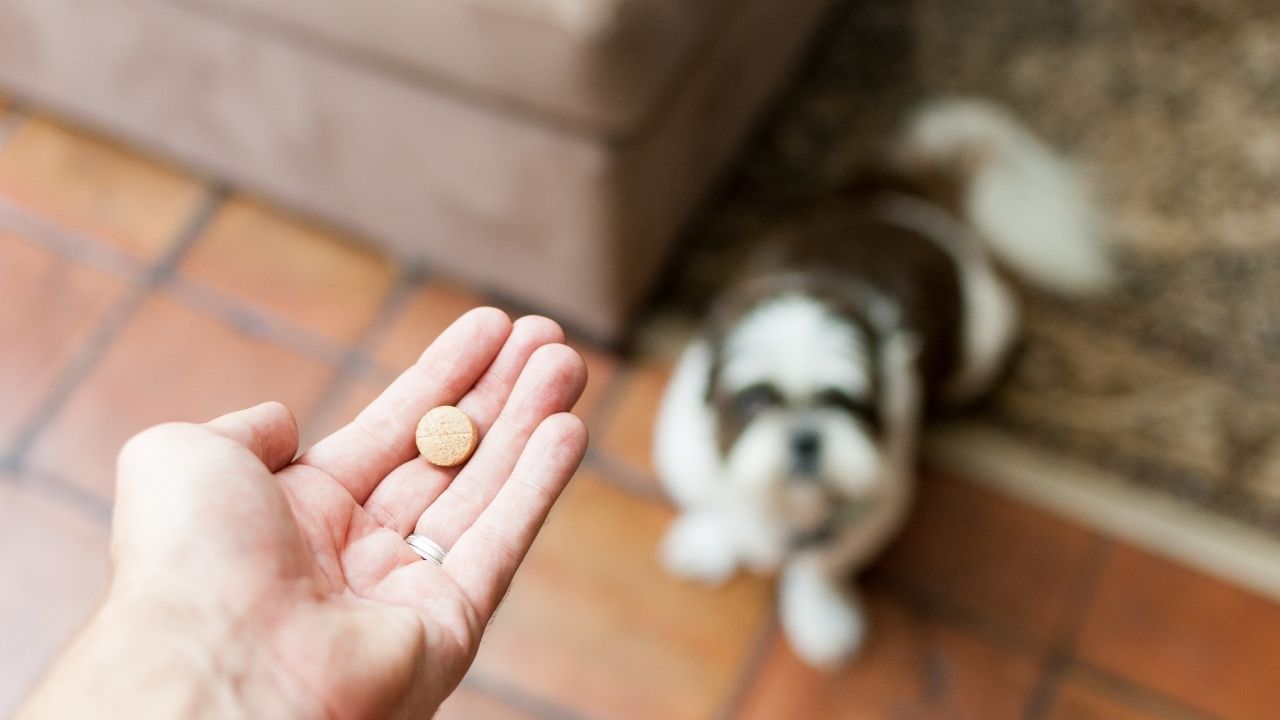
Despite concerns over potential side effects, most behavioral medications are relatively safe. Every medical intervention has potential risks, but these medications' benefits often far outweigh any associated risks. As a holistic approach to pet healthcare, it is essential to consider all options, including prescription medications, to ensure your pet’s well-being.
The Holistic Approach to Pet Medication
A holistic approach to pet health does not mean ruling out prescription medications. A holistic approach embraces all possible treatment options to ensure your pet gets the best care. Many vets may have a broad understanding of various treatments, including herbal therapy and energy work. However, they work closely with colleagues to ensure your pet receives the best and most appropriate care.
Medication Safety and Side Effects
Most veterinary prescription medications are well-tolerated. But, like human medicines, they are designed to change the body's functions, which may have some side effects. For instance, some pets may experience agitation or sedation as a side effect of certain medications. A side effect doesn't mean the medication is entirely wrong; it could simply be the wrong dosage or prescription for your pet. These reactions give vets crucial information about your pet's physiology, receptor sensitivity, and medication needs.
Three Important Questions Before Prescribing Anxiety Tablets For Dogs
Before prescribing any medication, vets tend to ask themselves three important questions. Firstly, they need to ascertain whether they are observing something in the animal's behavior or physiology that indicates medication could be helpful. Secondly, they consider whether to prescribe situational meds (those that take effect within 60 to 90 minutes and wear off after a few hours) or maintenance meds (like antidepressants that may take several weeks to take effect but maintain a steady state effect). Lastly, they examine the individual patient and decide which type of medication to target based on observed patterns.
Consulting a Dog Behaviorist
It's also good to involve a behaviorist in your pet's care, particularly if you're dealing with severe anxiety that could threaten other animals or humans. Behavioral issues can lead to serious tragedies if not addressed properly. A behaviorist will understand the intricacies of your pet's behavior and will be able to guide a comprehensive treatment plan.

Identifying and Treating Pain in Pets
Pet owners have to understand that their beloved pets can experience a wide range of health issues, some of which may cause 'invisible' pain. Conditions such as dental disease, Chiari malformation, and Syringomyelia can cause significant discomfort, affecting a pet's behavior and quality of life. Diagnosing these conditions can be challenging, as they may be confused with fear or anxiety-related behaviors.
When non-medical interventions fail to improve these symptoms, prescription medications may become necessary. These can range from daily antidepressants for chronic issues, like anxiety, to situational medications for acute anxiety. Understanding the full spectrum of these medications, their benefits, and potential side effects is key to ensuring optimal health and happiness for your pet.
Gabapentin: A Go-To Solution for Veterinary Anxiety
As pet parents, we all desire to provide the best care possible for our furry companions. One medicinal tool that has proven highly beneficial in managing pet anxiety is Gabapentin. Originally used to treat seizures, Gabapentin has found a unique place in veterinary medicine, often used to manage chronic pain and anxiety in pets. It can be administered as a situational medication, alleviating stress during high-anxiety events, or as a long-term treatment for chronic anxiety. Importantly, Gabapentin does not cure the underlying problem but provides an animal with greater ease and comfort, making veterinary visits and daily life more manageable for anxious pets.
Balancing Benefits and Side Effects of Anxiety Tablets For Dogs
All medications have potential side effects, and Gabapentin is no exception. Some of these side effects could include sedation or an increase in appetite. In rare cases, certain pets may react to Gabapentin with a paradoxical excitation, which can resemble heightened anxiety or hyperactivity. Because of this, it is critical to do a trial run of any new medication at a normal baseline. This helps identify any adverse effects before they are exacerbated in an already stressful situation.
Long-term use of pharmaceuticals like anxiety tablets for dogs can have an impact on gut health . Prolonged medication can disrupt the natural balance of gut flora, leading to digestive issues and potentially affecting overall well-being. Therefore, it's crucial to exercise caution and regularly monitor your pet's digestive health while they are on long-term medication.
Prescribing What Works Best for Your Pet
Although Gabapentin is a common choice, other veterinary prescription medications such as Trazodone or Clonidine may be used to manage pet anxiety. Each pet is unique; what works best for one animal might not be ideal for another. For example, some pets may feel uncomfortable if certain medications make them foggy or fuzzy. Thus, your vet should consider age, sex, activity level, and behavioral patterns when deciding on the most appropriate medication.
Towards a Comprehensive Anxiety Treatment Plan
Alleviating anxiety in pets requires a multi-faceted treatment plan, where medication is only a part of the solution. Essential to the success of this plan is the education of pet parents. Understanding your pet's body language and behavior is key to providing accurate feedback to your vet. This will guide medication trials and the overall treatment approach. Numerous online resources are available to pet parents to help them understand and manage pet anxiety.
Addressing Concerns About Prescription Medications
Understandably, some pet parents may have reservations about using prescription medications to treat anxiety in their pets. Open conversation and clear communication with your vet are key in such cases. Understand that vets have various tools and are prepared to use different strategies to achieve the best outcome for your pet. If you are not ready to consider prescription medications, that's okay. But be open to discussing the possibility of other strategies needed to provide the desired results. Always remember your pet's well-being is the shared goal for both you and your vet.
Open Communication: Key to Better Pet Care
Effective pet care lies in clear communication between pet parents and their vets. Pet owners must not hesitate to express their concerns and preferences, including their boundaries about veterinary care. Expressing a desire to try non-prescription treatments before jumping to medication can significantly impact the overall health approach. It is important to be proactive and vocalize these boundaries to your vet. Also, vets sometimes can be assertive about specific treatments, so pet parents must stand up for their preferences politely and confidently.
Trusting the Pet Parent’s Intuition: Advocacy for Your Pet
Veterinarians are undoubtedly knowledgeable, but it's important to remember that as a pet parent, you know your pet best. Vets can provide multiple options and expert advice, but you, as the pet parent, ultimately decide what path to follow. Think of your vet as a guide, giving you directions and potential approaches, like a GPS, and not as an authoritative figure commanding your decisions. Remember, you are your pet's advocate and an integral part of their healthcare journey.
Alternative Therapies: Going Beyond Anxiety Tablets For Dogs
Prescription medications are not the only solution to your pet's health problems. Various non-prescription treatments, such as herbs and CBD, can be useful in certain circumstances. Ingredients such as tryptophan, alpha-capsazepine, and L-Theanine have been shown to be safe and effective for specific conditions. CBD can also be beneficial, although more scientific data is still emerging about its uses and dosage is still emerging. It's also important to note that while herbs and complementary Chinese medicine approaches can be helpful, they should be managed by a qualified practitioner to ensure effectiveness and safety.
The Power of Touch: Therapeutic Interventions
Beyond medication, another promising animal treatment approach is therapeutic or intentional touch. This technique can significantly calm an overexcited or anxious pet . It's a new concept in the veterinary industry, but anecdotal evidence has shown remarkable results, especially in behavior modification. Exploring this avenue for a more holistic approach to pet care is essential.
Collaboration is Key: Navigating Veterinary Care
When managing your pet's health, it's vital not to rely solely on medication. Consider it part of a three-pronged approach that includes teaching the animal new behaviors, adjusting the environment as needed, and supporting it with medication if necessary. Both extremes of being entirely against or only depending on medication can be problematic. It's about finding the best individual solution for your pet, achieved through collaboration with your vet, other practitioners, and, importantly, your pet. So, foster an open dialogue, stay informed, and ensure your pet's healthcare decisions are a team effort.
Pro Tips: Actionable Advice for Using Anxiety Tablets For Dogs
- Always consult your vet before administering any medication.
- Observe your dog's behavior closely when introducing a new medication.
- Keep an open dialogue with your vet about any side effects or concerns.
- Consider combining medication with behavioral training for a holistic approach.
Conclusion:
Pet Summits is dedicated to providing pet owners with holistic solutions for their pets' well-being. We believe in a balanced approach that considers all available treatment options, including anxiety tablets for dogs, to ensure the best care for your furry companion.
Pet Summits
About the author
Pet Summits create the world's most informative online summits and programs in every category of health and well-being for our cats and dogs. Learn from the most-trusted veterinarians and pet experts on our powerful e-learning platform.
You Might Also Like These...
The sweet benefits of honey for your dog’s health, turning dog to dog reactivity into calm canine interaction, pet care report re-launch: host introductions, how to calm dog anxiety naturally: an integrative veterinary approach, introduction to raw food diet for pets: what you need to know, do herbs work for dogs, get notified about our next upcoming pet summits.
Don't let another moment pass by without getting the education you need to ensure you raise a healthy, happy pet well into their golden years. Our pets are the light of our lives, our best-friends and furry family members. It's time to give them the best life possible.
Join 90,000+ other loving pet owners by joining the... Pet Summits Newsletter
The world's most trusted source of holistic pet care education!
Forms not displaying? i
If you are using any adblockers, kindly disable the adblockers and refresh the page.
Also the forms may not work well with specific-goal oriented browsers like: Tor and Brave.
Animed Direct
Advice and tips from the biggest seller of animal medicines to UK pet owners
- Small Animals
- Shop animeddirect.co.uk
Dog Travel Sickness: How to Help
By Beth Walker
On March 4, 2024

Dog travel sickness can be a common problem in dogs of all ages, from puppies to adult dogs. It can make travel extremely stressful for both pets and their owners, especially if you want to enjoy adventures a long way away from home. While travel sickness tablets for dogs can be a good short term solution, behavioural therapy is usually the best way forward long term, as it’s often caused by anxiety.
What Causes Dog Travel Sickness?
True motion sickness in dogs is fairly uncommon. It is thought to be a result of certain types of movement affecting the balance centre in the brain.
However, many dogs who demonstrate the symptoms of travel sickness do so as a result of anxiety. Car travel is an unfamiliar experience that can cause high levels of stress. More often than not, it is this anxiety that is causing a dog to feel nauseous and unwell in the car.
Some dogs may ‘grow out of’ travel sickness, often because they have simply become more familiar with it, and no longer feel anxious. But is always best to address dog car sickness early on. If left unmanaged, symptoms can get worse until travelling in a vehicle is no longer an option.
How Do I Know if My Dog is Car Sick?
While vomiting is of course the most obvious symptom of dog travel sickness, there can also be other slightly less obvious symptoms related to nausea in dogs. These include:
- lip licking
- a general reluctance to be in or around vehicles
What Can I Give My Dog for Travel Sickness?
There are some cases of true motion sickness that unfortunately can only be managed with prescription medication through your vet. These medications are known as antiemetic, or anti-sickness medications.
Pet prescription medications , or POM-V’s, can be purchased through Animed Direct. However, they do require a valid written veterinary prescription before they can be dispensed.
However, the majority of cases of dog travel sickness can be managed and treated with behavioural therapy. This is because symptoms are often largely caused by anxiety around travel. Speak to your vet or a qualified dog behaviourist about the best way to do this with your pet. You can also try our tips at the end of this blog.
For some dogs, supplements can also be suitable.
Supplements and Travel Sickness Tablets for Dogs
If your dog shows symptoms at even the jingle of the car keys, they may be starting to feel sick at just the thought of a car journey. For these dogs, where anxiety is a key factor in their discomfort, calming supplements can provide effective travel sickness relief.
Zylkene capsules can act as great travel sickness tablets for dogs. These supplements contains a natural ingredient derived from a protein in milk called casein, which has clinically proven calming properties.
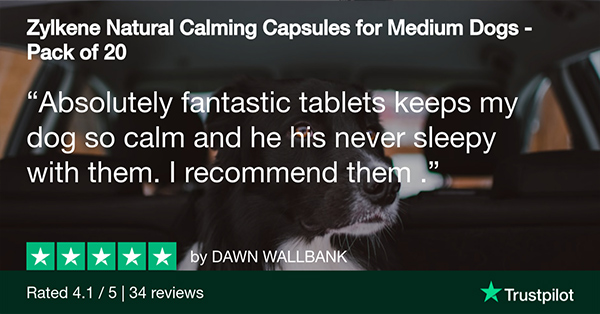
YuMOVE Calming Care supplements are another good option for anxious dogs. These tasty tablets help to support natural calming pathways in your dog’s brain using scientifically proven ingredients.
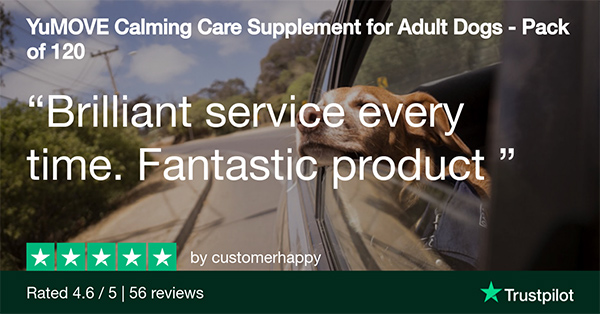
Other options include calming sprays, which can be applied to your pet’s bedding or carrier. Adaptil uses pheromone technology to send comforting signals to your dog, while Pet Remedy contains a unique formulation of calming essential oils. They can even be sprayed on a bandana or coat so your dog can take the benefits with them.
Not all dogs enjoy tablets, and sprays may require repeat application depending on the length of your journey. An Adaptil collar , which also uses pheromone technology, is a great option for dogs that need anxiety relief on the move. Dogs can simply wear the collar all day long, with no need for repeat applications or tablet ingestion.
All dogs are different, so consult your vet to see what the best treatment might be for your dog’s travel sickness.
Can I Give My Dog Anti Sickness Tablets for Humans ?
No, you should never give dogs any medication intended for humans. Human travel sickness tablets will not be effective in your dog and may have serious side effects.
How Else Can I Help My Dog’s Travel Sickness?
As well as trying supplements , there are other simple changes you can make to your dog’s journey to help reduce feelings of car sickness, as well as behavioural therapy techniques you can try. Here are our 6 top tips to help your dog’s travel sickness :
1. Make Sure Your Dog Feels Secure While Travelling
How your dog travels can heavily influence how they feel about the journey. If they struggle with separation anxiety, travelling alone in the boot may cause them to be fearful. Having someone ride in the back seat to be closer to them or moving them to the back seats may be beneficial. Other dogs may feel more secure in a crate or carrier.
When creating a space in the car for your dog to travel in, ask the following questions: Are they able to lay comfortably? Is the surface secure and not slippy? Trial different beds and blankets to find the perfect fit for your furry friend. We love the Henry Wag microfibre noodle pet mats for giving your dog a cosy surface that also helps keep your car clean!
NOTE: It is important to make sure that your dog is suitably restrained while travelling, as outlined in the Highway Code. Any animal that is travelling unrestrained in a vehicle runs the risk of incurring a fine as well as invalidating your car and pet insurance.
These fabric travel crates from Henry Wagg are great way to keep your pet contained and they are easy to store with their fold-away design. A car seatbelt clip is also a good way to ensure your dog is suitably restrained.
2. Build a Positive Association with the Car
Try taking your dog out to the car but without travelling anywhere. Simply practice being in and around the vehicle. Use some tasty treats to try and build a positive association with being in the car. Some owners find letting their dog have their favourite chew or even their dinner while sat in a stationary car can help them to feel more confident.
When your dog starts to feel more comfortable with being around the car and is happily getting in and out for their treat, try starting the engine. For some dogs, this may not cause any reaction. For others, it may knock their confidence slightly. It is important to carry on at your dog’s speed. Once they are comfortably accepting each stage without any reaction or reluctance, it is time to start moving the car.
3. Stick to Short Journeys
For some dogs, even a short drive to the end of the road and back can be a big achievement. Use gentle encouragement to offer them comfort and support. Slowly build up the duration of the journeys.
4. Feed your Dog at Least 3 Hours Prior to Travel
Travelling on a full stomach is not ideal, especially if your dog suffers from travel sickness. Aim to feed them 3 hours prior to travel to give them time to digest their meal.
5. Exercise Your Dog Before the Journey
This will help to use up any extra energy and encourage them to sleep in the car. It also gives your dog a chance to go to the toilet before getting in the car.
6. Plan Your Journey
It is always important to factor in toilet breaks for your dog on longer journeys. Try to find quieter spaces along your route where your pet can have a peaceful break, and get some fresh air.
Wrapping Up: Dog Car Sickness
With time and consistency, you should be able to increase the length of your journeys and start planning longer trips away with your pup. If you have a puppy, it’s a great idea to introduce them to the car gradually while they are young to avoid adverse reactions later. If you need more help, speak to your vet or local dog behaviourist for further advice to ensure your pet can receive more tailored advice and recommendations.

Search for articles
Latest comments.
Return to top of page
Copyright © 2024 · ANIMED DIRECT LIMITED
- Cheap and Budget Friendly Recipes
- Health Related Illness Diets
- Homemade Treat Recipes
- Homemade Dog Treats for Health Issues
- Seasonal Recipes
- Can Dogs Eat…
- Dog Diseases & Conditions
- Dog Symptoms
- Dog Grooming
- Caring For Seniors
- Dog Loss & Grieving
- Dog Reproductive Health
- Treatments and Home Remedies
- Dry Dog Food
- Wet Dog Food
- Best Dog Products
- Dog Accessories
- Dog Health Products
- CBD for Dogs
- Toy Dog Breeds
- Working Dog Breeds
- Terrier Dog Breeds
- Sporting Dog Breeds
- Non-Sporting Dog Breeds
- Mixed Breeds
- Hound Dog Breeds
- Livestock and Herding Dog Breeds

12 Best Dog Anxiety Medications: OTC & Calming Supplements
Table of Contents
Dog Anxiety OTC Medication reviewed in this guide
- 1Best Overall Over-the-Counter Dog Anxiety Medication: Vetoquinol Zylkene Dog Anxiety Aid
- 2Best Value Anxiety Meds for Dogs: Bach Rescue Remedy Anxiety Relief for Dogs
- 3Best Chewable Over-Counter Medication for Dogs: NaturVet Quiet Moments Calming Aid Dog Chews
4 PremiumCare Calming Treats for Dogs
5 vetriscience calming supplement for dog anxiety, 6 pawlife hemp calming treats for dogs, 7 gerard larriett de-stress lavender and chamomile spray, 8 kinpur hemp dog anxiety treats for stress, 9 planopaws hemp anxiety treats for dogs, 10 zesty paws anxiety calming bites for dogs.
- 11Best Calming Supplement for Dogs: NEXPAW Calming Treats for Dogs with Melatonin
12 PetNC Natural Care Calming Aid Chews for Dog
What causes anxiety in dogs, symptoms of dog anxiety, s-adenosylmethionine (same), homeopathic treatments, hemp and cbd oil products for dog anxiety, ingredients, size and price, 1. exercising for reducing dog anxiety, 2. use physical contact, 3. music therapy for anxious dogs, 4. calming collars, t-shirts, coats, vests for anxiety, what dog breeds are prone to anxiety, can benadryl act as an anti-anxiety med, does trazodone help dogs with anxiety, dog anxiety medications conclusion.
W orried about your anxious pup? We got your back! Because there are now several over-the-counter dog anxiety medications.
Worry not; below is a guide to the best anxiety meds for dogs .
Anxiety seems like a problem that should only affect humans, but animals can suffer from anxiety, too. While this is often a normal and healthy emotion, it can affect each dog differently, and some dogs may develop a severe anxiety disorder.
Dealing with anxiety in dogs can be difficult, and pet owners have tried many methods in the past.
Through trial and error, many found different approaches to be more effective than others, from anxiety vests to calming meds and supplements for dogs.
In this article, we'll go over different dog anxiety treatments, how to recognize if your dog has anxiety issues, and talk in detail about some of the best dog anxiety aids you can find to buy over the counter.
12 Best Dog Anxiety Over-the-Counter Medications and Supplements
1 best overall over-the-counter dog anxiety medication: vetoquinol zylkene dog anxiety aid.
Firstly, these dog anxiety medication capsules by Vetoquinol are not as palatable as chewable tablets but they are pretty effective in calming anxious dogs, and Zylkene has already earned a name for itself as being very effective for anxiety.
But you can also mix them up with your dog’s food if he won’t take them on their own.

- Help Your Pet Cope With...
- Alpha-Casozephine - A...
- Lactose-Free and Easy on...
- Veterinarian Recommended Daily...
- Easy to Administer - Open the...
They come in three different sizes that are suitable for dogs of different weights – the largest capsules being 450 mg.
However, one capsule per day is the recommended dosage.
This product is completely natural since it is derived from casein, a protein found in milk.
However, the capsules are free of any preservatives, as well as lactose-free.
These capsules have a non-drowsy formula, so your dog will remain as active as usual, but his anxiety will tone down.
But the biggest downside of these pills is the high price, especially since some dog owners didn’t find these capsules effective.
Above all, keep in mind that this product doesn’t work instantly, and you may have to give them to your dog for a few days before you get any results.
» PROS : Available in Different Sizes, Work with Dogs of All Sizes, Natural Ingredients, Non-Drowsy Formula
« CONS : Expensive, Not the Most Palatable, Some Reports of Ineffectiveness
2 Best Value Anxiety Meds for Dogs: Bach Rescue Remedy Anxiety Relief for Dogs
Secondly, one of the most popular homeopathic supplements on the market, Bach Rescue Remedy, is a spray that comes in 10-ml and 20-ml bottles.
This solution is affordable, but there is no scientific proof of its effectiveness. However, the majority of reviews are pretty positive.

- Natural herbal calming.
- Pheromones create a sense of...
- Constantly comforting residual...
- Effective for 8 - 10 hours.
- Great for stress and tension.
Furthermore, this alcohol-free solution can help your pooch with hyperactivity, separation anxiety, and various other problems like fear of social interactions or loud noises.
And the solution is made from all-natural ingredients and pheromones and the calming effect from it can last up to 10 hours.
Therefore, Bach Rescue Remedy can also be easily administered by placing 4 drops each on your dog’s food and water.
However, while this product is affordable, the bottle won’t last long if you use it on a daily basis. My dog only has mild anxiety so the bottle did last me about a month.
And while many dog owners found this solution helpful, some did claim that it didn’t work on their dogs.
» PROS : Affordable, Available in Two Sizes, Work with Dogs of All Sizes, Homeopathic, Easy to Administer
« CONS : Some Reports of Ineffectiveness, Could Come in a Bigger Bottle
3 Best Chewable Over-Counter Medication for Dogs: NaturVet Quiet Moments Calming Aid Dog Chews
Thirdly, if your dog is not a fan of pills and capsules and other similar kinds of dog anxiety medications, these soft chews can be a good choice since they are basically the same as treats, and my dog really enjoyed the taste.
And these chews come in three different package sizes that contain 65, 70, and 180 chews.

- HIGH-QUALITY HEALTH SUPPLEMENT...
- PET SUPPLEMENTS FOR ANXIETY:...
- WHOLESOME DOG SUPPLEMENTS FOR...
- TASTY, DOG SOFT CHEW...
- PET PRODUCTS YOU CAN TRUST:...
But the best thing about this product is the fact that it can work on both large and small dogs. But I have only tested them on my dog, a 30-pound Corgi.
However, keep in mind that these chews are not suitable for puppies younger than 12 weeks.
These treats combine a few different ingredients like melatonin, ginger, thiamine, and L-Tryptophan, which can also help with various pains and GI issues, in addition to calming your anxious pup. However, they are pretty small, about one inch in size.
The suggested dosage is 1 to 2 chews for dogs under 25 pounds. However, if you have a large dog, you might need to give 3-4.
But I also found the chews to be a bit dry but my dog didn’t seem to mind it.
Furthermore, some dog owners didn’t see any change in their dog’s behavior, although most reviews are positive.
» PROS : Affordable, Available in Multiple Package Sizes, Palatable, Easy to Administer, High-Quality Ingredients, Work with Dogs of All Sizes
« CONS : A Bit Dry, Treats Are Small, Some Reports of Ineffectiveness
Moreover, these calming chews are only available in one package size of 120 treats and they come with duck flavor to make them more palatable for your pooch. Not only will it be enjoyable for the pup, but will serve as a great dog anxiety reliever.
But the main advantage of these chews comes from hemp, which is the most important ingredient in the formula.

- ✅ 𝐋𝐎𝐖𝐄𝐑𝐒...
- ✅ 𝐌𝐀𝐃𝐄 𝐈𝐍...
In addition to hemp, this product also contains passionflower, valerian root, chamomile, valerian root, l-tryptophan, and ginger root.
Therefore, all of these ingredients have a role in reducing stress and anxiety, and this product can help with various types of anxiety, but it can also calm hyperactive dogs.
Likewise, these chews are made from all-natural ingredients, without any fillers like corn or soy, and without any artificial colors and flavors.
My dog did seem more relaxed when he tried these chews. However, some dog owners were disappointed with the effects.
Also, hemp oil has a specific and a bit strong smell.
» PROS : Natural Ingredients, Palatable, Easy to Administer, Work with Dogs of All Sizes
« CONS : Only Available in One Size, Expensive, Strong Smell, Some Reports of Ineffectiveness
In addition, these small treats come in three different flavors: bacon, chicken liver, and peanut butter.
However, you can also get these calming supplements for dogs as a flavorless liquid so you can choose the option that works best for your pooch.

- Vets’ #1 Calming Chew: As...
- Our clinically proven formula:...
- Not a sedative: Our...
- Safe, high-quality...
- Veterinarian-formulated and...
Moreover, they are made of all-natural ingredients plus the Colostrum calming complex that can reduce anxiety and improve cognitive abilities in dogs.
Although these treats can help dogs of any size, smaller dogs may benefit more since the treats are pretty small.
Meanwhile, for medium and large dogs, you may need to use more of them to get any effect out of them.
The regular dose is 1 chew for dogs up to 50 pounds of weight but you can give your dog 2 or 3 of these treats in times of increased stress.
Furthermore, these treats come at an affordable price, and if you have a small dog, they can last for at least a couple of months, depending on the package size. However, some dog owners reported that these treats didn’t work.
» PROS : Affordable, Available in Different Sizes and Flavors, Work with Dogs of All Sizes, Natural Ingredients, Palatable, Easy to Administer, Can Get the Same Product as a Liquid
« CONS : Small Treats, Some Reports of Ineffectiveness
Meanwhile, These calming treats are basically a hybrid supplement since they can also help with hip and joint health.
And this is why they are a good choice for senior dogs who suffer from anxiety and arthritis.
These anti-anxiety hemp treats come in a package of 120 chews and they are also palatable and have duck flavor.

- Comprehensive Anxiety Relief &...
- Expertly Crafted in the USA:...
- Tailored Separation Anxiety...
- Veterinarian-Formulated...
- Versatile for Travel and Puppy...
Moreover, this product contains many natural ingredients in addition to hemp.
These ingredients, like valerian root, chamomile, passionflower, ginger root, and L-tryptophan, can all help with stress and anxiety. The ingredient list also includes glucosamine for hip and joint health.
Above all, keep in mind that although this product comes in the form of treats, it is actually a supplement that needs to be taken continuously in order to work.
I haven’t tested its effects for this reason, but the product has many great reviews.
However, some dog owners reported a lack of results. There were also some reports of the treats making dogs sick, which is a possibility since the large mix of ingredients can lead to digestive distress if a dog has a sensitive stomach.
» PROS : Natural Ingredients, Palatable, Easy to Administer, Work with Dogs of All Sizes, Good for Senior Dogs, Helps with Hip and Joint Health
« CONS : Only Available in One Size, Some Reports of Ineffectiveness, Not for Dogs with Sensitive Stomachs

Furthermore, this dog anxiety-calming product comes in the form of a spray, which is a good choice if your dog isn’t fond of capsules and pills. It doubles as a deodorizer as well.
You can easily use this product by spraying it on your dog’s paws and ears. It is also a very affordable product that comes in an 8-oz bottle that will last for a while.

- Dog-Safe Fresh Scent:...
- Vet Approved Pet Calming...
- Travel-Size Coat Softener &...
- USA-Made Skin Soother: Our dog...
In addition, the spray is made of essential oils that have a pleasant smell, and my dog didn’t mind being sprayed with it.
However, some dog owners complained about the overpowering smell. And despite being made of essential oils, the solution won’t make your dog’s fur too oily.
Similarly, this product is made of all-natural ingredients like chamomile, valerian root, ginger, and L-tryptophan, without grain, corn, soy, or wheat.
However, there were some reports of the spray not showing any results, although my pooch did seem a bit calmer on our walks in the local dog park.
» PROS : Affordable, Work with Dogs of All Sizes, Natural Ingredients, Easy to Administer, Most Dogs like the Smell
« CONS : Available in Just One Size, Some Reports of Ineffectiveness, Some Dog Owners Complained about the Smell
Another great dog anxiety medication is the Kanpur Hemp Treats. It comes in a package of 180, and they are one of the most affordable hemp-based chews you can find on the market.
But these chews are also only available in one, albeit tasty, flavor.

- DOG STRESS & ENXIETY RELIEF:...
- NATURAL INGREDIENTS: our...
- NO SEDATIVE EFFECT: our dog...
- DUCK FLAVOR: our calming bites...
- QUALITY YOU CAN TRUST: our...
Furthermore, the ingredients in this formula, in addition to hemp , are yucca, chamomile, valerian root, and passionflower.
These treats are also made without any fillers like corn, sugar, or soy, and they can provide other health benefits in addition to curbing anxiety.
And thanks to various vitamins and minerals, this product can also help with your dog’s coat and skin health.
On the other hand, these affordable hemp treats can also have their downsides. For example, I have noticed a bit of inconsistency in the size of the treats. So it may be hard to determine exactly how much you should give to your dog.
Also, some dog owners have found them ineffective.
» PROS : Affordable, Natural Ingredients, Palatable, Easy to Administer, Work with Dogs of All Sizes, Can Help with Skin and Coat Health
« CONS : Only Available in One Size and Flavor, Treats May Not All Be Same Size, Some Reports of Ineffectiveness
Furthermore, if you are looking for the most palpable calming treats for dogs, PlanoPaws is definitely among the best.
They are soft, have chicken flavor and my dog loves to eat them. However, they are only available in one package size of 120 chews.

- May Relieve Dog Anxiety -...
- Safe, Effective, Anxiety...
- Made In The USA. - Hemp Treats...
- May Reduce Stress & Separation...
- May Promote Comfort &...
And these grain-free treats are made of all-natural ingredients, including valerian root, ginger, chamomile, passionflower, and L-tryptophan.
In addition to their calming effect, these treats can also be useful for nausea and vomiting caused by motion sickness. So, if your pooch struggles during car rides, these chews can be very helpful.
However, these treats are also pretty small, and while they work on dogs of all sizes, you may need more than a couple for large dogs.
Also, some dog owners were unhappy with the lack of results, although many dog owners praised the effectiveness of these treats when it comes to motion sickness and car-related anxiety.
» PROS : Affordable, Work with Dogs of All Sizes, All-Natural Ingredients, Very Palatable, Easy to Administer, Good for Nausea Too
« CONS : Only Comes in One Size, Small Treats, Some Reports of Ineffectiveness
This is another hemp-based dog anxiety supplement with a natural formula for anxiety.
You can get these treats only in one package size with 90 chews in the package. These calming chews come in two different flavors – turkey and peanut butter.

- America’s #1 Selling Dog...
- A formula for natural anxiety...
- Features Suntheanine – These...
- May Help with Hyperactive...
- Soothes Normal Anxieties –...
However, there is also a third version which is turkey flavored as well but includes melatonin as an ingredient instead of L-theanine.
On the other hand, the version with melatonin may be more effective, but it may also make your dog drowsy since melatonin is often used as a sleeping aid.
The rest of the ingredients in this product are all organic and natural, like chamomile, ginger root, and passionflower.
Moreover, the chews are palatable, and my dog seemed to enjoy their taste. But these treats are quite expensive, and some dog owners reported that they had little to no effect on their dogs' behavior and anxiety.
» PROS : Comes in Different Flavors, Natural Ingredients, Palatable, Easy to Administer, Work with Dogs of All Sizes
« CONS : Only Available in One Size, Expensive, Some Reports of Ineffectiveness
11 Best Calming Supplement for Dogs: NEXPAW Calming Treats for Dogs with Melatonin
Furthermore, these wheat-free calming treats use a blend of active ingredients that can help your dog with anxiety and stomach issues .

Moreover, the treats come in a package of 120 soft chews, and they can work on dogs of all sizes.
The recommended dosage is indicated on the package, and it ranges from 1 treat per day for dogs weighing less than 26 pounds to 6 chews for dogs who weigh more than 100 pounds.
However, you can double the dosage if your dog finds himself in an extremely stressful situation.
In addition, the best thing about these treats is the 100% satisfaction guarantee, which is great since calming meds and supplements often don’t have the desired effect on all dogs.
Likewise, this product since some dog owners complained that they were ineffective.
» PROS : All-Natural Ingredients, Palatable, Easy to Administer, Work with Dogs of All Sizes, Satisfaction Guarantee, Can Also Help with Stomach Issues
« CONS : Only Comes in One Package Size, Small Treats, Some Reports of Ineffectiveness
Lastly, soft chews are available in three different package sizes since you can get packages of 90, 120, and 240 treats.
However, they are only available in liver flavor. Still, these chews are very palatable, and my dog eats them without complaining.

- Relieves stress and anxiety...
- With chamomile and...
- Human-grade ingredients
- Laboratory tested,...
- Made in the USA
Furthermore, some of the ingredients included in the formula are ginger, chamomile, and L-tryptophan, all of which have calming effects on dogs.
And since they are tasty, you can easily administer them to your pooch when necessary, especially before and during stressful times.
Although, keep in mind that your dog should be at least 18 weeks old before you can give him these treats.
Moreover, the recommended dosage varies from 1 treat for dogs that weigh less than 20 pounds to 3 soft chews for dogs between 40 and 60 pounds of weight.
» PROS : Affordable, Available in Different Sizes, Natural Ingredients, Palatable, Easy to Administer
« CONS : Small Treats, Some Reports of Ineffectiveness, Not for Large Dogs
What Is Dog Anxiety?
If you're looking for the best dog anxiety medications, that means you're worried about your anxious pup. But firstly, what even is anxiety for dogs? Is it the same as humans?
Dog anxiety is a common condition in dogs, and, in many cases, it is perfectly normal for the dog to be occasionally anxious to some degree, just like it is for people.
However, some dogs will usually suffer from occasional bouts of anxiety caused by the environment, and these will resolve themselves after a short period of time.
But dogs can also suffer from more severe cases of anxiety as well as chronic anxiety, which, depending on the severity, can carry many other related symptoms and cause serious discomfort and even further health problems.
In some cases, anxiety can be cured completely, but in general, this is a condition that has to be managed for life.
But fortunately for us, there are now many dog anxiety medications to help our pets.
However, always keep in mind that you should always consult with your vets first because your vet will always know what's best for your dogs.
Dog anxiety can have numerous causes , but the most common reasons for anxiety in dogs are fear, separation, and aging.
Fear – Firstly, anxiety in dogs can be caused by fear of loud noises, strange animals and people, strange or new environments, unique and specific situations, visual stimuli, different surfaces like wood floors or grass, etc.
For example, your dogs may experience anxiety when there's a thunderstorm or the occasional fireworks. Because dogs have much more sensitive hearing than us humans.
Furthermore, another example would be a visit to the vet or to the groomer. Most dogs really don't have the best time when they come to these places. And this can trigger their anxiety.
Separation – Secondly, separation anxiety is pretty common, and some experts estimate that it affects around 15% of all dogs. Dogs suffering from this condition will act out when they are left alone or get separated from their family.
However, this condition can be expressed by different unwanted behaviors, like urinating or defecating inside, chewing and destroying furniture and other things, and excessive barking.
Furthermore, this is when considering your lifestyle before adopting comes in handy. There are dog breeds that can be independent, but there are also dog breeds that always need attention and affection.
Age – Lastly, this type of anxiety affects older dogs and is usually associated with cognitive dysfunction syndrome (CDS). Likewise, this condition is similar to Alzheimer’s disease in humans and can lead to confusion and anxiety in older dogs.

In this section, we'll discuss the common symptoms of dog anxiety.
Some of the most common symptoms of anxiety in dogs include drooling, panting, pacing, depression, excessive barking, urinating or defecating in the house, destructive behavior, and aggression.
Firstly, if you're dog is showing aggressive behaviors , this could be signs of fear or anxiety-related symptoms. And these dogs tend to be more defensive from various threats.
However, aggression can also be inherited from their specific dog breeds or even from their parents. So, it's advised to do your research before adopting a puppy.
Furthermore, another sign of dog anxiety is panting . But you should also be careful because this can also be signs of hotness, excitement, or even stress.
In addition, other common symptoms are excessive drooling and barking . These symptoms are commonly present in separation anxiety.
Therefore, when you come home and see that your pup is bathing in drool, this can be a sign that they're experiencing anxiety.
However, dogs tend to bark excessively when they are left alone. Also, with excessive barking, you might notice that they're doing repetitive things like running around in circles.
A great way to check in on your dog is by monitoring its temperature . Because this can help you determine if it's body temperature-related or it's an anxiety issue.
Moreover, these symptoms can occur as a result of an occasional anxiety-causing event. But if they become repetitive and recurring, it can signal a serious anxiety problem.
On the other hand, the most dangerous of these symptoms is certainly aggression, and if your dog shows signs of aggression, you need to take him to the vet to determine the exact cause.
Dog Anxiety Medications and Supplements
In addition, OTC dog anxiety medications and supplements can also be helpful for mild or moderate cases, but it's recommended to use them only as a last resort.
However, severe canine anxiety cases require veterinary attention and will be treated with prescription medications (not over-the-counter products).
Calming Aids and Supplements for Anxious Dogs
Calming meds for dogs and calming supplements for dogs are commonly made of all-natural or semi-natural ingredients, which is why they are available without a prescription.
For instance, they usually contain chamomile, thiamin, melatonin, and other similar ingredients that have been proven to help with anxiety in dogs. But the two most common ingredients in these supplements are L-Theanine and S-Adenosylmethionine (SAMe) .
Moreover, it's been shown that supplements with this active ingredient work by increasing levels of dopamine, serotonin, and gamma-aminobutyric acid (GABA) in a dog’s central nervous system, which are responsible for regulating levels of anxiety in the dog's brain.
Furthermore, SAMe was also shown to help. It's an active ingredient that is commonly found in supplements for humans as well. Likewise, it also works in a similar way as L-Theanine.
In addition, this ingredient can increase levels of dopamine, serotonin, and norepinephrine in a dog’s brain, relieving stress and anxiety.
Although homeopathic remedies don’t have evidence on their side since there are no scientific studies to prove their effectiveness, many dog owners use them and claim to be satisfied with how they work.
Moreover, Homeopathic treatments are based on the controversial theory of “water memory,” which claims that water can remember the presence of different active ingredients even when the homeopathic solution gets so diluted that active ingredients can only be found in traces.
Because these solutions work on this principle, they don’t have to be approved by the FDA and can be sold as over-the-counter meds. That said, while some pet owners claim their effectiveness, it could be the placebo effect, or they simply will not work for all dogs.
It's a good option to try if you seek all-natural treatment, however, keep an eye on the dog to make sure they're getting the relief they need.

Thanks to the Farm Bill of 2018 , hemp oil is now legal in all US states, as well as CBD oil derived from hemp. However, CBD oil derived from marijuana is still illegal in many states and thus unavailable on Amazon and other online retailers.
Moreover, even though dog anxiety medications and supplements with hemp or CBD oil are still relatively new, early research and anecdotal results are fairly positive and encouraging.
Many hemp oil brands and hemp treats are now commonly sold as treatments for canine anxiety, and their popularity has been growing rapidly over the last few years.
How to Choose the Best Anxiety Meds and Supplements?
Firstly, before we rank and review the best dog anxiety medication and supplements, it must be explained what are the most important features to consider when you shop for these products.
Since we've only considered over-the-counter anxiety medications and supplements, the most important factor is definitely the ingredients.
However, the ingredients have to be natural, without any chemicals and substances that require thorough testing and, consequently, FDA approval. Above all, these ingredients should also have a good reputation when it comes to calming anxiety, such as proven all-natural chamomile or valerian.
Furthermore, there are different types of anxiety meds for dogs – some are given as pills or capsules, others take the form of soft chews, and some are formulated as liquids or sprays.
Most importantly, you should choose the formula that your dog will accept without much struggle, in addition to being effective.
Dog anxiety supplements come in various sizes, which means that some will give you more capsules or liquid than others, which can be particularly important if you have a large dog that requires larger doses.
Moreover, pay attention to the price. Such anxiety meds for dogs usually cost in the range of $20-$50 but some may cost even more.
Alternatives for Dog Anxiety Medication
Dog anxiety medications are not just the only way to calm your dogs.
Because there are other proven ways you can include in your routine to treat your pet's anxiousness and stress levels, especially if the dog's case is mild or moderate.

Anxiety, particularly separation anxiety, can be caused by excess energy. With that in mind, providing enough exercise to your pooch may be a good way to soothe the anxiety symptoms and create a stronger bond.
Take your dog for a long walk or play catch with him. Because as long as your dog is tired after the activity, he is less likely to have the energy to engage in destructive behavior.
In addition to this, exercise can release endorphins and thus reduce the level of stress your dog has.

Secondly, simple physical contact can provide a lot of comfort to an anxious dog. Moreover, if you can identify your dog’s anxiety triggers and recognize signs early, you can prevent more serious anxiety symptoms by cuddling with your dog or providing a long petting session.
In addition, studies have demonstrated that certain parts of the dog's body, when physically pressured, help to relieve anxiety (this is why anxiety vests are effective).
However, these are only short-term solutions, dog massage can have long-term benefits on your dog’s health, especially when it comes to relieving stress and anxiety.

Furthermore, music therapy has proven benefits for humans and animals alike. Likewise, music can calm and relax your dog and help with his anxiety.
For instance, one major benefit of music therapy comes from alleviating noise sensitivity because music can block the noise coming from the street, as well as thunder and other loud and scary noises.
Of course, if you want to try music therapy, you should stay away from loud and aggressive music. The above-mentioned studies have shown that the best effects can be achieved with classical music, especially harp music.
Alternatively, you can also try a white noise machine , which has been anecdotally proven to be very effective among pet owners.

Meanwhile, a number of dog anxiety supplies can be effective, depending on the dog and the cause.
Furthermore, special calming collars and calming coats or t-shirts for dogs can help with anxiety in dogs by applying constant but mild pressure to the dog’s torso.
This can make the dog feel comfortable and secure and may help with almost any type of dog anxiety.
For instance, two of the most popular brands and models of anxiety vests are the ThuderShird Anxiety Jacket and Cattamao Comfort Dog Anxiety Relief Coat . However, there is nothing special about anxiety vests for dogs.
Uniquely, they provide a little pressure on the body, which is why you don't necessarily have to buy these brands but can instead even make your own anxiety vests using bandages or similar, which would look like something like this .
Moreover, If you're planning on adopting a dog, here's a quick list of dogs that are prone to anxiety:
- Labrador Retriever
- Border Collie
- German Shepherd
- Australian Shepherd
- Cavalier King Charles Spaniel
- Bichon Frise
- Jack Russell Terrier
- German Shorthaired Pointer
If you're still in the phase of thinking about whether you should adopt a dog or not, there are still plenty of things to consider. Because this is a big task, and you as the owner are responsible for these things.
Furthermore, you should think about your home. Do you have kids? Do you live alone? Moreover, you should also consider the space where you live. And is it spacious or do you live in an apartment?
Above all, consider your lifestyle. Because if you're always at work, your pup will most likely be alone. And this can develop their separation anxiety.
Benadryl is usually used to treat allergic symptoms. But some people use it to treat their pets' anxiety.
However, before trying to use these kinds of dog anxiety medications, it would be best to consult with your vet first.
Moreover, owners use Benadryl for the sedative effect on dogs. This can help dogs that are struggling with anxiety or phobias and also has an excellent efficiency for dogs' motion sickness.
Furthermore, Benadryl doesn't always work like that. To some dogs, it can have the opposite effect of sedation, which can cause hyperactivity.
Well Trazodone is usually prescribed to dogs and even cats for anxiety and fear.
Trazodone was originally an anti-depressant for humans. It is used to treat trauma and stress. However, it has also proven to be safe and effective for your pets.
This calming med for dogs helps with balancing the serotonin in their bodies. It is best given before the trigger attacks of anxiety happen. It is considered to be one of the best anxiety meds for dogs.
In conclusion, dealing with anxiety in dogs can be hard, but there are now many dog anxiety medications that can help your pooch.
However, we now have access to the best anxiety meds for dogs. These products are not always effective, and they only use natural ingredients, so they can’t be as effective as some FDA-tested prescription medicines.
However, many dog owners have seen good results after using these calming supplements and anxiety meds for dogs.
Lastly, I hope that my reviews were useful and that they have helped you in finding the best dog anxiety medication for your pooch. Our pets are usually the ones that are helping with our anxiety, now it's time to help them out.
READ NEXT: 6 Best Toys for Dogs with Separation Anxiety
Disclosure : We may earn affiliate commissions at no cost to you from the links on this page. This did not affect our assessment of products. Read more here and find full disclosure here .
Want to share this?

LATEST FEATURES
How to Get Rid of a Dog: The Right Way
Why Are Dogs So Loyal?
Why Do Pets Make Us Happy?
Dog Names Starting With Z
How Many Dogs Are Too Many?
Can Dogs Get Sick From Humans?
Dandie Dinmont Terrier Breed Profile
Dog Names Starting With Y
Can Dogs Be Blood Donors?
My Dog Ate a Diaper! Should I Be Worried?

- Terms of Use
- Privacy Policy
- No AI Clause
- Skip to main content
ALL ABOUT DOGS
- Dog Food Trending 🚀
- CBD For Dogs
- Emotional Support Animals

The Honest Kitchen Dog Food Reviewed
The Honest Kitchen Dog Food Reviewed: Pros, Cons, and Ingredient Analysis

Best 7 CBD Oils For Dog Anxiety
Best 7 CBD Oils For Dog Anxiety: Top 7 Products According to a Veterinarian

The Best Probiotics for Dogs in 2022
The Best Probiotics For Dogs in 2022 According to a Veterinarian
ALL ABOUT CATS

Best Cat Food for Indoor Cats
The Best Cat Food for Indoor Cats: Our Top 7 Picks

CBD for Cat Anxiety
CBD for Cat Anxiety: Our Top 5 Picks + Reviews

Best Wet Cat Food
The Best Wet Cat Food Formulas Reviewed
TOP BRANDS

Honest Paws Most Searched

The Honest Kitchen Trending 🚀

The Farmer’s Dog Food Reviewed
The Farmer’s Dog Food Reviewed: Pros, Cons, and Ingredient Analysis

Ollie Dog Food Reviewed
Ollie Dog Food Reviewed: Pros, Cons, and Ingredient Analysis

Open Farm Cat Food Reviewed
Open Farm Cat Food Reviewed: Pros, Cons, and Ingredient Analysis
ALL ABOUT DOGS
All about cats.

A Comprehensive Guide to the Best Anxiety Supplements for Dogs
Table of Contents
We include products we think are useful for our readers. If you buy through links on this page, we may earn a small commission.
At veterinarians.org, we only endorse brands and products that meet the highest safety and efficacy standards. Our team rigorously evaluates ingredients, fact-checks health claims, and ensures brands operate with integrity. We’re committed to providing you with trusted recommendations for your pets’ health and wellness. Learn more about our vetting process here. Your confidence in our recommendations is our priority.
Do Anxiety Supplements Work for Dogs?

Yes, anxiety supplements for dogs work. Pet owners, veterinarians , and studies have found that calming dog supplements are quite effective in providing anxiety relief.
Some of the most effective anxiety supplements for dogs are CBD, tryptophan, melatonin, pheromones, and chamomile. The research on these remedies is still ongoing, but the results from the studies conducted so far are highly promising.
Always consult your vet before starting to use anxiety supplements for dogs. Some anxiety supplements for dogs may interact with certain medications and cause negative side effects. Also, not every supplement works the same in all dogs.
Honest Paws Calm CBD Oil for Dogs

- Formulated to promote calmness and relaxation
- Full Spectrum CBD Oil
- Third Party Lab Tested
- Made in the USA
Dog Anxiety Supplements: Our Top Picks

Honest Paws CBD for Dogs . The Honest Paws Calm CBD line is specifically formulated to support dogs in stressful situations. All the products are made with organic full-spectrum hemp oil with naturally occurring CBD.
Although there is not yet veterinary research proving CBD’s anxiety-relieving effects in dogs, pet owners have reported that CBD has relieved anxiety in their pets. CBD is safe and rarely causes any negative side effects.
The Honest Paws Calm CBD line includes oil, soft chews, bites, and peanut butter. Choose which one works best for the dog and is easiest for you to dose and administer. If needed, you can combine different Honest Paws products.
Get it on Honest Paws
Penelope’s Bloom CBD Treats . Penelope’s Bloom is a CBD brand that cares about quality. They specialize in CBD pet products that can help to ease any anxiety issues your companion may be facing.
These treats are oven-baked in small batches to ensure the best standard. The company uses human-grade ingredients that are non-GMO. The Penelope’s Bloom CBD treats are all-natural and specifically made for dogs with stress and anxiety. They feature full-spectrum hemp oil and come in two different potencies, thus being perfect for anxious dogs of any breed or size.
Batch CBD Pet Treats . Batch CBD treats can help dogs struggling with anxiety to help promote calmness and relaxation in stressful situations. These CBD treats are created with premium ingredients and can benefit all different life stages and sizes. They have a peanut butter taste dogs love and each treat contains 25mg of CBD so they are easy to administer the correct dose.
PetLab Calming Chew. The PetLab calming chew contains a cutting-edge complex of ingredients, including herbal ingredients such as passion flower and suntheanine, which tap into specific relaxation brainwaves.
If your dog experiences occasional anxiety, nervousness, or even aggression, these calming chews are the product for you. With a delicious pork flavor infused into every chew, your dog will quickly learn to love the routine.
Keeping your pup cool, calm, and collected couldn’t be easier thanks to this calming supplement. Subscribe and save today to join over 1 million dogs and pet parents thriving as part of the PetLab Co. family.
Get it on Amazon Get it on Chewy
Vets Preferred Hemp Calming Chews for Dogs . This calming supplement by Vets Preferred is made with three active ingredients: hemp extract, L-theanine, and L-tryptophan.
Hemp extract contains cannabidiol, a compound that has proven to relieve anxiety. The two amino acids (L-theanine and L-tryptophan) are excellent at balancing the brain’s neurotransmitters, including serotonin and dopamine.
The best thing about the supplements is that they are formulated as soft chews. The chews are poultry-flavored and, because of the smooth consistency and texture, very easy to use.
Zesty Paws Calming Bites for Dogs . The Zesty Paw bites are calming aids made for anxious dogs. They help relieve the symptoms of anxiety caused by car rides, loud noises, fireworks, thunderstorms, and separation.
The calming treats contain many anxiety-relieving natural ingredients like organic hemp seed powder, organic chamomile, organic valerian root, organic passionflower, organic ginger root, thiamine, L-theanine, and L-tryptophan.
These calming bites are peanut butter flavored and have a pleasant, dog-friendly texture. Simply put, the use of the bites is straightforward and hassle-free.
What Supplements Help Dog Anxiety?
There are many anxiety supplements for dogs. Which supplement is best depends on the case. Here is a short overview of some of the best anxiety supplements for dogs.

Chamomile for Dogs
How does Chamomile help with dog anxiety?
Chamomile is a herb with natural calming properties. Its mild sedative effects can help dogs with anxiety. The main active ingredient in chamomile is a phytochemical known as apigenin. Apigenin relaxes the muscles and mind, thus promoting calmness and relaxation.
How is Chamomile given to dogs?
You can give chamomile in tea. This is done by brewing chamomile in hot water and allowing it to cool. If you prefer something more convenient, you can use chamomile supplements in the form of pills, capsules, extracts, or chamomile-infused snacks.
What are Chamomile’s side effects in dogs?
The side effects of chamomile in dogs include stomach upset (telltale signs are vomiting and diarrhea), skin irritation, and allergies. Allergic reactions to chamomile products in dogs are not very common, but they are possible.
CBD for Dogs
How does CBD help with dog anxiety?
Cannabidiol (CBD) is a natural compound extracted from hemp. Pet CBD relieves anxiety and supports calmness by interacting with the dog’s endocannabinoid system (ECS). Through its action on the ECS, CBD is able to promote the release of feel-good hormones like dopamine and serotonin, resulting in a positive feeling.
How is CBD given to dogs?
CBD is given depending on the form. CBD oil can be added to dog food or incorporated into homemade dog treats . It can also be applied to the skin. Finally, some dog treats contain CBD.
What are CBD’s side effects in dogs?
Side effects of CBD in dogs include dizziness, dry mouth, decreased blood pressure, and increased sleepiness. Depending on the carrier oil used in the formula, CBD for dog s may also cause a stomach upset (vomiting, diarrhea , and appetite loss).
l-Theanine for Dogs
How does l-Theanine help with dog anxiety?
L-Theanine is an amino acid and is well-known for its ability to stimulate the release of some neurotransmitters in the brain. L-theanine is involved in the function of the neurotransmitter dopamine. Dopamine is vital for anxiety management, given that it supports calmness and relaxation.
How is L-Theanine given to dogs?
Anxiety supplements for dogs with L-theanine usually contain additional active ingredients and come in the form of chewable treats. There are also pills with L-theanine, but they tend to be trickier to use.
What are L-Theanine’s side effects in dogs?
Side effects of L-theanine are very rare in dogs. However, if the supplement is misused, it can cause shaking, drooling, excessive barking, hiding, and inappropriate urination. Some dogs can demonstrate attention-seeking behaviors.
l-Tryptophan for Dogs
How does L-Tryptophan help with dog anxiety?
Similar to L-theanine, L-tryptophan is also an amino acid. L-tryptophan works by stimulating the production of happiness-promoting hormones like serotonin. For a more potent efficacy and stronger calming effects, L-tryptophan is used in conjunction with other ingredients like passionflower and L-theanine.
How is L-Tryptophan given to dogs?
L-tryptophan is available as tablets and chews. However, you can also naturally increase the dog’s L-tryptophan intake by adding foods rich in this amino acid. Common examples include chicken, fish, and eggs.
What are L-Tryptophan’s side effects in dogs?
Side effects of tryptophan include gastrointestinal issues and confusion. Stomach upset is not an uncommon side effect of anxiety supplements for dogs and manifests as diarrhea and vomiting.
Melatonin for Dogs
How does Melatonin help with dog anxiety?
Melatonin is a naturally occurring hormone that controls sleep. The hormone can help with anxiety by promoting a sense of relaxation during stressful moments like long road trips. It also helps to reduce hyperactivity and manage general dog anxiety .
How is Melatonin given to dogs?
Melatonin is given orally as a pill, chewable, or via a liquid dropper. The hormone comes in different forms, and it is best advised to consult with your trusted vet on the best form and strength for your dog.
What are Melatonin’s side effects in dogs?
Side effects of melatonin include itching, increased heart rate, confusion, drowsiness, and gastrointestinal issues. We must note that the hormone may cause fertility issues, so talk to your vet if your dog is part of a breeding program.
Passionflower for Dogs
How does Passionflower help with dog anxiety?
Passionflower is an herb that has been used for centuries in many traditions because of its sedative effects. It has a calming effect because it increases the levels of GABA (gamma-aminobutyric acid) in the brain. GABA is a neurotransmitter that helps reduce anxiety. Anecdotal reports show that passionflower has a positive effect on anxious dogs.
How is Passionflower given to dogs?
You can give your dog passionflower supplements made specifically for dogs. They come in the form of pills and chewable treats. You can also make passionflower teas and incorporate the herb in homemade dog treats and recipes.
What are Passionflower’s side effects in dogs?
Side effects of passionflower in dogs are very rare, but they include dizziness, drowsiness, confusion, and increased heart rate. As with all supplements, passionflower may cause stomach upset, especially if misused.
Pheromone Therapy for Dogs
How does Pheromone Therapy help with dog anxiety?
Pheromones are chemicals animals make and release as signals. For example, mother dogs produce pheromones to soothe newborn puppies. This natural process can be replicated by spraying pheromones in your dog’s environment and is very helpful for separation anxiety in dogs .
How is Pheromone Therapy given to dogs?
The most effective way of giving pheromone therapy is using a diffuser. Add the pheromones to a diffuser and set it to spray small amounts at specific intervals. Pheromones for dogs are also available as sprays and collars.
What are Pheromone Therapy’s side effects in dogs?
According to WebMD, pheromones rarely cause any side effects in dogs and cats. This is because pheromones are natural, species-specific, and very simple to use. The site mentions that pheromones are safe for skittish, sick, and elderly pets.
Thiamine for Dogs
How does Thiamine help with dog anxiety?
Thiamine is a B-complex vitamin, more specifically B1. Vitamin B1 works by promoting nerve health. B vitamins are generally essential for the proper functioning of the nervous system. Thiamine also balances the blood sugar levels, which indirectly affects anxiety levels.
How is Thiamine given to dogs?
Thiamine supplements are given orally as pills. More often than not, supplements for dogs feature more vitamins from the B-complex in the same formula. However, if necessary, you can choose a B1 formula alone.
What are Thiamine’s side effects in dogs?
Side effects of thiamine are very rare in dogs. However, giving too much or for too long can cause stomach upset. Too much thiamine can also upset the balance of other B-complex vitamins.
Valerian Root for Dogs
How does Valerian Root help with dog anxiety?
Valerian root is a herb known for its mild sedative effects. These effects can help a dog with anxiety simply because they promote calmness. Valerian root has positive effects even after a dog just smells it. However, the exact science behind how valerian root works is not well understood.
How is Valerian Root given to dogs?
Valerian root supplements for dogs come in different forms, such as pills, capsules, or drops. There are also many homemade valerian root recipes. However, the commercial options are more straightforward to get and use.
What are Valerian Root’s side effects in dogs?
Side effects of valerian root include dizziness, vomiting, GI issues, and lethargy. Valerian root can also interact with certain medications. For example, it interacts with anti-epilepsy drugs. Therefore, you need to consult with a vet if your dog has another medical condition that requires medication.
Petlab Co. Calming Chew for Dogs

- Supports calmness, composure, and relaxation in your dogs without causing drowsiness or lethargy
- Helps alleviate occasional anxiety, nervousness, or even aggression
- Made using high-quality ingredients from the US and prime locations worldwide
What is the Best Anxiety Supplement for Dogs?

There is no universally fit anxiety supplement. Which anxiety supplement is best will depend on the dog and its specific type of anxiety. If the dog is on additional anti-anxiety treatments (thundershirts, behavior modification, drugs), they need to be considered too.
Consult your vet on which supplement is best for your dog’s anxiety. Finding the best anxiety supplements for dogs may take some experimentation – try a few different products and determine which one works best.
In general, the best rescue remedy should be high-quality and safe, and efficient. To ensure easy use, it should feature a chicken flavor, peanut butter flavor, or some other dog-friendly flavor.
Couldn't locate what you were looking for? Give our search tool a try!
Skip to main content
What Medication Can You Give Your Dog for Anxiety?
Here are some options your vet can help you consider.
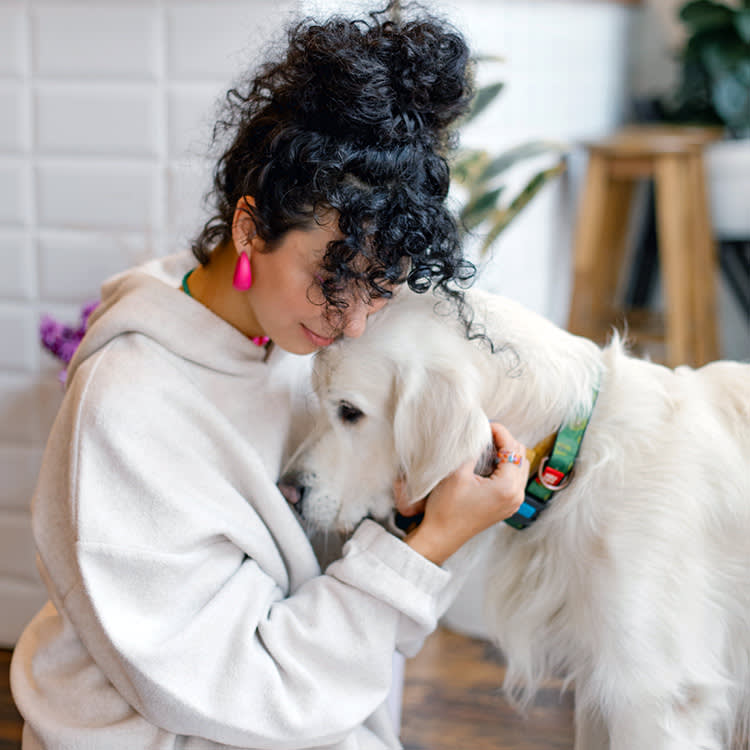
share article

Your pet wants you to read our newsletter. (Then give them a treat.)
Sign up for product updates, offers, and learn more about The Wildest, and other Mars Petcare brands . Must be over 16 years to sign up. See our privacy statement to find out how we collect and use your data, to contact us with privacy questions or to exercise your personal data rights.
In This Article:
How Do I Know If Anxiety Medication Is Right for My Dog? opens in a new tab Types of Anxiety Medication For Dogs opens in a new tab Prescription Anxiety Medication for Dogs opens in a new tab Over-the-Counter Anxiety Medication For Dogs opens in a new tab Natural Remedies for Anxiety in Dogs opens in a new tab
Many pet parents have dogs struggling to cope with anxiety. The good news is that there are medications that can help. But remember, it’s always best to consult with your veterinarian before giving your dog any medication, even over-the-counter ones. Your veterinarian can help you determine the best medication for your dog’s specific needs and ensure that it is safe for them to take.
How do I know if anxiety medication is right for my dog?
No dog parent opens in a new tab wants to see their pup in pain, whether it’s physical or emotional. Emotional and behavioral issues in dogs often manifest in undesirable and destructive conduct, making addressing these problems feel especially pressing. Don’t forget that some abnormal behaviors may stem from medical issues, so it’s important to have a dog undergo a health screening before labeling them as a “problem child” or seeking medication opens in a new tab . Talk to your veterinarian if your dog’s behavior ever changes suddenly, because it could indicate a medical problem.
Many factors can contribute to a dog’s anxiety, including lack of early socialization, lack of mental/physical stimulation, triggers (like loud noises), and personality. Some dogs continue to struggle with anxiety opens in a new tab , despite their parents' best efforts. Dogs with anxiety can exhibit a variety of behaviors including:
Excessive vocalization or whining
Shaking opens in a new tab
Compulsive grooming
Inappropriate urination or defecation
Destructive behavior
Avoidance of certain people or places
Once your vet rules out a medical issue as the cause of your dog’s anxiety, they may prescribe anti-anxiety medications as part of a behavioral treatment plan to help your dog. This may be in conjunction with a referral to a veterinary behaviorist.
What are the types of dog anxiety medication?
Three of the most commonly used types of medication for dog anxiety are selective serotonin reuptake inhibitors (SSRIs), tricyclic antidepressants (TCAs), and benzodiazepines. These medications work by influencing mood-altering neurotransmitters: serotonin, dopamine, and norepinephrine.
Selective serotonin reuptake inhibitors (SSRIs)
Serotonin is a chemical messenger that helps to regulate mood, appetite, and stress response. Selective serotonin reuptake inhibitors (SSRIs) block reabsorption of serotonin, leaving more available in the brain. This drug class is often used for chronic management and can take weeks to show results. Examples of SSRIs used for dog anxiety include fluoxetine (Prozac) and sertraline (Zoloft).
Tricyclic antidepressants (TCAs)
Tricyclic antidepressants (TCAs) block the reabsorption of serotonin, norepinephrine, and acetylcholine. Norepinephrine and acetylcholine influence mood, alertness, and attention. Like SSRIs, tricyclic antidepressants are often used to help manage chronic anxiety. Examples of TCAs used for dog anxiety include amitriptyline (Elavil) and clomipramine (Clomicalm).
Benzodiazepines
Benzodiazepines are a type of drug that slow down activity in the central nervous system, causing sedation and reduced anxiety. These drugs tend to be fast-acting and are commonly used for situational anxiety in dogs, like noise/thunderstorm phobia and stress with travel. Examples of benzodiazepines used for dog anxiety include alprazolam (Xanax), diazepam (Valium), and lorazepam (Ativan).
Prescription anxiety for medication in dogs
Addressing fear and anxiety in a dog can be a long process that involves some experimentation. Non-medication techniques, like increasing exercise and mental stimulation, should be implemented before medications. Ultimately, some dogs can truly benefit from anti-anxiety medications.
There’s no one-size-fits-all solution when it comes to anxiety medications for dogs; it depends on the needs of each individual dog. Some pups only need medication to help them cope with infrequent triggers, like occasional car rides or Fourth of July fireworks opens in a new tab , while other dogs may need long-term medication to deal with daily stress. Responses to medications vary among dogs, and they often need to be on the medication for at least a month to show signs of improvement. Below are some commonly prescribed anxiety medications for dogs.
Brand Name(s): Oleptro, Desyrel
Category: Serotonin modulator (serotonin antagonist and reuptake inhibitor)
Prescription required? Yes
Use: Because Trazodone is fast-acting, it is often used for short-term situations, like car rides opens in a new tab , thunderstorm phobias, travel, boarding, and post-surgical confinement.
Side Effects: Sedation, ataxia (unsteady gait), increased appetite, vomiting, diarrhea, drooling, loss of inhibition
Brand Name(s): Xanax
Category: Benzodiazepine
Use: Alprazolam is often used to treat panic attacks that are triggered by loud noises like fireworks, thunderstorms, and construction. Alprazolam is quick-acting and works best when given right before anxious behavior may start. Many vets recommend giving the drug 30 to 60 minutes before a triggering event is expected.
Side Effects: Sedation, ataxia (unsteady gait), increased appetite
Brand name(s): Prozac, Reconcile
Category: SSRI
Use: Fluoxetine is often used to treat separation anxiety opens in a new tab , noise/storm phobias, aggression, and compulsive behaviors, like over-grooming and self-mutilation. It is normally given daily for several weeks before pet parents and veterinarians determine if the drug is working. Fluoxetine is FDA-approved for separation anxiety in dogs.
Side effects: Lethargy, decreased appetite/anorexia, vomiting, diarrhea, restlessness, increased aggression
Amitriptyline
Brand Name(s): Elavil
Category: TCA
Use: Amitriptyline is often used for long-term management of separation anxiety and compulsive behaviors, like excessive grooming. Dogs may need to be on the drug for a few weeks before its effects are seen.
Side effects: Sedation, constipation, urine retention (holding urine in)
Brand Name(s) : Zoloft
Use : Sertraline is often prescribed for chronic management of generalized anxiety and behaviors like compulsive grooming and fear-based aggression.
Side effects: Decreased appetite/anorexia, vomiting, lethargy, restlessness, increased aggression
Clomipramine
Brand name(s) : Clomicalm, Anafranil
Use: Clomipramine was the first FDA-approved drug to treat separation anxiety in dogs. The drug is also prescribed off-label to help manage noise/thunderstorm phobias and compulsive behaviors.
Side effects: Sedation, lethargy, vomiting, change in appetite (increase or decrease), constipation, urine retention (holding urine in), and decreased tear production
Dexmedetomidine, oromucosal gel
Brand name(s): Sileo
Category: Alpha-2 agonist
Use: Dexmedetomidine in oromucosal gel form is the first drug FDA-approved to treat noise aversion in dogs. It is fast-acting and can be given in anticipation of thunderstorms, fireworks, or other loud noises. If possible, the drug should be given 30 to 60 minutes before an anticipated noise trigger.
Side effects: Sedation, vomiting, pale gums soon after administration, lowered heart rate
Brand name(s): Paxil
Use: Paroxetine is given to dogs for chronic management of generalized anxiety and compulsive behaviors. It can often take a month or so to determine if Paroxetine will have the desired effect for a dog.
Side effects: Lethargy, decreased appetite/anorexia, vomiting, restlessness, increased aggression
Can I give my dog over-the-counter medication for anxiety?
Dog parents may find themselves in a situation where they consider over-the-counter dog anxiety medication options. Maybe they didn’t anticipate their dog’s reaction to a sudden storm. Or their dog who is usually happy to go on short car rides isn’t really enjoying the cross-country road trip. Or maybe they forgot to include their dog in the Fourth of July preparations (plan ahead folks!).
While some dog parents have found success with over-the-counter options, it’s essential to recognize that there are no consistently effective solutions. Consult with your veterinarian before giving your dog any medication, even if the medication is available over the counter.
Benadryl (diphenhydramine) is an antihistamine often used to counter the effects of occasional allergies. Many people experience profound sleepiness in addition to allergy relief, and they hope the drug has the same effect on their dog. Some dogs may experience mild sleepiness from Benadryl, but those results are not consistent. Some dogs may also experience a paradoxical effect, when the drug makes them over-excited instead of calming them down.
Dramamine (dimenhydrinate) is an antihistamine commonly used for motion sickness in people. Dogs that experience nausea-induced anxiety during car rides and other travel may benefit from Dramamine, however, it is unlikely to address generalized anxiety or a direct fear or travel opens in a new tab .
Melatonin is a hormone that the brain produces as part of a normal sleep cycle. Melatonin is a popular human supplement used to help regulate sleep (and induce some wild dreams). Some dogs may experience a decrease in anxiety and fear-based behaviors, but there is a lack of sufficient evidence of its efficacy.
Are there natural remedies for treating anxiety in dogs?
Addressing a dog’s anxiety typically involves a comprehensive approach opens in a new tab , and some pet parents may want to explore natural remedies before or in conjunction with medication. Some natural and homemade remedies for dog anxiety include:
Routine: Being able to predict what will happen in their day helps ease some dogs’ anxiety and uncertainty.
Exercise: Boredom and pent-up energy can contribute to undesirable, anxiety-induced behaviors. Make sure your pup is getting plenty of exercise.
Mental stimulation: Along with physical exercise, mental stimulation can help decrease stress and anxiety. Dog parents can provide food puzzles opens in a new tab , teach new tricks, or play games like “hide and seek.”
Music: Many studies have suggested that music can contribute opens in a new tab to creating a calming environment for dogs. When making your dog’s Spotify playlist, keep in mind that dogs tend to be more calm when listening to classical music, reggae, or soft rock.
Pheromones: Dog-appeasing pheromone can be used to reduce stress and anxiety in dogs and is available in diffuser and collar forms.
Compression clothing: Products like Thundershirts opens in a new tab or Anxiety Wraps opens in a new tab are used to apply consistent pressure to a dog’s body in hopes of providing a soothing sensation that eases anxiety.
Training: Work with an experienced dog trainer or veterinary behaviorist to discuss desensitization techniques and how to teach your dog alternative responses to triggers.
FAQs (People also ask):
How do i administer anxiety medications to my dog.
Almost all at-home anxiety medications for dogs are given orally. The frequency of administration depends on the drug; some are given daily on a set schedule, and others are given as needed in anticipation of anxiety-inducing events.
Can medications be used to manage dog anxiety long-term?
Some medications can be used to manage dog anxiety long-term. Medications should also be combined with training and environmental modifications.
What side effects do dog anxiety medications cause?
Side effects of dog anxiety pills vary by medication. Common side effects seen include sedation, nausea, and change in appetite (increase or decrease). Side effects often subside with time.
References:
A Review of Pre-Appointment Medications to Reduce Fear and Anxiety in Dogs and cats at Veterinary Visits opens in a new tab
Evaluation of Diphenhydramine as a Sedative for Dogs opens in a new tab
The Effect of Different Genres of Music on the Stress Levels of Kennelled Dogs opens in a new tab
Efficacy of Dog-Appeasing Pheromone (DAP) for Ameliorating Separation-Related Behavioral Signs in Hospitalized Dogs opens in a new tab
- dog opens in a new tab
- dog health opens in a new tab
- new dog opens in a new tab

Dr. Alycia Washington, DVM, MS
Alycia Washington, DVM, is a small animal emergency veterinarian based in North Carolina. She works as a relief veterinarian opens in a new tab and provides services to numerous emergency and specialty hospitals. Dr. Washington is also a children’s book author and freelance writer with a focus on veterinary medicine. She has a special fondness for turtles, honey bees, and penguins — none of which she treats. In her free time, Dr. Washington enjoys travel, good food, and good enough coffee.

- Pet Supplies
- Health Supplies
No featured offers available
- Quality Price,
- Reliable delivery option, and
- Seller who offers good customer service
Image Unavailable

- To view this video download Flash Player

Ark Naturals Happy Traveler Capsules, Natural Calming Treats for Dogs and Cats, Reduces Anxious and Nervous Behavior, 30 Count, Packaging May Vary
30 Capsules (Pack of 1)
75 Soft Chews (Pack of 1)
75 Soft Chews (Pack of 2)
( $0.11 / Count )
About this item
- ANXIETY RELIEF FOR DOGS & CATS: Our natural calming capsules are formulated for cats and dogs to reduce anxiety in stressful situations.
- REDUCES SITUATIONAL & TRAVEL ANXIETY: Calm Traveler is designed to reduce anxiety and nervousness associated with traveling, ease motion sickness and can destructive or aggressive behavior caused by separation anxiety.
- NATURAL CALMING SUPPLEMENT: Our natural herbal calming treat is formulated with L-tryptophan, which effects mood and reduces aggression in stressful situations while Valerian, Chamomile and St. John's Wart work together to calm anxiety and relieve nervousness.
- OCCASIONAL ANXIETY SUPPORT: Use Happy Traveler Capsules only when necessary with change in your pet's daily routine. Amount varies by weight of your pet.
- CAREFULLY CRAFTED IN THE USA: Our recipe is formulated with high quality and natural ingredients that are corn free, soy free, wheat free, and have no artificial colors or preservatives.
Additional Details

Customer ratings by feature
Similar item to consider.

Top rated similar items

Product information
Looking for specific info, product details.
- Is Discontinued By Manufacturer : No
- Product Dimensions : 2 x 3.75 x 2 inches; 0.8 ounces
- Item model number : 700146
- Date First Available : April 21, 2006
- Manufacturer : Ark Naturals
- ASIN : B001E0Z4LU
- #225 in Cat Relaxants
- #540 in Dog Relaxants
Product Description
Ark Naturals Happy Traveler Calming Capsules, formulated by a holistic veterinarian and PhD herbal scientist, ease anxiety and motion sickness. Useful for separation anxiety, travel anxiety, to socialize a nervous or excitable pet into a new environment, during thunderstorms, fireworks, airline travel, visits to groomers, vets, and kennels. Non-habit forming. Made in the USA.
Important information
Ingredients.
Active Ingredients: Valerian (100Mg), German Chamomile (100Mg), L-Tryptophan (100Mg), St. John'S Wort (50Mg). Inactive Ingredients: Gelatin (Capsule), Magnesium Stearate, Microcrystalline Cellulose, Whey.
Recommended Use: Up to 25 lbs- 1 capsule Up to 75 lbs- 2 capsules Over 75 lbs- 3 capsules
Compare with similar items
Customer reviews.
Customer Reviews, including Product Star Ratings help customers to learn more about the product and decide whether it is the right product for them.
To calculate the overall star rating and percentage breakdown by star, we don’t use a simple average. Instead, our system considers things like how recent a review is and if the reviewer bought the item on Amazon. It also analyzed reviews to verify trustworthiness.
Customers say
Customers like the calming results of the pet supplies. They say it really helps calm their pets down. They are also satisfied with the side effects, and ingredients. However, some customers have reported issues with the smell and size of the treats. They mention that the treats smell horrible and are too large for cats to chew. Customers also differ on performance, value, and taste.
AI-generated from the text of customer reviews
Customers like the mood of the pet supplies. They mention that the calming results are excellent, they really relax their anxious dogs, and that they keep their dogs very calm during heavy rain and thunderstorms. They also say that the chews make grooming much easier and more relaxing for their pets.
"...But it works! The ingredients in these treats will help calm your pet & make them sleepy. Start with the recommended dosage for your pet...." Read more
"...He is a very high energy dog. These have made him happier and we are more peaceful. Yeah!" Read more
"...W have one to each dog and both are calm and relaxed . Thankful we gave it a try!" Read more
"Our puppy gets carsick and these chews seem to really help calm him down . I will continue to use them." Read more
Customers are satisfied with the side effects of the pet supplies. For example, they mention it didn't make them sick, it helped with car sickness, and it's all natural.
"...We are currently traveling a 6 plus hours trip and no vomiting !!! W have one to each dog and both are calm and relaxed. Thankful we gave it a try!" Read more
"...amount they are real small and drove 7 hours and she had no problems did not get sick at all" Read more
"This pill have worked great for my dog. Although it does not prevent from vomiting , you can tell my dog is more chilled on the car." Read more
"...now I have to admit she was calmer, she didn't get sick . So I would say it worked...." Read more
Customers like the ingredients in the pet supplies. They mention that it's all natural, calming herbs, and smells good.
"...And because the ingredients are natural , it won't harm her...." Read more
"...checked with my vet and he gave it the thumbs up because of the natural ingredients ...." Read more
"...They smell good, like fruit and various herbs . I imagine they'd work great if only she'd get past the taste." Read more
"...I am sure it wull work and it's natural !!" Read more
Customers are mixed about the performance of the pet supplies. Some mention that it works wonderful and produces big results, while others say that it didn't work for their pets.
"I was skeptical but this works very well , it dose make my girl a little jumpy though. I want her to be like a calm regular dog...." Read more
"...It worked good for both . One is 25/30 lb and the other is 50/55lb. So the dose is accurate. Takes about an hour to work" Read more
"...It did absolutely nothing for my dog . It may do something for anxiety at some point down the road, but for car sickness- don’t bother." Read more
"...I tried the Happy Traveler's on him and they work really well . Every dog will have a different reaction, but I am saying I am thrilled with these...." Read more
Customers are mixed about the value of the pet supplies. Some mention it's good value, pricey for the amount but well worth it, and a great buy. Others say it'll waste your money and time cleaning your car from dog vomit.
"If your pet gets car sick, this is NOT worth the money . It did absolutely nothing for my dog...." Read more
"...You just have to try to find out It’s worth tryong since the cost is so low ! 💕 I highly recommend this product...." Read more
" WASTE OF MONEY AND MY TIME CLEANING CAR FROM DOG VOMIT.DOES NOT WORK AT ALL - DEFINITELY NOT RECOMMENDED...." Read more
"... Worth the money for your best friend. Any dog with anxiety we would highly recommend! We tell all of our friends with dogs to try!" Read more
Customers are mixed about the taste of the pet supplies. Some mention that their dogs love the taste and think they are just treats. They also say that the herbal doggie downers are delicious and great for calming dogs with anxiety. However, some customers say that they are effective but must taste nasty. They mention that the product smells like potpourri and is hard to chew.
"...They are small & chewable , & can be given just like a treat...." Read more
"...I had to force them down our dog. The chews smell terrible and must taste the same ...." Read more
"...Helps my yorkie when she’s nervous or too hyper. She loves the taste too !" Read more
"...I am pissed more about the lies, crap in those treats , false advertisement to make me believe, fall for the scam and make my dog sick, clean my car,..." Read more
Customers dislike the smell of the pet supplies. They say that the treats smell horrible.
"...As others of mentioned, they do have a smell to them , but that has never stopped my dogs from happily taking them & eating...." Read more
"...It has Avery strong odor " Read more
"...but he sniffed and really took his time with these.... they are rather smelly . He eventually ate them all, and later we hit the road...." Read more
"... They smell nasty . Forget trying to get a cat to eat one of these.. been there tried that when it was time to groom the kitty. Not fun." Read more
Customers find the size of the pet supplies to be too large for their cats to chew. They also say the treats don't help their pets with anxiety and make them puke.
"We bought this for the ingredients. Unfortunately, none of our cats will eat these ." Read more
"...My only complaint is that they are too small (about the size of a large generic adult aspirin) and would get stuck in his teeth." Read more
"...When I opened the package it had a strong odor and my cat would not eat one ! We made the trip okay with him without needing Happy Traveler...." Read more
"...Also the bag is very small , smaller than you'd think looking at it. Many of the treats were crushed in shipping too" Read more
Reviews with images

- Sort reviews by Top reviews Most recent Top reviews
Top reviews from the United States
There was a problem filtering reviews right now. please try again later..
Top reviews from other countries
- Amazon Newsletter
- About Amazon
- Accessibility
- Sustainability
- Press Center
- Investor Relations
- Amazon Devices
- Amazon Science
- Sell on Amazon
- Sell apps on Amazon
- Supply to Amazon
- Protect & Build Your Brand
- Become an Affiliate
- Become a Delivery Driver
- Start a Package Delivery Business
- Advertise Your Products
- Self-Publish with Us
- Become an Amazon Hub Partner
- › See More Ways to Make Money
- Amazon Visa
- Amazon Store Card
- Amazon Secured Card
- Amazon Business Card
- Shop with Points
- Credit Card Marketplace
- Reload Your Balance
- Amazon Currency Converter
- Your Account
- Your Orders
- Shipping Rates & Policies
- Amazon Prime
- Returns & Replacements
- Manage Your Content and Devices
- Recalls and Product Safety Alerts
- Conditions of Use
- Privacy Notice
- Consumer Health Data Privacy Disclosure
- Your Ads Privacy Choices
Embark on road trips with travel sickness tablets for dogs
An ideal anti-travel accessory for a road trip….

ADAPTIL Calm Transport Spray
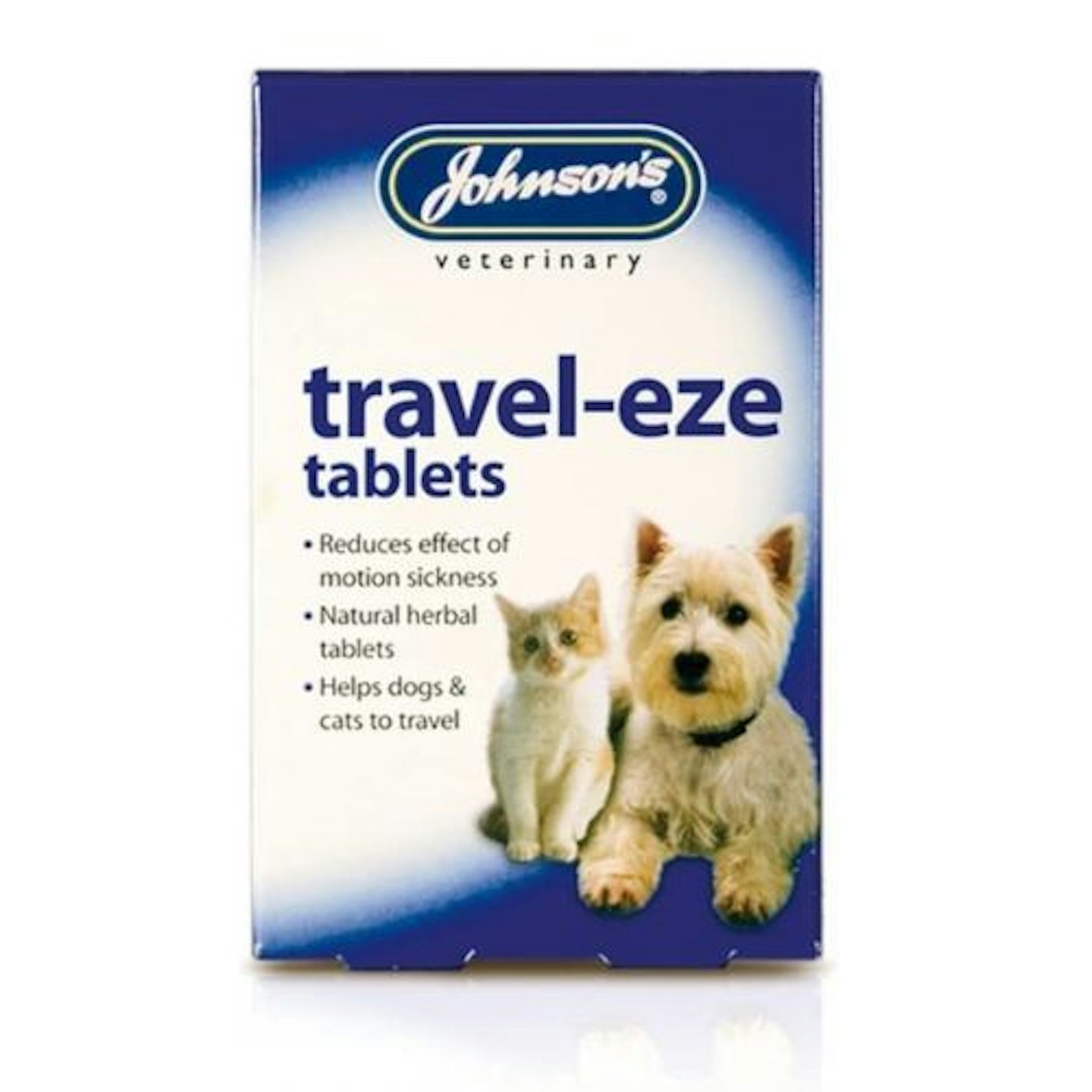
Johnsons Travel-Eze Tablets
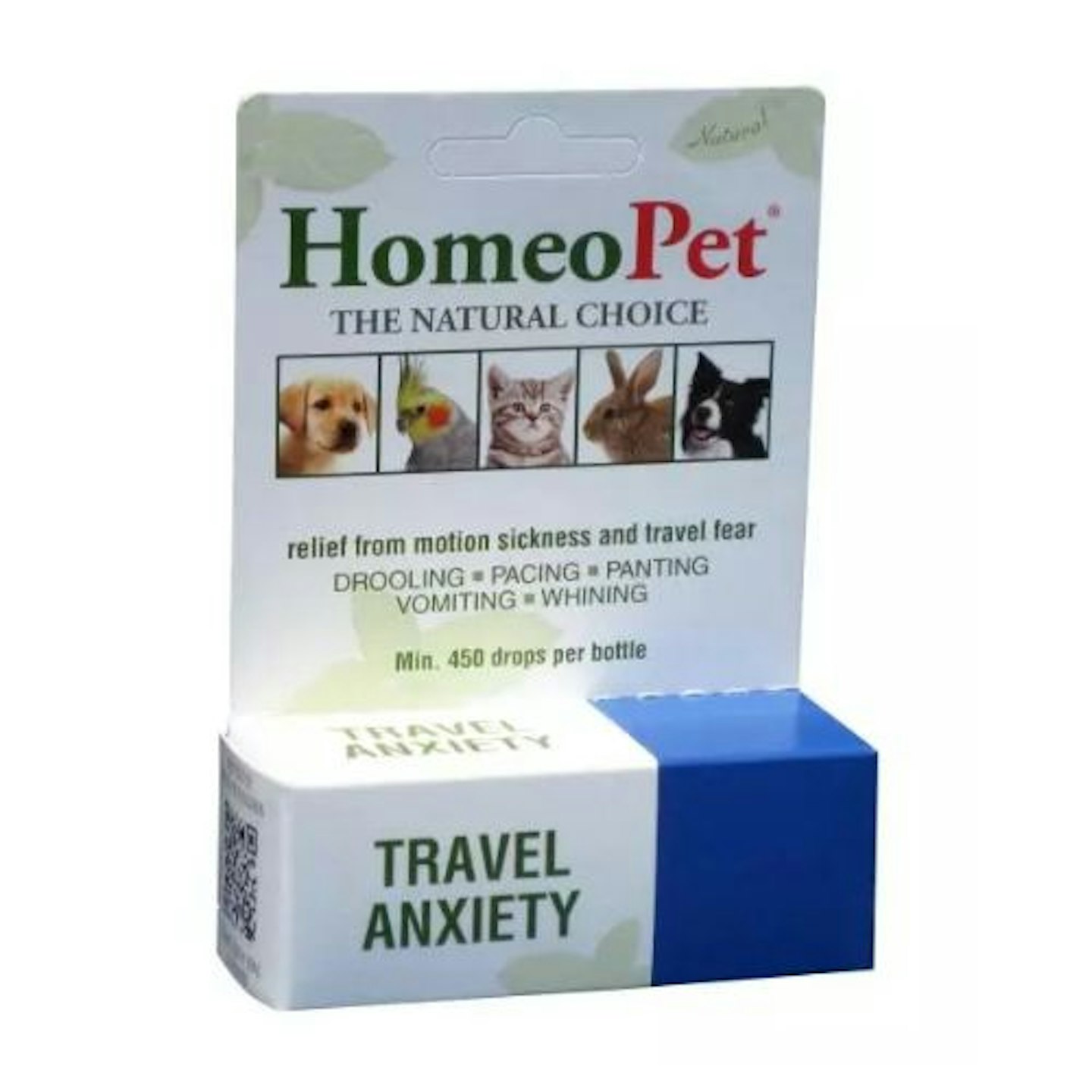
HomeoPet Anxiety Homeopathic Remedy

Yappy Calming Supplements
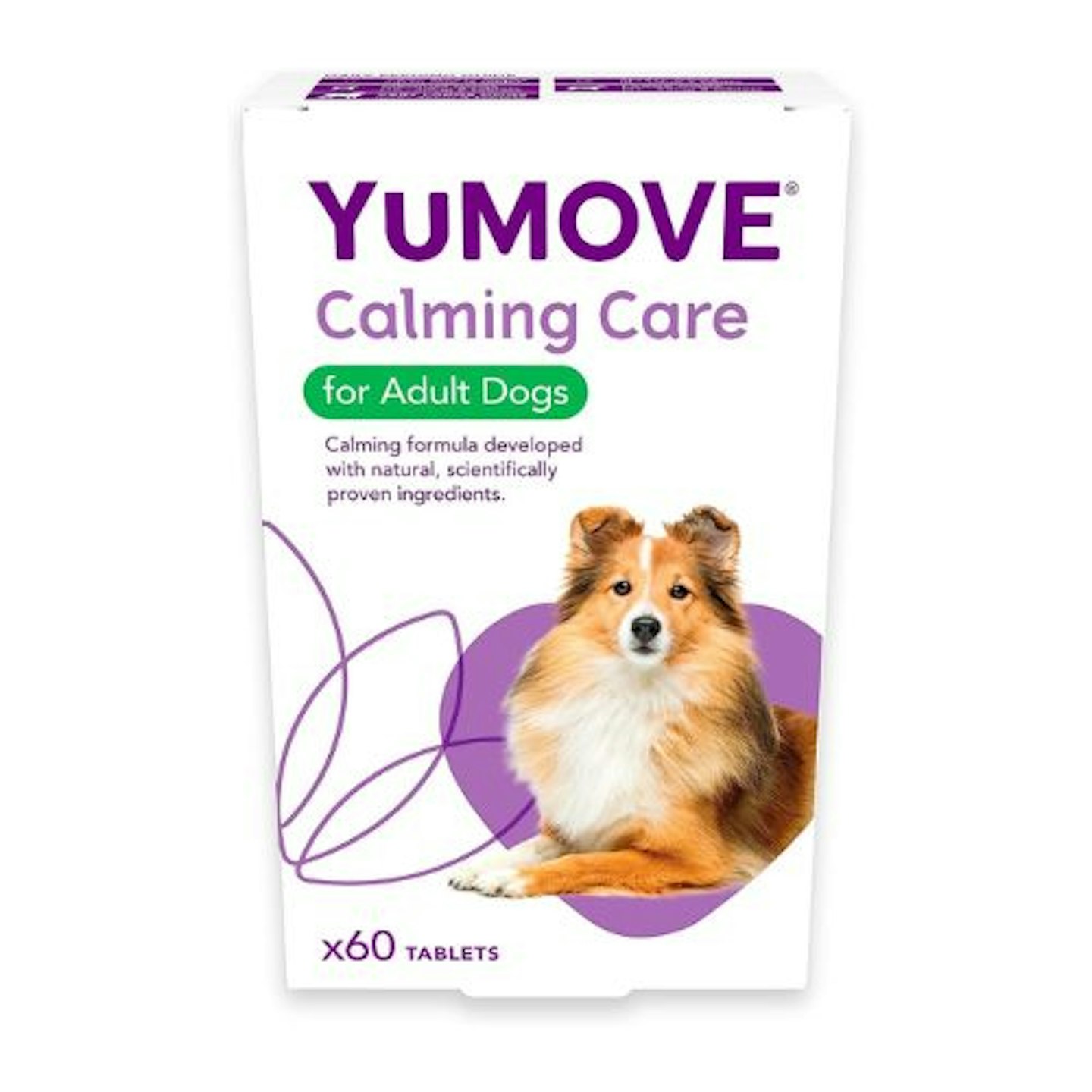
YuMOVE Calming Care
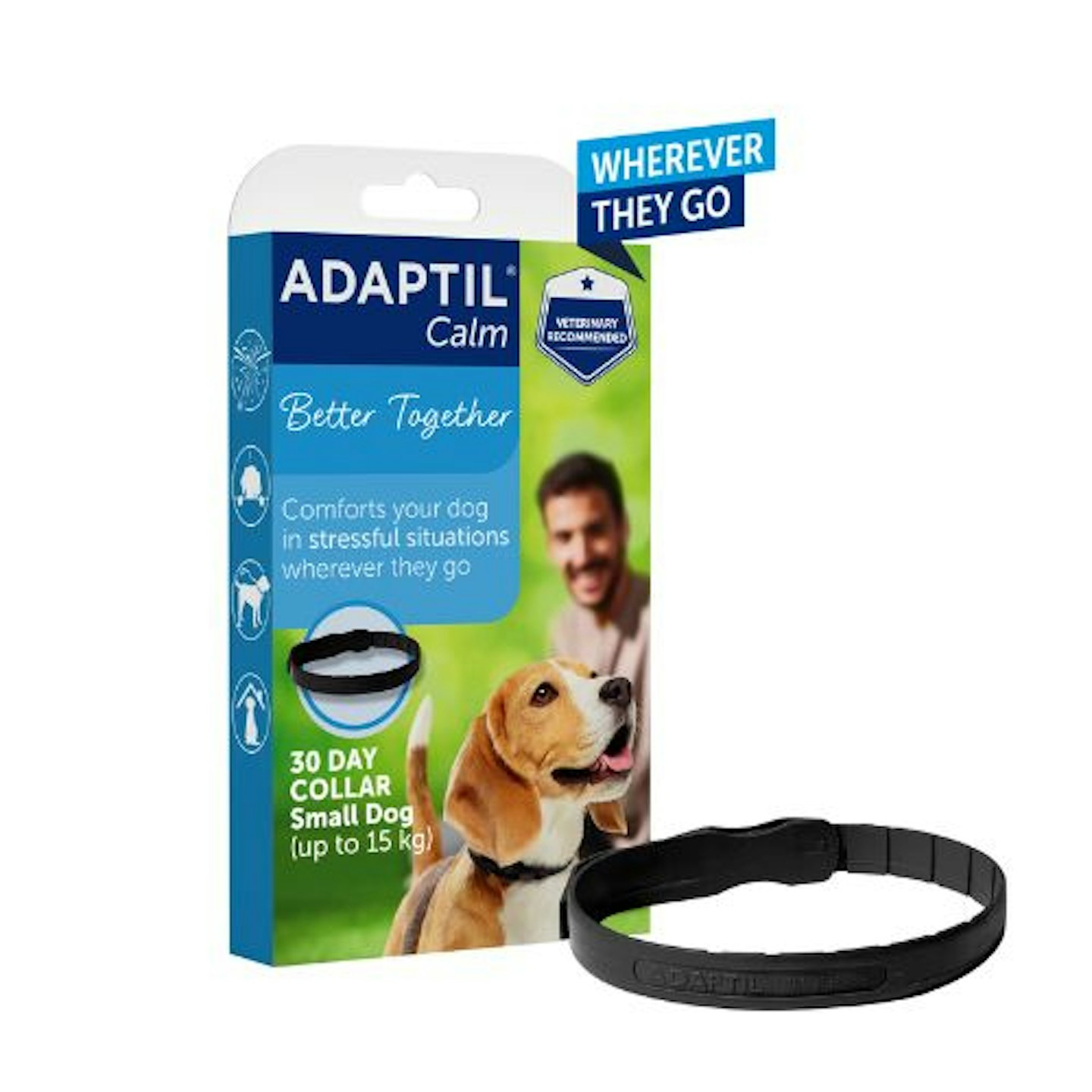
Adaptil Dog Appeasing Pheromone Collar
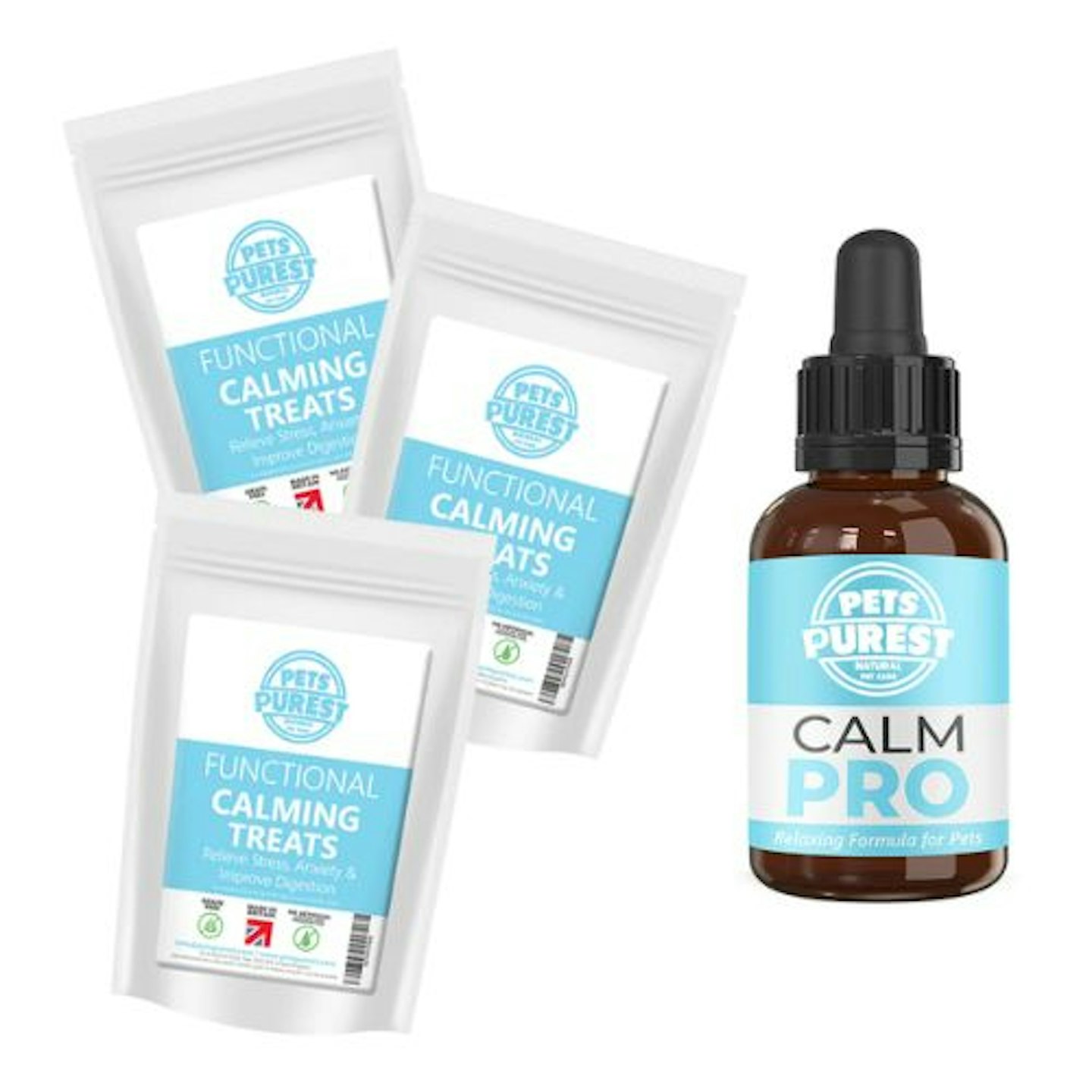
Pets Purest Calming Bundle
Investing in travel sickness tablets for dogs ensures a vomit-free road trip that we all dream of… After all, travels and adventures with our beloved furry friends can be a little stressful. Though a fun experience, if you don't have the right dog travel accessories , you’re in for a hell of a ride. Whether travelling in a car, on a train or jet-setting abroad, we’ve found some anti-sickness solutions.
So, do dogs get travel sickness? Yes – car sickness is a common problem for puppies and dogs, says the PDSA. “Car sickness/motion sickness is thought to be caused when certain types of movement affect the balance centre in the brain, combined with anxiety/stress when travelling,” says the PDSA. Though more common in puppies, your adult and senior pooches can be susceptible to it, also. If you’re looking for short-term solutions, pooch-friendly anti-sickness is your best bet.
Best travel sickness tablets for dogs at a glance:
• Calming spray for transport : ADAPTIL Calm Transport Spray – view on Amazon UK • Tablets for cats and dogs : Johnsons Travel-Eze Tablets – view on Amazon UK • Natural, tasty bites : Yappy Calming Supplements – view on Yappy.com • Multi-pack for journeys : Pets Purest Calming Bundle – view on Pets Purest
Aside from medication and training, what can be done? Well, as a dog’s travel sickness is linked to stress, there are plenty of calming products to help appease your pop and promote an anxiety-free environment. Not only that, there are modifications you can make to the car itself in order to ensure your pooch’s safety and happiness, such as a dog seat belt. This is a space-saving alternative to a car-friendly crate , which can take up a lot of space in the boot.
Overall, the key is making the car a welcoming, safe and comforting space. For example, a car carrier may help them feel secure when travelling. You can even give your pup something that reminds them of home, whether a familiar toy or blanket that’ll help them destress. However, if the constant sick is getting a little too much to bear, check out the best travel sickness tablets for dogs. Below, we will take you through prevention and treatment when approaching dog motion sickness.
Dog-friendly travel sickness remedies
1. adaptil calm transport spray, calming spray for transport, description.
First, we have the ADAPTIL Calm Transport Spray, which has been clinically proven and is trusted by vets, Though scentless to us, this spray contains a synthetic copy of the 'dog appeasing pheromone', which clams dogs fo all ages. It's very simple to use, just spray on a blanket or travel bed - and the effect may last up to around five hours.
Customer Review : "Our 3-year-old dog is a bit of a diva and has a habit of whining in the car. We're used to it but when he started to go to daycare a few months ago, they asked us to try this, to calm him down. I spray it on a blanket 15 minutes before he's picked up and it's improved how he deals with the van from the second trip! Would 100% recommend it!"
- Scentless to humans and other pets
- Simple to use: simply spray
- A reassuring and comforting scent
- Some customers noticed no improvement
2. Johnsons Travel-Eze Tablets
Tablets for cats and dogs.
Rrp: £ 4.30
Nest, we have some tablets, which reduce the effect of motion sickness using an active ingredient, known as Zingiber officinale. A natural herbal product, these Johnsons Travel-Eze Tablets contain 24 tablets and can help both your cat and dog. Fancy that! How much your pet requires is based on its size and life stage.
Customer Review : "I didn't expect these to work. Have a pup who has quite bad travel sickness. Wasn't expecting these to work given the price and the fact they were over the counter. Gave him 2 tablets before a 3 hours car journey which would usually make him sick. He was fine. Same for the journey back the next day. Really impressed."
- Natural, herbal product
- Contain an active ingredient
- Suitable for cats and dogs
- Tricky to give dogs tablets
3. HomeoPet Anxiety Homeopathic Remedy
Homoeopathic remedy.
www.viovet.co.uk
The HomeoPet Anxiety Homeopathic Remedy contains a precise blend of natural organic ingredients, which will help your pet out in stressful situations. Choose between Anxiety, Travel and Firework Blends. The Travel Anxiety Blend provides fast, non-sedative relief for motion sickness, and fear of travel in cars, boats, trains, and aeroplanes.
Customer Review : "Seems to work a treat, we had a very travel-sick puppy, who just got more anxious by the minute. Not any more, she's calm and happy to travel."
- Suitable for cats, dogs, rabbits and budgies
- Precise blend of natural ingredients
- Perfect for tackling symptoms
- A few customers have not seen any improvement
4. Yappy Calming Supplements
Natural, tasty bites.
www.yappy.com
It's safe to say, we're impressed with the Yappy Calming Supplements. They're easy to administer - because what dog can resist a treat? Grain-free and packed with natural ingredients to support overall health, these soft and tasty chews promote calmness, composure and sleep. They're perfect for travel, fireworks and separation anxiety.
Customer Review : "Bought to help with travel anxiety and sickness. Finn is slightly more relaxed travelling and no longer sick, but still dribbles. The only thing it does seem to make him slightly sleepy, but not a bad thing if it removes the stress."
- Personalisable tub label
- Treat-like and totally tasty
- Contains natural ingredients
- One reviewer felt that it could have come with more information on it's usage/effectiveness
5. YuMOVE Calming Care
Stress-busting supplement.
There's no surprise that YuMove has made this list. YuMOVE Calming Care is a great anti-anxiety product for your pet. Containing L-theanine, B vitamins, natural fish protein hydrolysate and lemon balm, these tablets will be sure to soothe your pooch. Plus, there are some supplements available for our sickly and nervous feline friends, too.
Customer Review : "He sleeps deeper and for longer. He - mostly - ignores door knocking and visitors now. He is so much less jumpy we can finally relax when walking him. He has also found his playful-ness again; often found playing, digging, burying, shredding, rolling and wriggling around, calling out his "play" bark. This contains no synthetic drugs, just natural ingredients (think of human vitamin tablets or Omega oil supplements).”
- Life-changing testimonials
- Suitable to use short and long term
- Eases anxiety and helps reduce stress
- Only dog-friendly
- The taste isn't nice
6. Adaptil Dog Appeasing Pheromone Collar
Calming collar.
www.petsathome.com
If you struggle to get your pooch to take anything, consider the Adaptil Dog Appeasing Pheromone Collar. Similar to our travel sickness bracelets, this anti-sickness remedy is great for travel, containing a copy of the natural dog-appeasing pheromone, this collar will have a claiming effect on your pooch. The effect can last up to 4 weeks, too.
Customer Review : "Over the years I've tried everything. This year it was the turn of the collar, wow I was very happy, she was still aware but not panting and shaking as she normally does. Going to get one tomorrow and get her ready for New Year's Eve. I guess it's a process of elimination until you find what works for you."
- Suitable for adult dogs and puppies
- Help reduce stress and support training
- The effect of the collar lasts up to 4 weeks
- May be suited best to puppy training
- Only comes in medium or large sizes
7. Pets Purest Calming Bundle
Multi-pack for journeys.
www.petspurest.com
Perfect for the first aid kit, the Pets Purest Calming Bundle comes equipped to help calm your nervous pet. The Calming Aid Drops are packed with botanical herbs, acting fast and lasting long when it comes to calming down your pet. As for the treats, they contain fresh protein, active ingredients and botanicals for stress, anxiety and digestion.
Customer Review : "This product kept my dogs safe and stress-free. I even gave the neighbour's dog some to as she was really stressed. Highly recommended."
- Helps reduce stress and anxiety
- Two preparations for food and travel
- Prevents destructive behaviour
- A few customers did not see any improvements
Verdict: What are the best travel sickness tablets for dogs?
Our favourite travel sickness remedy for your pooch is the Yappy Calming Supplement . They're tasty, packed with ingredients that support your pooch's health and soothe your dog through stressful situations. Whether during a firework display, travelling in the car or when you have to pop out, these easy-to-administer treats will go down well.
Travel sickness tablets for dogs FAQs
What are the symptoms of travel sickness in dogs.
With help from the PDSA , we can answer some questions you may have about travel sickness. What are the symptoms of travel sickness in dogs? Apart from vomiting, which is never a treat to clean.
Aside from nausea/vomiting, the PDSA says there are other symptoms: drooling, panting, swallowing a lot, lip licking and retching. Plus, some dogs may be afraid to travel due to car sickness. So, if your pup tends to shake before being going inside, pee or poops during travel, barks or whimpers or refuses to get inside, these could all be signs that your dog is concerned about being sick.
If not managed properly, the PDSA advises consulting your vet – as it worsens over time.
How to stop travel sickness in dogs
For this, there are preventive measures you can take, as well as treatments for travel sickness.
How can we prevent car sickness? Well, it’s to get your dog used to car travel, says the PDSA:
Start with short journeys – which are no more than five minutes. Then, gradually build with time.
Use a crate or harness – as these travel accessories will help your pooch feel safe and secure.
Give them comfort – for example, this could be a dog travel bed , so they don’t slip around.
Taking regular breaks – on your journeys will help travel train your dog.
Walk and feed them in advance – the latter of which should be at least 2-3 hours before travel.
Keep them cool – by popping the air-conditioning on or grabbing a comfy cooling mat .
So, what we do to help with symptoms in the meantime?
Restart travel training – as mentioned above, is the best long-term solution for happy car rides.
Anti-anxiety products – are a good way of helping your dog feel less anxious about travel.
Medications – are a short-term solution. Don’t give your pooch any human medication.
Home remedies – typically are herbal products but haven’t got much evidence to show they work.
Make your own travel sickness dog biscuits
Of all the home remedies we came across in our research, this was by far our favourite. Can you believe that owners homemade ginger biscuits for dogs suffering from travel sickness? We’ve found a fabulous recipe from Bishopton Dog Walking Services , which may remedy your poor pooch.
Ingredients :
170g self-raising flour
85g peanut butter
Some hot water
2 tsp ginger paste
½ tsp cinnamon
1. Add 85g of peanut butter and four tablespoons of hot water to a bowl – give it a good mix.
2. Then, add 170g of self-raising flour, two teaspoons of ginger paste, 1/2 teaspoon of cinnamon and a little water – just enough for a dough – and mix. Remember to roll your sleeves up.
3. Roll out to 1/4 inch thick and preheat oven to 200°C. Cut out biscuits and place them on a baking tray.
4. Cook for 15-20 mins until golden brown. These make a perfect car-sick treat for your pooch.
Piper Huxley is a Homes, Garden and Wellness Product Writer for Take a Break, specialising in pet health. When she’s not barking about dog supplements, she’s online devouring cat content.
Primary Navigation Mobile
- Vans & Pickups
- – New car reviews
- – Used car reviews
- – New Car Awards
- – Car companies
- – Electric cars
- – SUV Cars
- – Owner reviews
- – Extended reviews
- – Used cars for sale
- – New cars for sale
- – Nearly new cars for sale
- – Car history check
- – Car choosing tool
- – Free car valuation
- – Sell my car
- – Car Leasing
- – Car leasing special offers
- – Car leasing advice
- – Car Finance
- – Car finance advice
- – Get finance quote
- – Car loan calculator
- – Car Tax advice
- – Best Cars
- – Best car products
- – Car buying
- – Car glossary
- – Used cars
- – Car news
- – Car comparison
- – Car Jargon Explained
- – Car tax calculator
- – How benefit-in-kind BIK tax works
- – Buy a car warranty
- – Compare car insurance
- – Find a car's insurance group
- – GAP insurance
- – Car insurance advice

The best dog anti-travel sickness products for your pooch
• Keep you and your dog comfortable while travelling • Medicinal and non-medicinal products • Products which have been backed up by years of scientific research

Written by Myles Warwood Published: 3 July 2022 Updated: 4 July 2022
There are two reasons why your dog may get travel sick. It may be, as many of us, that the vehicle’s motion makes them feel a bit woozy. In humans, motion sickness can be caused by going over bumps when travelling in a car, with the inner ear sending different signals to your brain from what your eyes are seeing. These mixed messages are what make you feel unwell and a bit queasy.
We can only assume that this would be the same for dogs when they get motion sickness. However, if a dog doesn’t like travelling in a car, they may also get anxiety, resulting in the same thing, and poor pup’s breakfast being on your seats.
How to spot motion sickness in dogs
Dogs give minor signs of feeling unwell when travelling; at this point, prevention is always better than letting it play out. Stopping for a while so your dog can have a comfort break, some fresh air, and readjust to a non-moving vehicle can help. A quick walk in a new environment where they can sniff away can help calm them and get their brains working again.
However, you won’t know to stop if you don’t know the signs, and here they are:
• Drooling • Panting • Swallowing a lot • Lip licking • Retching
Related | The best dog barriers for your car
Whether it’s a one-off or a regular thing, having a dog that gets motion sickness can affect walkies and stress you and your poor pooch out. Your dog may become afraid of travelling, worsening their symptoms, even on short journeys.
Signs that your dog may be anxious or fearful of travelling in the car include:
• Barking or whimpering • Shaking before or during travel • Peeing or pooing in the car • Pulling away from the car or refusing to get inside.
How to deal with travel sickness in dogs?
Motion sickness tablets, like we’re going to list today, can be an excellent short-term fix for the problem if you do not have to travel often or if you need to make a journey without ample time to prepare your dog.
According to the PDSA, here are some tips which could help you prevent car sickness:
• Start with short journeys (no more than five minutes), then gradually build up by a few minutes at a time • Use a pet-safe crate or travel harness to help them feel safe and secure • Give them something comfortable to sit on and make sure they don’t slip around when the car moves • Take regular breaks on journeys.
Some other things that might help your dog when travelling:
• Feed them at least two-to-three hours before travel • Walk them before a journey • Keep them cool in the car (ensure the cool air reaches your dog wherever they are sat).
Related | The best seat belts for dogs
The best dog travel sickness medicine
Johnsons vet travel capsules.
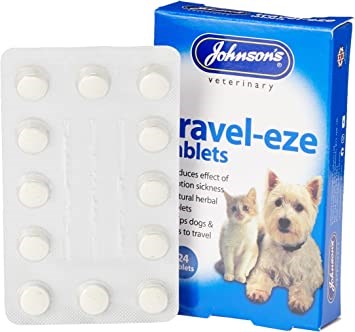
Price: RRP £3.90 | VIEW OFFER
This simple and relatively inexpensive tablet can help elevate travel sickness and make your pooch not feel as sick as a dog. This natural herbal product is said to reduce the effect of vehicle motion in dogs and cats.
On the back of the pack, it contains how many tablets you should give your animal 30 minutes before you travel. It states on the box that if you take a break in the middle of the journey, then the dose can be repeated if desired. It does not give precise information on how much should be taken and how far apart.
Pros • Very well-respected brand • Natural herbal product • Plenty of reviews on Amazon
Cons • Exact timings and time between dosage is not given
ADAPTIL Calm Transport Spray
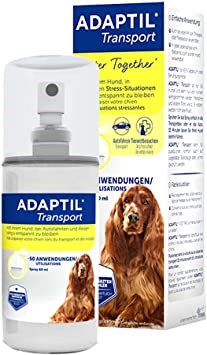
Price: RRP £20.62 | VIEW OFFER
ADAPTIL has been carrying out research into dog behaviour for over 25 years. This transport spray is a synthetic reproduction of a hormone naturally released by a mother to calm and reassure their puppies. To make it work, spray it onto your car’s fabric or dog bed; it’s odourless and does not affect humans 15 minutes before travelling, and it will provide this synthetic calming hormone for up to five hours.
Pros • Synthetic reproduction of a natural hormone • Long-lasting • Quick to work
Cons • Expensive for a small bottle
HomeoPet Travel Anxiety
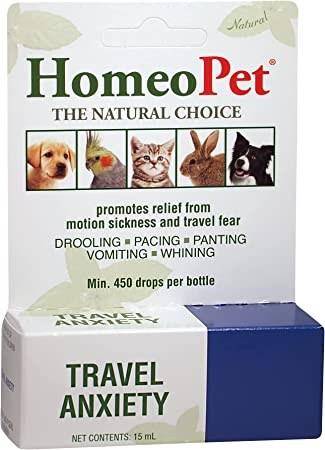
Price: RRP £10.99 | VIEW OFFER
This is another natural pet medication that can be delivered orally, on a snack or in your dog’s water, or you can drop them directly into your dog’s mouth. When using these types of medicine, you must always read the directions for use and do as much research as possible. With this medicine, you may administer one dose every 15 minutes up to four quantities. The first dose may take up to 30 minutes to work.
It’s said to relax your dog rather than send them to sleep – it doesn’t use chemicals and carries up to 90 doses per bottle.
Pros • Natural herbal product • No known side effects • No harsh chemicals
Cons • The research on this product is vague
Dog calming products
If medicines aren’t really what you want to be giving your dog, then some products are said to help without medication.
Adaptil Dog Appeasing Pheromone Collar
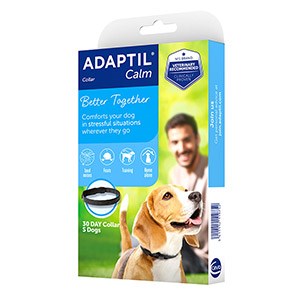
Price: RRP £22.75 | VIEW OFFER
Instead of spraying a synthetic version of the hormone pheromone on your dog’s bedding to help keep them calm, if you’re travelling to a new environment or kennels, you can purchase a pheromone collar which can last up to four weeks.
It’s super easy to use and goes around your dog’s neck just like a regular collar – ADAPTIL has now made the collars thinner for more comfort around the neck and deeper grooves to eliminate rubbing and ensure better fastening.
Pros • Non-ingested medicine • Removable if not working • Long Life
Cons • Landfill product once lifespan ends
ThunderShirt Anxiety Coat

Price: RRP £29.29 | VIEW OFFER
Studies have proved the ThunderShirt to reduce anxiety in dogs; in the study, more than 85% of dogs were less anxious when wearing the ThunderShirt, and it’s said to help three out of four dogs relieve their anxiety.
In essence, this wearable comfort blanket carries your smell and makes your dog feel safe.
Pros • Not a medicine • Once bought, you have it.
Cons • If your dog becomes untrained, it may not be as effective.
Sign up to the Parkers Newsletter to keep up to date with more of the latest reviews, news, and recommendations from the Parkers team.
Just so you know, whilst we may receive a commission or other compensation from the links on this page, we never allow this to influence product selections – read why you should trust us .

- Help! My dog gets travel ...
Help! My dog gets travel sickness
Travel sickness, also called car or motion sickness, can affect pets as much as humans. Any form of travel can trigger travel sickness- dogs may shake, drool, yawn excessively, vomit and in some cases urinate or defecate. The association between the car and sickness often makes dogs afraid of the car. Luckily there are plenty of things you can try to help your dogs as well as travel sickness tablets which can be prescribed by your vet. Read our advice here.
- Included free as part of many pet insurance policies
- Help, treatment and if you need it, a referral to your local vet
- Open 24/7, 365 days a year
What causes travel sickness in puppies and dogs?
The mechanism for motion sickness is not fully understood. The generally accepted theory is that when there is a mismatch between the brain’s input from the eyes and the middle ear (vestibular system) it triggers the vomiting centre of the brain. This is why, for humans, starting at the horizon as a stable point of reference can help. Car sickness is more common in puppies and thankfully many dogs outgrow their motion sickness as they get older.
What are the signs of travel sickness in dogs?
Early signs of stress/car sickness in dogs include; panting, whining, vocalising, excessive yawning, drooling, pacing and restlessness. This can progress to vomiting and in some cases urinating and defecating. If your dog associates the car with feeling sick they are naturally going to become fearful of getting in the car. This anxiety can be enough to cause sickness before the car has started moving. Preventing travel sickness also involves tackling this anxiety.
How can I stop my dog from getting travel sick?
Face your dog forward - facing forward in the back seat is the best option. It is a legal requirement that your dog is secured in the car, both for your safety and that of your dog. If your dog travels in the front make sure the passenger side airbag is off and that the passenger seat is as far back as possible
Fresh air - open a window to allow air to circulate
Position them so that they can see out the window - much like us having a point of reference outside the car can help. You may need to provide a cushion or booster seat to raise small dogs up
Don’t feed your dog at least 2 hours before a car journey - having a full stomach makes nausea more likely
Distraction - offering a special car trip toy which only comes out on car journeys can help take their mind off the journey
Keep the car cool and quiet - calming music may help
Try using a calming scent - products such as Adaptil and Pet Remedy have been shown to have a calming effect. Alternatively a blanket from home may make them feel more secure
Behavioural modification/ training - For some dogs the fear of the car (and the association with vomiting) can be enough to cause vomiting before the journey has even started. For any dog showing fear of the car-training can help (see below)
Medication - your physical vet will be able to provide motion sickness tablets but these are not recommended for regular journeys and should only be used for a maximum of 2 days in a row. Don’t be tempted to use human medication for your dog as this can be dangerous
How can I help my dog like the car?
Helping your dog like the car is a gradual process, don’t expect instant results but over time perseverance pays off. If you have a dog who is extremely fearful or the measures below don’t seem to be working consider seeking help from a behaviourist- look for behaviourists who are accredited by a recognised body such as Certificated Clinical Animal Behaviourists (CCAB) or Association of Pet Behaviour Counsellors (APBC).
Preparation - if possible use a different car from where the dog has been sick before. Initially open all the doors so your dog doesn’t feel trapped. Add a blanket from home or try using an Adaptil collar or spray (15 minutes before training). If possible, plan to avoid car journeys with your dog for the next few weeks whilst you train them
Watch out for stress - Dogs show a whole range of behaviours when they’re scared as listed above. Your dog should be totally happy with the first step before adding anything else. Be patient
Baby steps - Start by asking your dog to get in and out the car a few times rewarding them each time they jump in. Try feeding your dog in the car as the ‘jackpot’ for all their hard work. If you have a dog who is too scared to even approach the car it would be best to talk to a behaviourist
Avoid ‘luring’ your dog - Try not to use high value treats as a ‘lure’ as this can create a stressful conflict for your dog (tasty food vs. scary place). Imagine, if you saw a bar of chocolate in a scary cave you might be tempted to run in and grab it, but the moment you’ve got your hands on it you’re out of there! Alternatively if you go into the cave even though you find it scary and THEN get rewarded with chocolate, suddenly the cave is a little less frightening
Building it up - Once your dog feels ok sitting in the back seat, try turning the engine on and not going anywhere. Watch for any signs of increasing anxiety. Once this feels okay try a 30 second drive and build from there, keeping drives as smooth and corner free as possible
Keep up the good work - keep reinforcing the idea that the car is an okay place to be. If your dog only goes in the car to the vets they will begin to form a negative association. Try to add in driving short distances to rewarding places e.g. for a walk to dilute the negative association
Give your dog a cue - If you HAVE to put your dog in the car whilst you are still training try using a special harness or lead which is very different from their normal set. This gives your dog a cue that they are going in the car and helps them continue to trust you when it comes to training
Is there a travel sickness tablet for dogs? What about sedation?
Yes, but it has to be prescribed by your vet. Motion sickness tablets can be used to see how much of your dog’s worry around car journeys is related to sickness vs fear. Tablets are also a good option for long or unavoidable journeys but not for use every time. Sedation is rarely the answer although it has its place either as part of a behavioural modification programme or for one-off unavoidable journeys. There is no long term ‘quick fix’ for fearful behaviour but if you’re having trouble seek help from a professional.
Still have questions?
Book a video appointment to have a chat with one of our FirstVet vets for advice, treatment, and if necessary, referral to your local vet
More articles about dog
What is contact allergy in dogs.
The least common form of allergies, contact allergy is often neglected in online sources of information about your dog’s...
Read full article
What is immunotherapy (ASIT) for dogs?
If you have an atopic dog, you probably came across the concept of ‘immunotherapy’ somewhere. Read our article for a des...
What is atopy or atopic dermatitis of dogs?
You might know the term ‘atopy’ but might not know that dogs can have it too. They do, and it looks different than in pe...
Contact a UK vet online right now!
What can we do for your furry friend?
- Assess how they are in that exact moment
- Answer your questions, offer advice, and make a plan about your concerns
- Recommend easily available, over-the-counter pet health products when sufficient
- Make a referral to a local vet when necessary
7 Best Calming Treats for Dogs That Need Some Relaxation
Ease your pet's travel stress, separation anxiety and beyond.
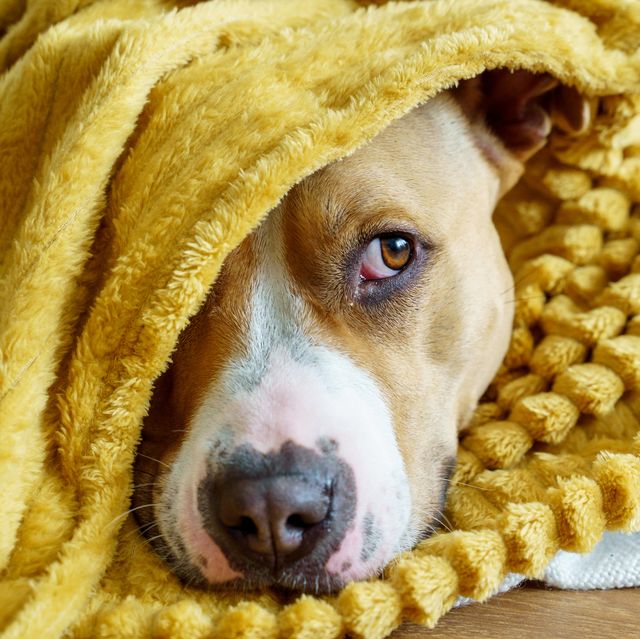
We've been independently researching and testing products for over 120 years. If you buy through our links, we may earn a commission. Learn more about our review process.
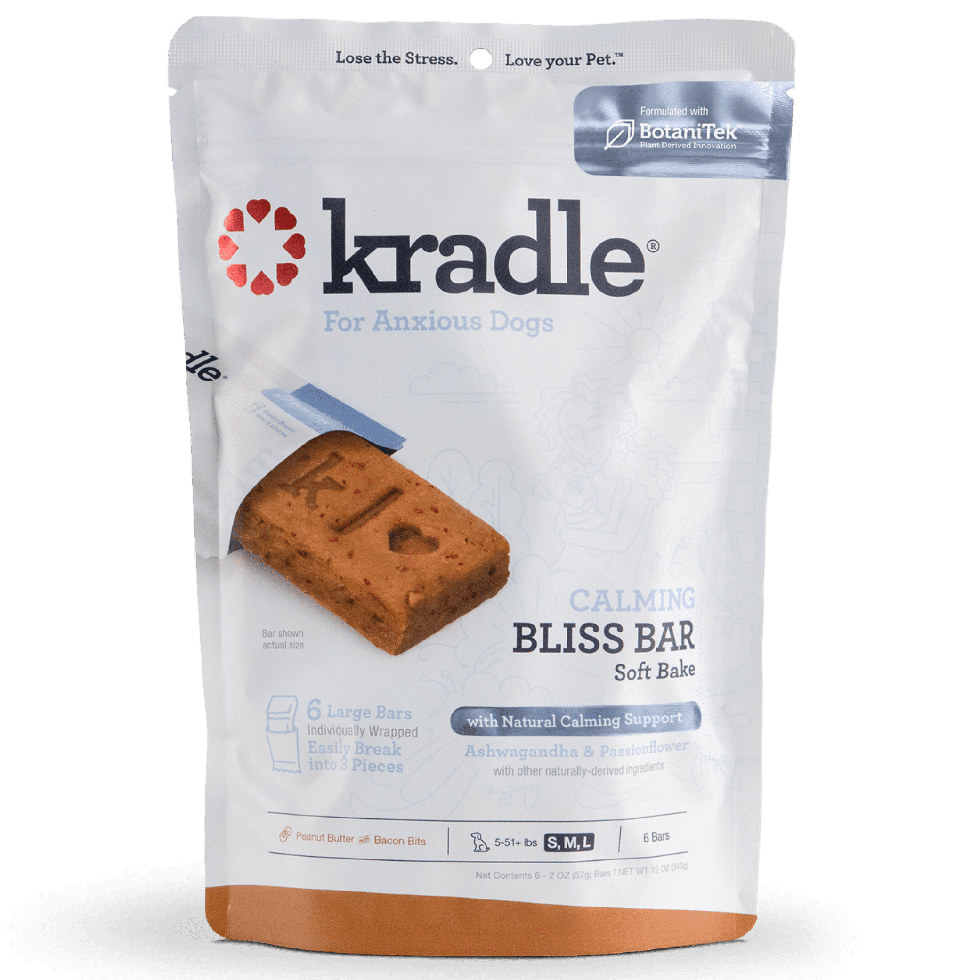
Best Overall
Kradle calming bliss bars.
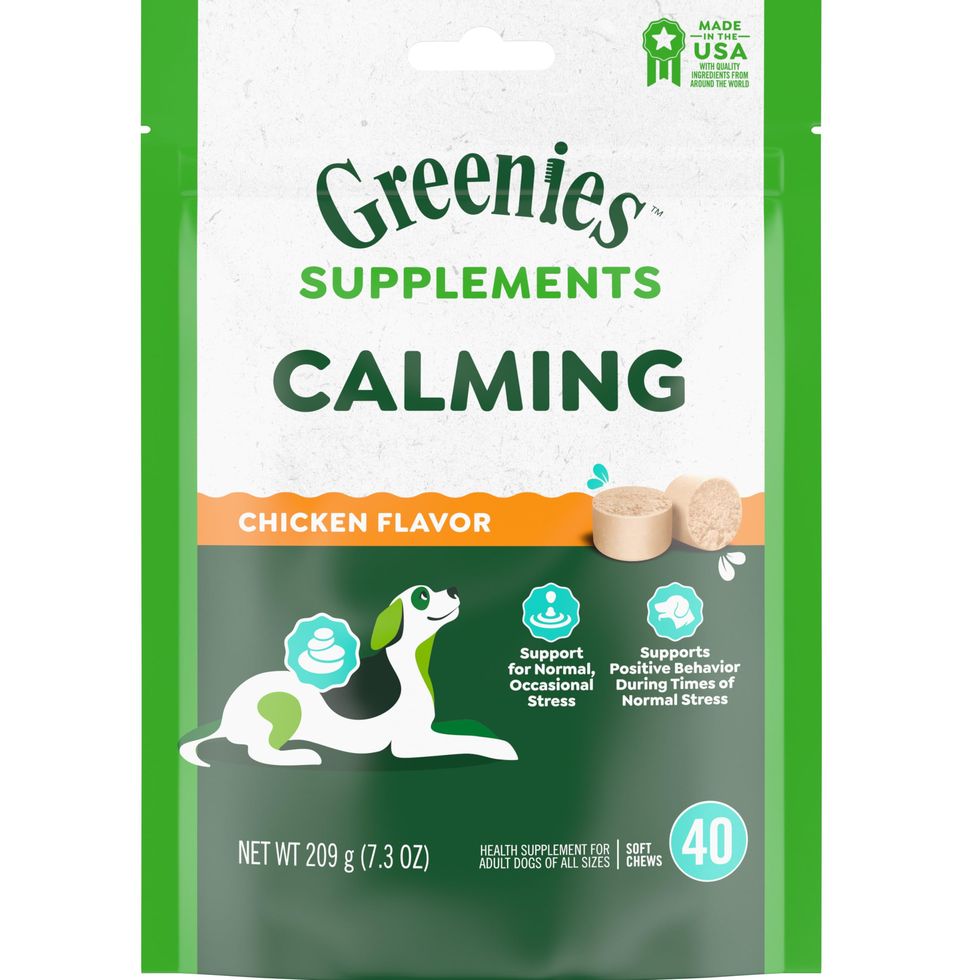
Greenies Calming Chews
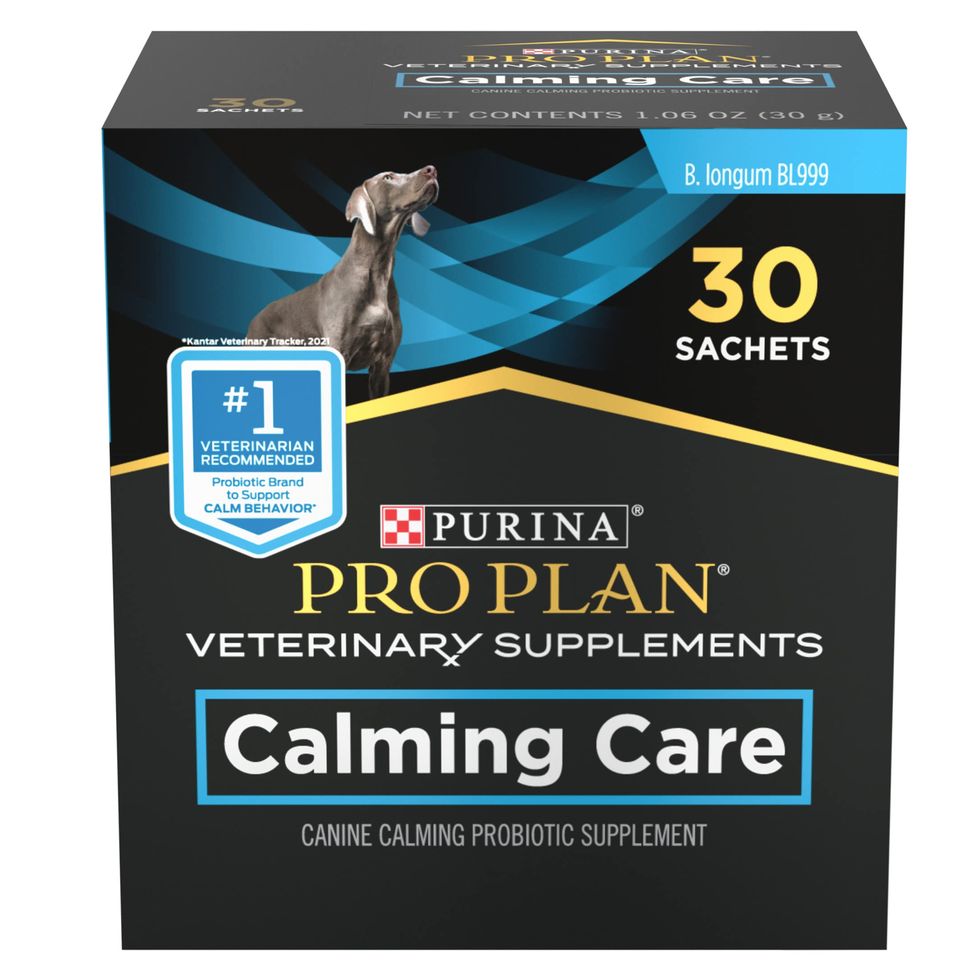
Best for General Anxiety
Purina pro plan calming care.

Best for a Stressful Event
Vetri science composure pro.
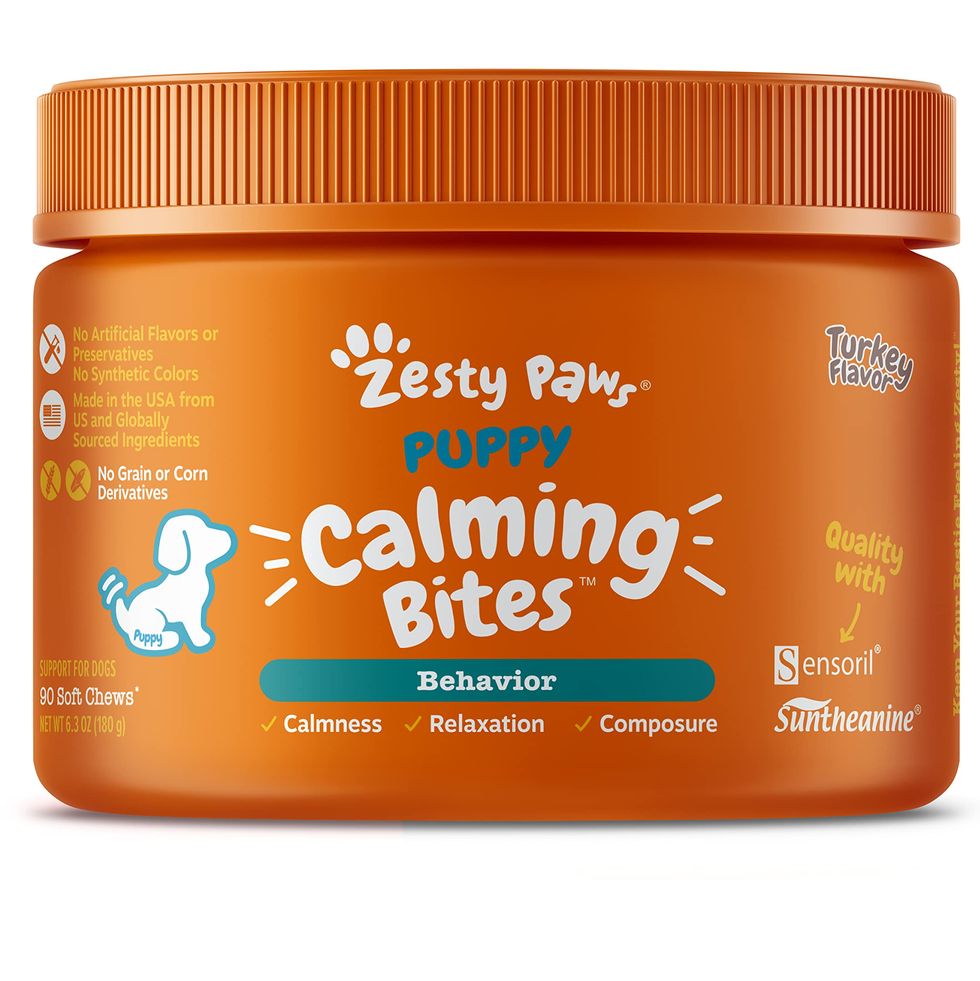
Best for Puppies
Zesty paws calming bites.
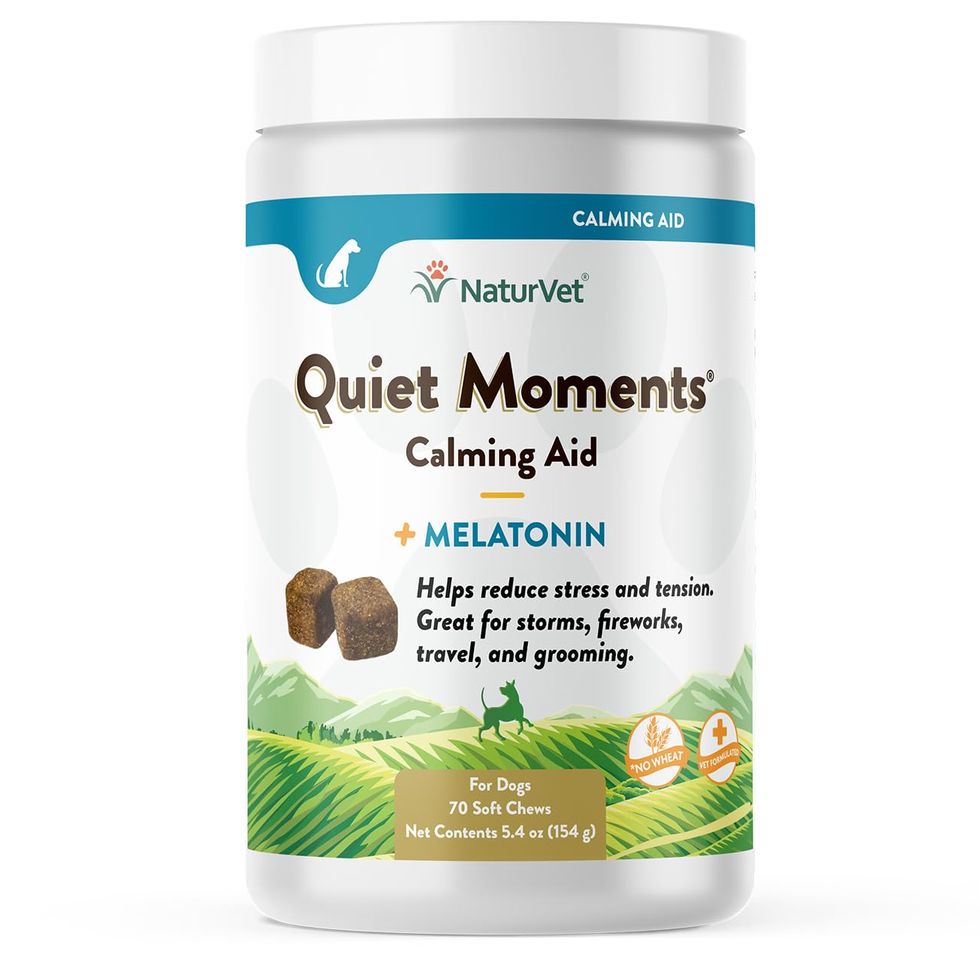
Best With Melatonin
Naturvet quiet moments.

Redbarn Bully Springs
To find the best calming treats for dogs, we sought the advice of Dr. Hammond and Lisa Lippman, D.V.M. , a veterinarian and director of virtual medicine for Bond Vet , asking them to weigh in on the ingredients they recommend for canine patients. Note that our list omits CBD and hemp dog treats , as our GH Institute nutrition experts don't yet believe there's enough clinical research to recommend them for dog anxiety. While there is some research showing CBD can help dogs with pain, Dr. Hammond says that she recommends using it "with caution and after consultation with a veterinarian." In general, it's good advice to speak to your veterinarian before feeding any dietary supplement to your dog .
Kradle is Dr. Hammond's top choice for calming dog treats. "It incorporates natural ingredients such as passionflower and L-tryptophan [an amino acid], which have been shown to have calming effects on dogs, " she said. The brand's soft Bliss Bars are in a dog-pleasing peanut butter-bacon flavor.
The brand suggests that you give a serving before a stressful event such as you leaving for work (separation anxiety is real!), a thunderstorm rolling in or a planned car ride. These can get pricey, especially if you have a big dog or intend to use these daily. For dogs who like to gnaw, the brand also makes hard chews .
Greenies chicken-flavored calming supplements has the only under-$20 pricetag on our list, and it's also an easy brand to find in many supermarkets, pet stores and mass merchants. The brand touts it for use in times of occasional (but normal) canine stress based on its lead ingredients, L-tryptophan and L-theanine (another amino acid), which may help reduce anxiety and stabilize mood , respectively.
These are relatively new for Greenies so there's not as many online reviews to read, but it's is a trusted brand that also makes some of our favorite cat treats .
Purina formulates this daily probiotic supplement for dogs that display general anxiety in the form of pacing, spinning, whining and/or barking. The brand says its proprietary strain of probiotics can help calm your dog, but there is no clinical study on it. We like that the powder is simple to sprinkle over your dog's regular food.
The brand cautions that it might take up to six weeks to see results, which can feel like a long stretch to dog owners, but some online reviewers report seeing much faster improvement. If you just want to calm your dog in a one-time stressful situation, such as a vet visit, you might want something more fast-acting.
Composure is a brand that Dr. Lippman trusts, and these chews are marketed as a way to calm a dog for a single stressful event that pops up from time to time, such as the need for a nail clipping or grooming session, fireworks or if you hear a thunderstorm rolling in.
Vetri Science says Composure will start working in a half hour, so you don't have to wait for weeks to see a behavior change — but these are not meant to be daily supplements, just as needed during stressful events. Like others, its powered by L-tryptophan and L-theanine, but the first ingredient is actually thiamine, a B vitamin, which, when deficient, can affect a dog's nervous system .
If you have a hyper or anxious puppy, this blend may be for them, made for a dog from 8 weeks to 12 months old . It uses chamomile and passionflower, two of the ingredients recommended by Dr. Hammond, plus other plant-based ingredients such as valerian and ginger. The small, soft bites are turkey flavored. Zesty Paws also makes a peanut butter flavor for fully grown dogs, and the supplements have more than 14,000 five-star Amazon reviews.
The right dose of melatonin can make an animal sleepy , so if that's what you're hoping to achieve — your dog napping in the car instead of whining at the window, or resting sleepily while visitors are over for dinner — this could be the calming dog treat for you. These chews also contain plenty of other calming ingredients such as chamomile, passionflower and L-tryptophan.
But note that an incorrect dose of melatonin can sometimes produce the opposite effect and increase a dog's heart rate or cause confusion , so dose carefully. If you want to further promote a calming atmosphere you might also try the brand's herbal calming room spray .
One pet owner with an anxious Spaniel swears these chews work wonders. "It's a vigorous chew experience, and he's always calm and happy afterward ," they said. So as an alternative to giving your dog a treat with calming ingredients, you can give your dog a long-lasting chew treat that will calm his troubles . It keeps a dog busy and distracted! And bully sticks are pricey, but made with just one single, natural ingredient.
RELATED: The Most Indestructible Dog Toys
How we chose the best calming dog treats

Two veterinary experts weighed in on this story: Sylvalyn Hammond , D.V.M., a general practice veterinarian in South Carolina, and Lisa Lippman , D.V.M., veterinarian and director of virtual medicine for Bond Vet , a chain of veterinary offices up and down the East Coast. We also checked in with Katie Brenner, a compliance officer with the National Animal Supplement Council .
On top of that, we consulted our in-house Good Housekeeping Institute experts on this guide, including Sabina Wizemann , a chemist who substantiates claims and evaluates products for the Good Housekeeping Seal , and Stefani Sassos , a registered dietitian who directs the Nutrition Lab. Last but not least, we interviewed real-life dog owners and sifted through online reviews for a full picture of real-life use of canine dietary supplements.
What to look for when shopping for calming dog treats

"Supplements are not tightly FDA-regulated , and different things may work for different pets," Dr. Lippman says. "So it's really about looking for trusted brands and trying them out to see what works for your pet."
Dr. Hammond agrees. "Every pet is unique, and individual factors such as age, breed, health status and concurrent medications must be considered before starting any new supplement regimen," which is why it's smart to first check in with your vet. Then, when shopping, consider:
✔️ Ingredients , including but not limited to:
- Chamomile: A medicinal herb with relaxing effects in dogs . (And humans, who enjoy chamomile tea.)
- Passionflower: Also a calming herb used for anxiety and sleep issues .
- Ashwagandha: Traditional, medicinal plant used to combat stress .
- L-theanine: A natural amino acid that can promote relaxation .
- L-tryptophan: An essential amino acid that works with serotonin and melatonin to help reduce anxiety . L-tryptophan is not made by a dog's body so it can only be consumed as food or treats.
- Ginger: There is some evidence that ginger can help with motion sickness and vomiting .
- Rosemary: This herb is thought to possibly enhance a dog's mood .
- Valerian: A flowering plant known for its sedative qualities .
- Melatonin: A sleep-regulating hormone that can help with stress .
✔️ Made in the U.S.: Dr. Hammond prefers treats that aren't imported, because the FDA has established Good Manufacturing Practices (GMPs) for American companies to follow that help ensure the safe composition of all dietary supplements, including ones for pets. All the treats on our list are made in the U.S., though some ingredients are globally sourced.
✔️ NASC-Certified: Both vets recommend looking for the NASC-Certified seal on dog supplements. Brands that are certified by the National Animal Supplement Council pay to be audited for quality so they can carry that third-party certification. Everything on our list is NASC-Certified except for the Bully Springs, which are not sold as supplements. (It's the action of chewing that is calming with those, not the ingredients.)
When to see a vet

If calming treats aren't helping, there is more to try. "There are non-treat products to help calm dogs, like ThunderShirts , which provide gentle pressure to help reduce anxiety," Dr. Hammond says. "There are calming sprays containing pheromones, plus environmental modifications such as creating a quiet, safe space for your dog during stressful events. Regular exercise, mental stimulation and positive reinforcement can also contribute to overall stress reduction in dogs."
Need more help? Consult your vet about a prescription. "When the anxiety is really bad, see your vet because oftentimes, drugs are really helpful," Dr. Lippman says. "Drugs are a big part of a vet practice in that we want to do things that take stress off of our animals. It's better living through chemistry."
Why trust Good Housekeeping?

For more than 120 years, the Good Housekeeping Institute has been dedicated to helping consumers make sound choices, and helping families with all things pet care is a part of that. Many of our Lab experts are dog and cat owners and we test things such as dog jackets and cat carriers in the Lab, in our own homes and in consumer-tester homes as well.
Journalist Jessica Hartshorn has owned pets all of her life, though admittedly now has two cats and no dogs. Fortunately she shares a home with her dog-owning cousin and has many dog parent friends who share their wisdom and are willing to test dog products. She also leans on the expertise of Good Housekeeping Lab experts and the brand's consumer testers.

@media(max-width: 64rem){.css-o9j0dn:before{margin-bottom:0.5rem;margin-right:0.625rem;color:#ffffff;width:1.25rem;bottom:-0.2rem;height:1.25rem;content:'_';display:inline-block;position:relative;line-height:1;background-repeat:no-repeat;}.loaded .css-o9j0dn:before{background-image:url(/_assets/design-tokens/goodhousekeeping/static/images/Clover.5c7a1a0.svg);}}@media(min-width: 48rem){.loaded .css-o9j0dn:before{background-image:url(/_assets/design-tokens/goodhousekeeping/static/images/Clover.5c7a1a0.svg);}} Product Reviews

The Best Humidifiers for Babies
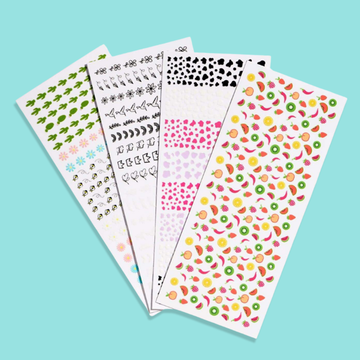
The Best Nail Stickers and Wraps
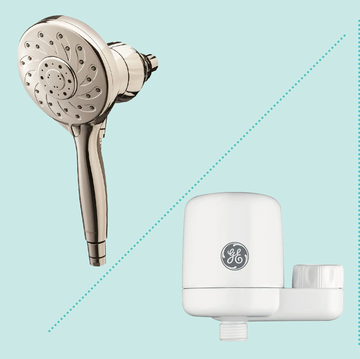
The Best Shower Filters
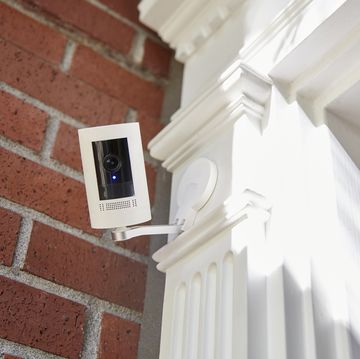
The 5 Best Outdoor Security Cameras
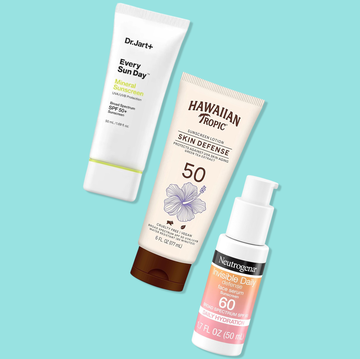
The 14 Best Sunscreens of 2024
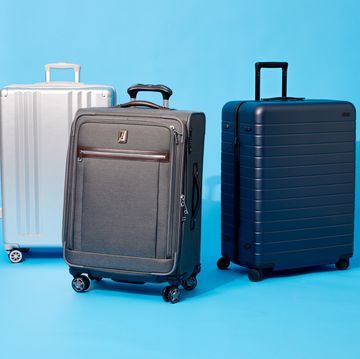
The Best Checked Luggage
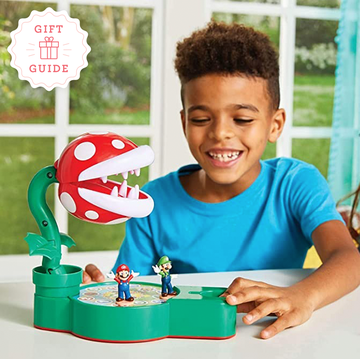
The Best Gifts for 7-Year-Old Boys

The Best Dresses on Amazon
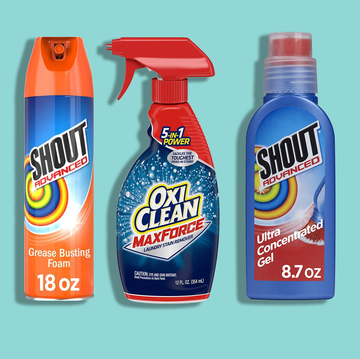
Best Stain Removers for Clothes
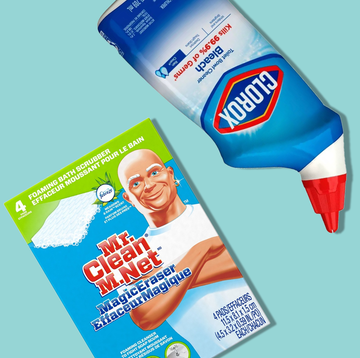
The Best Bathroom Cleaners

I Tried Skinvive, the New "Injectable Moisturizer"

IMAGES
VIDEO
COMMENTS
Tips for traveling with dogs. 1. Spend time to train your dog to stay calm. As mentioned above, the best way to deal with travel anxiety in dogs is to manage their behaviour. Take some time to gradually expose your dogs to traveling, providing plenty of positive reinforcement with the use of treats.
The 7 Best Travel Sickness Tablets for Dogs. 1. The best natural tablets: Ark Naturals Happy Traveler Soft Chews. RATING: 3.8/5 Stars. Ark Naturals Happy Traveler Soft Chews might be the best all-natural way to help your pup with car sickness or anxiety. These soft chewable tablets are a great natural alternative to pet prescriptions and can ...
Solliquin. Solliquin is a daily chewable tablet containing two plant extracts — magnolia and phellodendron — to help calm anxious dogs. It also contains L-theanine, an amino acid that is safe for dogs and has been shown to relieve dog anxiety. Purina Pro Plan Calming Care Supplement.
Common human travel sickness tablets that can be used for dogs include: Dramamine or Gravol, active ingredient: dimenhydrinate. Dosing for dogs: 4 to 8 mg per kilogram of your dog's weight, up to 3 times daily. Benadryl, active ingredient: diphenhydramine hydrochloride. Dosing for dogs: 2 to 4 mg per kilogram of weight, 2 to 3 times daily.
Spray a little (a spritz or two) of the travel spray on your dog's favorite stuffed toy or blanket prior to car travel, or put the Adaptil Comfort Zone Collar on your dog to help decrease their anxiety. Adaptil Calming Travel Spray. Available at: Adaptil Calm On-the-Go Collar. Available at:
Zoni Pets Happy Hoodie Calming Cap for Dogs at Amazon ($13) Jump to Review. Best Calming Chews: Nutramax Laboratories Nutramax Solliquin Calming Behavioral Health Supplement at Amazon ($21) Jump ...
The Thundershirt Dog Anxiety Treatment is a gray, medium-sized shirt that applies gentle pressure to help dogs calm down during moments of anxiety, fear, and over-excitement. It is effective in soothing dogs during experiences such as fireworks, thunderstorms, separation, travel, vet visits, and more, without the need for training or medication.
Gabapentin is a medication that can be used for several purposes, including seizure control, anxiety relief, sedation, and pain management. It's a common dog sedative for grooming, travel, vet visits, and other short-term events. Gabapentin is generally considered safe in healthy pets, with minimal side effects.
While proactive measures are essential to prevent and alleviate fear, anxiety and stress (FAS) and make for a fear free veterinary experience, many pets arrive from travel fearful or anxious, or become fearful, anxious, or painful during the visit. In fact, 77.8% of both dogs and cats are reported to be fearful even before entering the clinic ...
Travel sickness tablets can alleviate the symptoms of travel sickness, making the journey more comfortable and enjoyable for everyone involved, especially if your pet suffers from travel anxiety. In this article, we will explore the causes and symptoms of travel sickness in dogs, the benefits of using travel sickness tablets, and some of the ...
To determine whether your dog's dislike of car rides is due to motion sickness or travel anxiety, it's best to start with a visit and conversation with your vet. This can help rule out any underlying medical issues that could mimic the signs of motion sickness and travel anxiety (e.g., pain from a slipped disc or arthritis, an inner or ...
PRICE: $18.56. Bach RESCUE is a natural product prepared with a combination of 5 natural flowers. It is a product by Dr. Bach, best known for developing the Bach flower remedies. This sedative-free calming drop formula helps dogs and other pets with anxiety issues that generally arise during traveling.
This motion sickness can not only lead to nausea and vomiting, but may also play a role in travel-related anxiety for some dogs. (6) Cerenia® works by blocking the action of substance P, a chemical found within the emetic center that plays a role in vomiting. (6) This medication should be given 2 hours before travel, on an empty stomach with a ...
4. Clomipramine (Clomicalm®) Indications: separation anxiety, situational anxiety, compulsive disorders, irritability Clomipramine is the first FDA-approved treatment for separation anxiety in dogs.It can also be prescribed for other types of anxiety. It's a tricyclic antidepressant medication that works, in part, by increasing the levels of the nervous system chemical messengers serotonin ...
We have seen separation anxiety in dogs increase by 700%. Social anxiety in dogs related to contact with other dogs or cats rose from 16.5% in 2020 to 43.5% in 2022, with the fear of and anxiety about interaction with strangers increasing by 295%. This surpassed the fear of loud noises in dogs, which is usually the leading cause of dog anxiety. 2,3
Pro Tips: Actionable Advice for Using Anxiety Tablets For Dogs. Always consult your vet before administering any medication. Observe your dog's behavior closely when introducing a new medication. Keep an open dialogue with your vet about any side effects or concerns. Consider combining medication with behavioral training for a holistic approach.
Supplements and Travel Sickness Tablets for Dogs If your dog shows symptoms at even the jingle of the car keys, they may be starting to feel sick at just the thought of a car journey. For these dogs, where anxiety is a key factor in their discomfort, calming supplements can provide effective travel sickness relief.
2 Best Value Anxiety Meds for Dogs: Bach Rescue Remedy Anxiety Relief for Dogs Secondly, one of the most popular homeopathic supplements on the market, Bach Rescue Remedy, is a spray that comes in ...
When To See a Vet For Your Dog's Anxiety. See a vet right away if your dog's anxiety is affecting them emotionally, says Rachel Bean, a qualified veterinary nurse, leading canine first aider, and author of the iPET Network's Ofqual-regulated qualification in canine first aid.Also, seek help if anxiety stops your dog from engaging in important everyday activities, such as eating or exercise.
Pet owners, veterinarians, and studies have found that calming dog supplements are quite effective in providing anxiety relief. Some of the most effective anxiety supplements for dogs are CBD, tryptophan, melatonin, pheromones, and chamomile. The research on these remedies is still ongoing, but the results from the studies conducted so far are ...
Use: Paroxetine is given to dogs for chronic management of generalized anxiety and compulsive behaviors. It can often take a month or so to determine if Paroxetine will have the desired effect for a dog. Side effects: Lethargy, decreased appetite/anorexia, vomiting, restlessness, increased aggression.
REDUCES SITUATIONAL & TRAVEL ANXIETY: Calm Traveler is designed to reduce anxiety and nervousness associated with traveling, ease motion sickness and can destructive or aggressive behavior caused by separation anxiety. ... Amazon Brand - Wag Hip & Joint Chewable Tablets for Dogs, 60 Count (415) $6.99 ($0.12/Count) Top rated similar items. Page ...
5. YuMOVE Calming Care. 6. Adaptil Dog Appeasing Pheromone Collar. 7. Pets Purest Calming Bundle. Investing in travel sickness tablets for dogs ensures a vomit-free road trip that we all dream of…. After all, travels and adventures with our beloved furry friends can be a little stressful. Though a fun experience, if you don't have the right ...
This simple and relatively inexpensive tablet can help elevate travel sickness and make your pooch not feel as sick as a dog. This natural herbal product is said to reduce the effect of vehicle motion in dogs and cats. ... Studies have proved the ThunderShirt to reduce anxiety in dogs; in the study, more than 85% of dogs were less anxious when ...
Early signs of stress/car sickness in dogs include; panting, whining, vocalising, excessive yawning, drooling, pacing and restlessness. This can progress to vomiting and in some cases urinating and defecating. If your dog associates the car with feeling sick they are naturally going to become fearful of getting in the car.
Chamomile: A medicinal herb with relaxing effects in dogs. (And humans, who enjoy chamomile tea.) Passionflower: Also a calming herb used for anxiety and sleep issues. Ashwagandha: Traditional ...